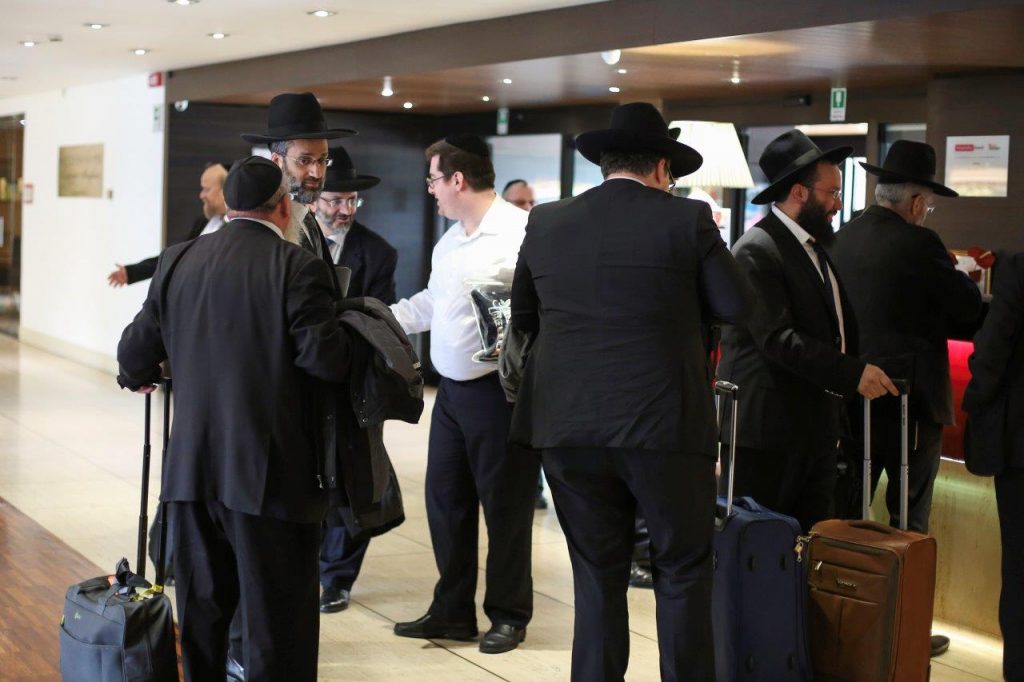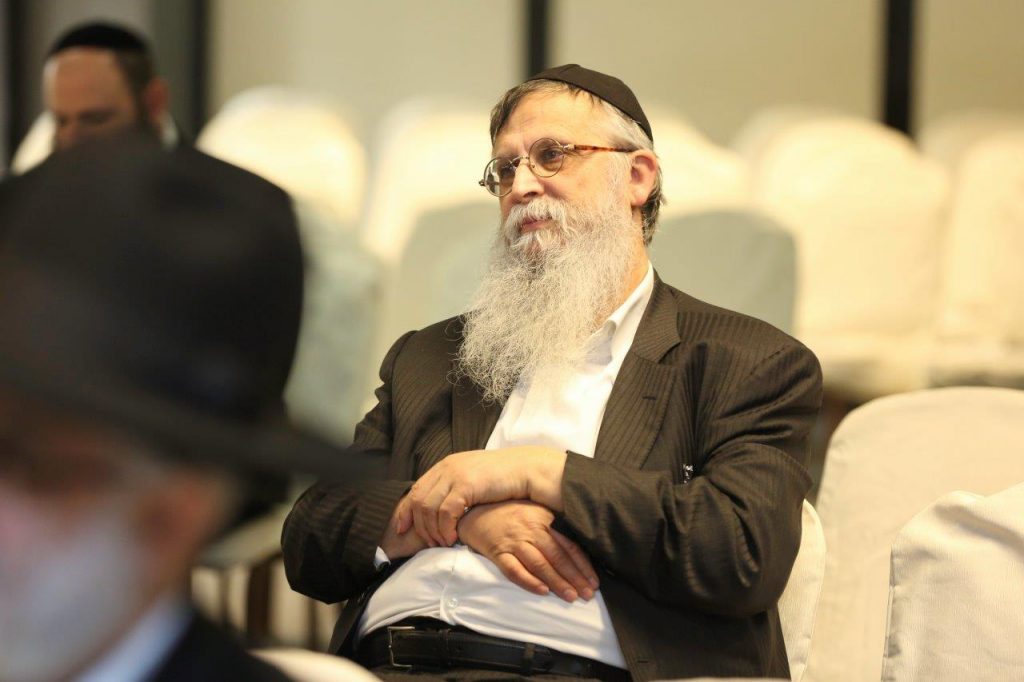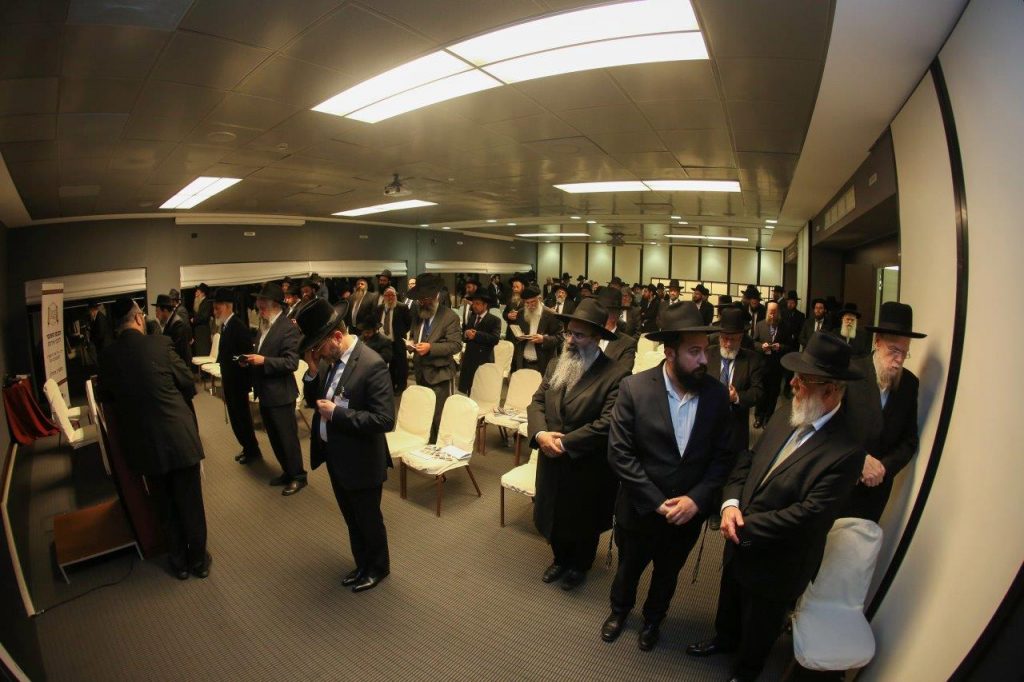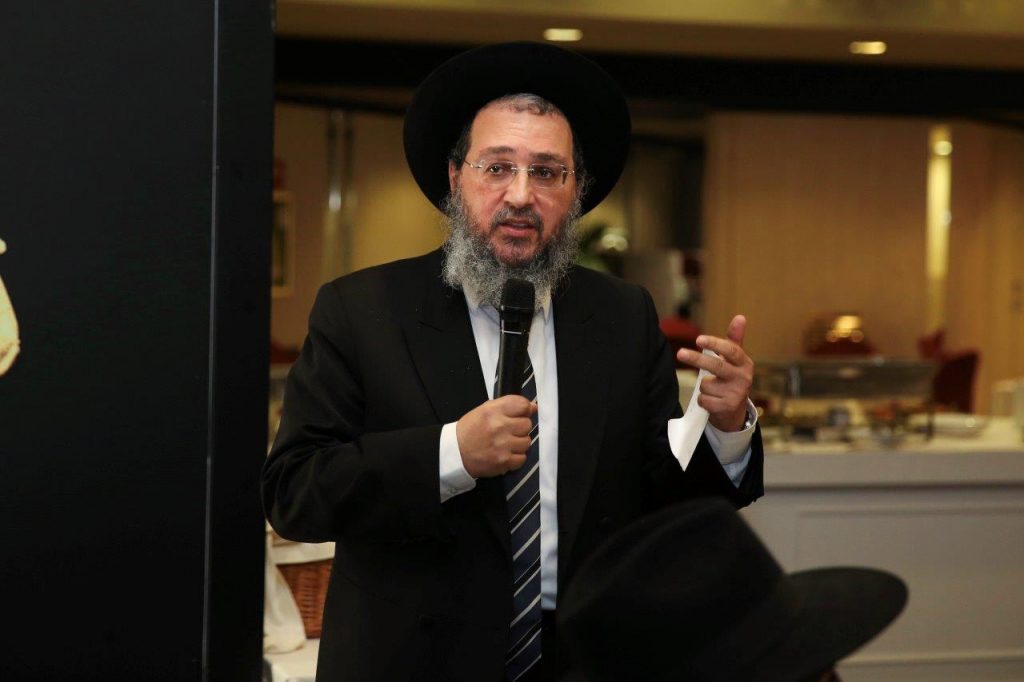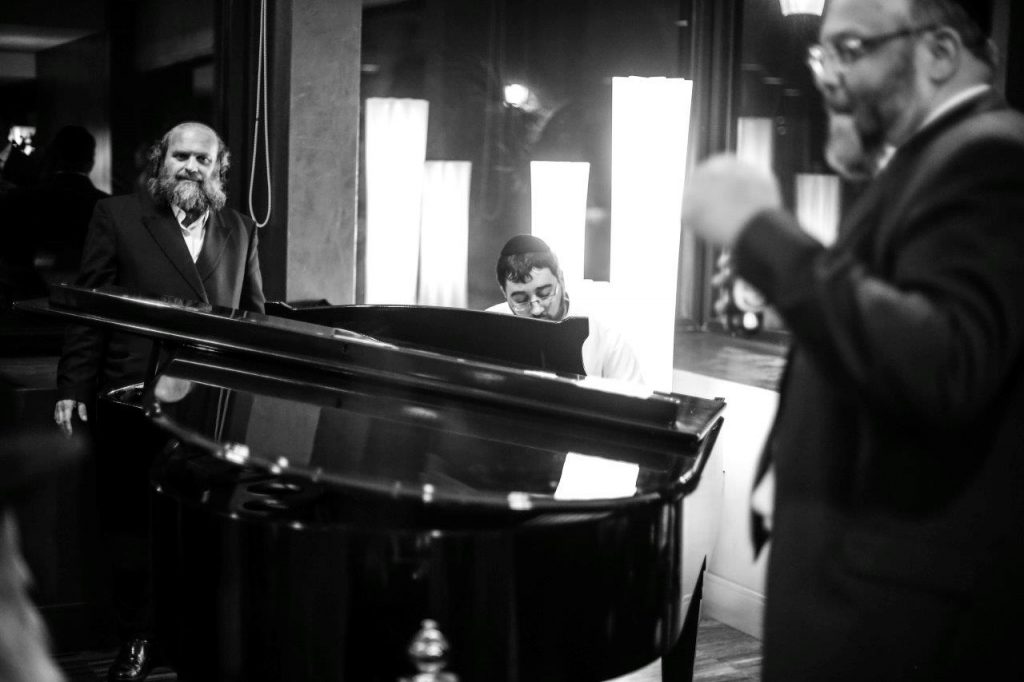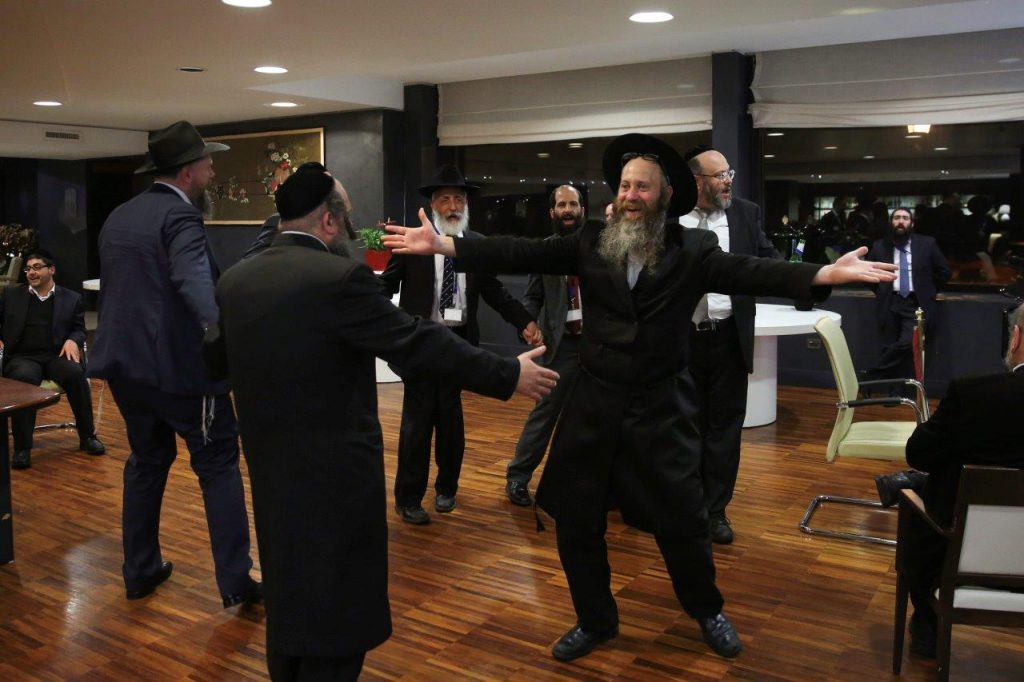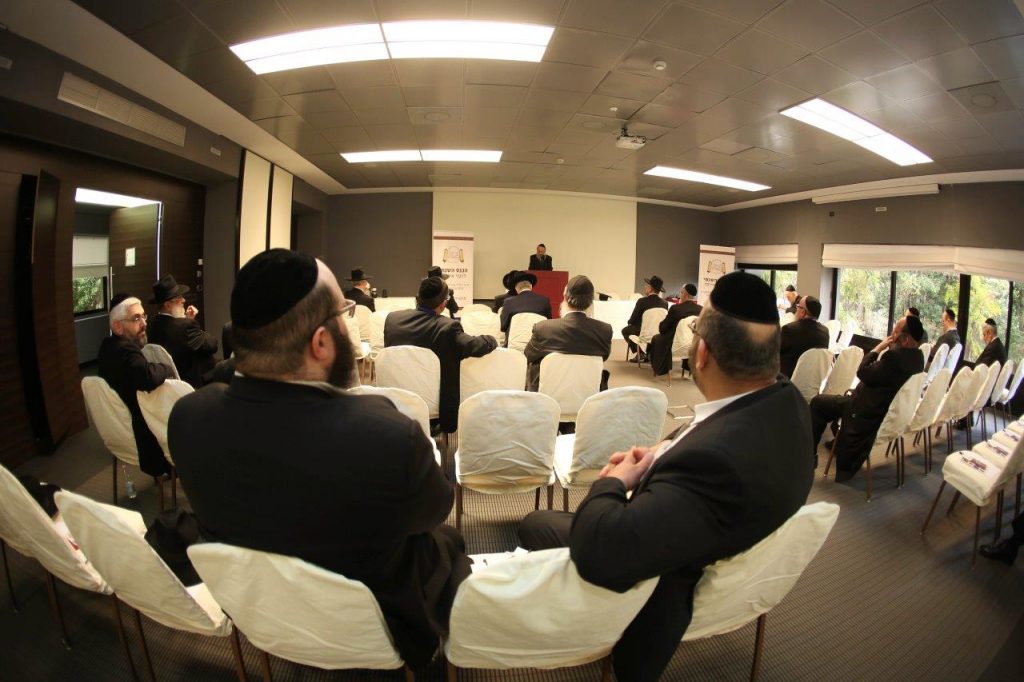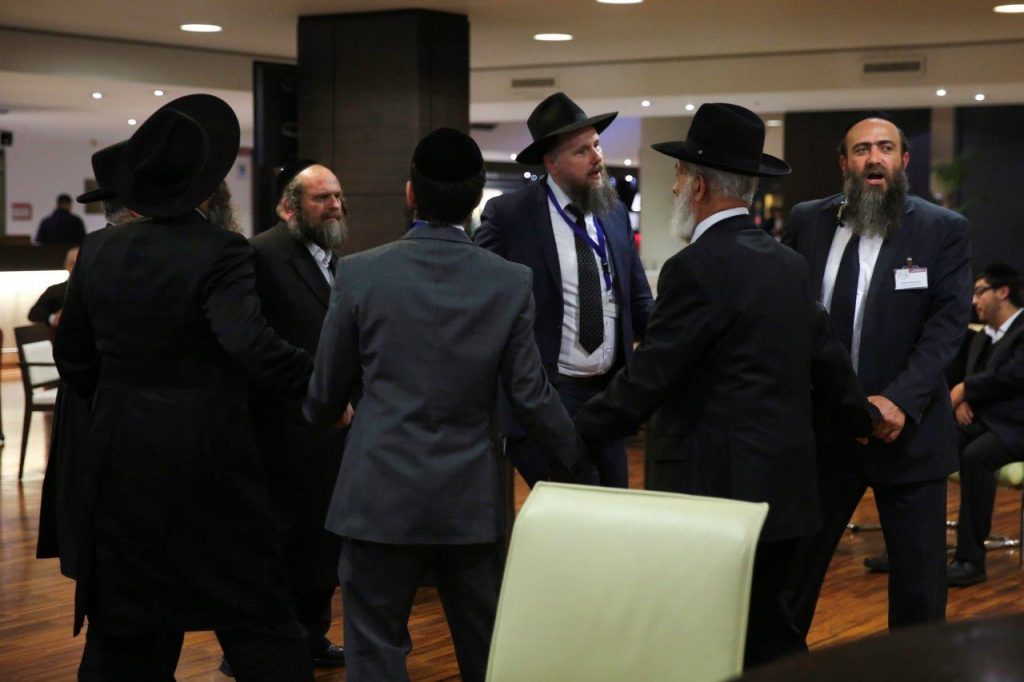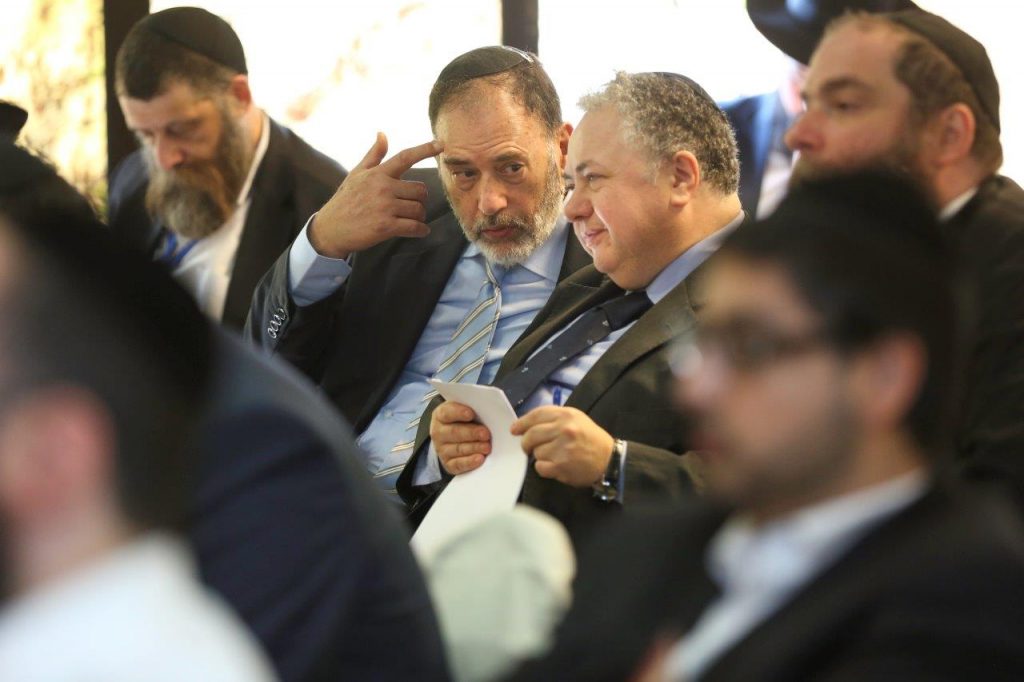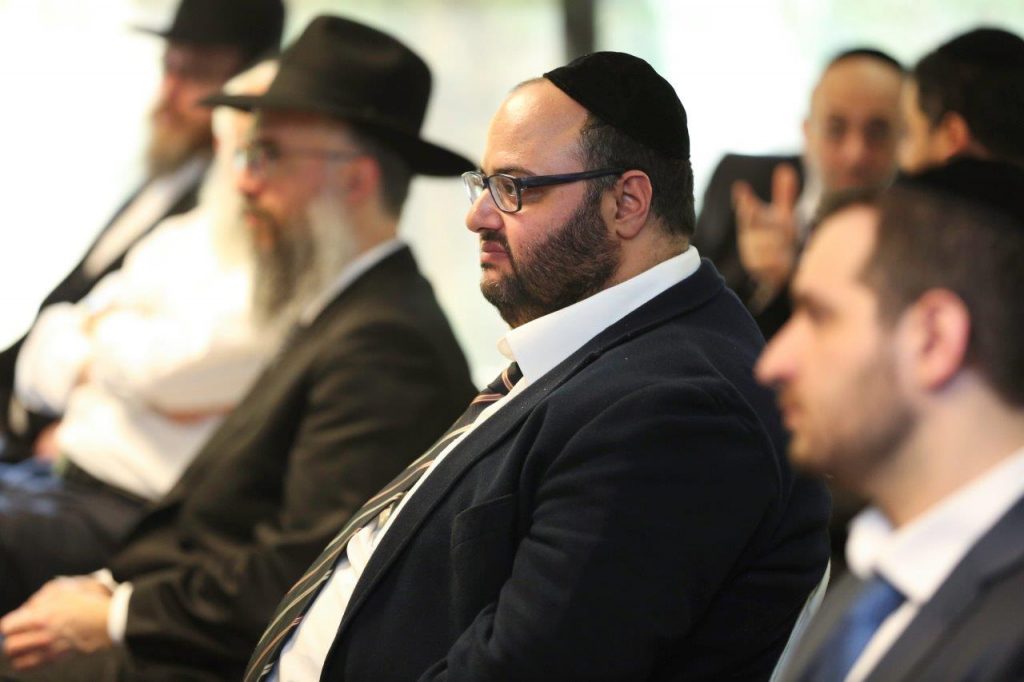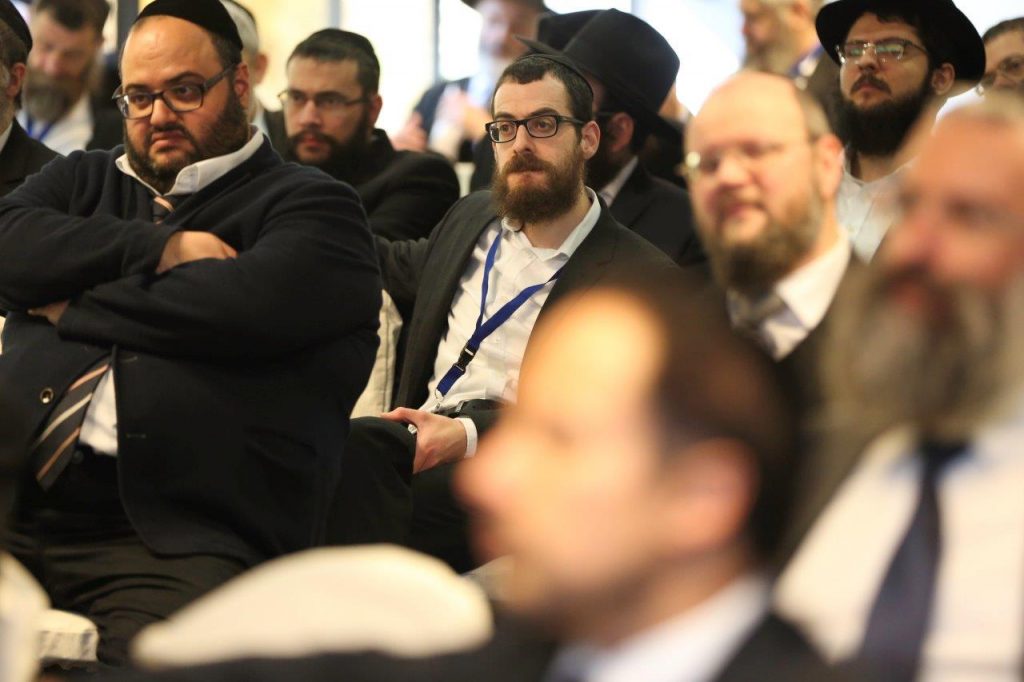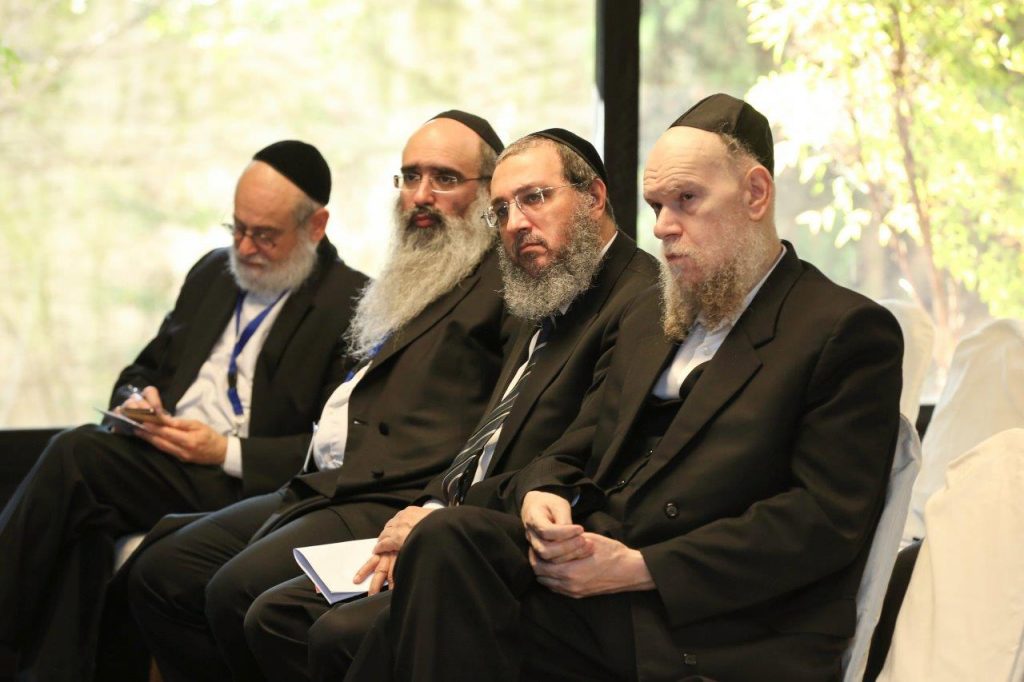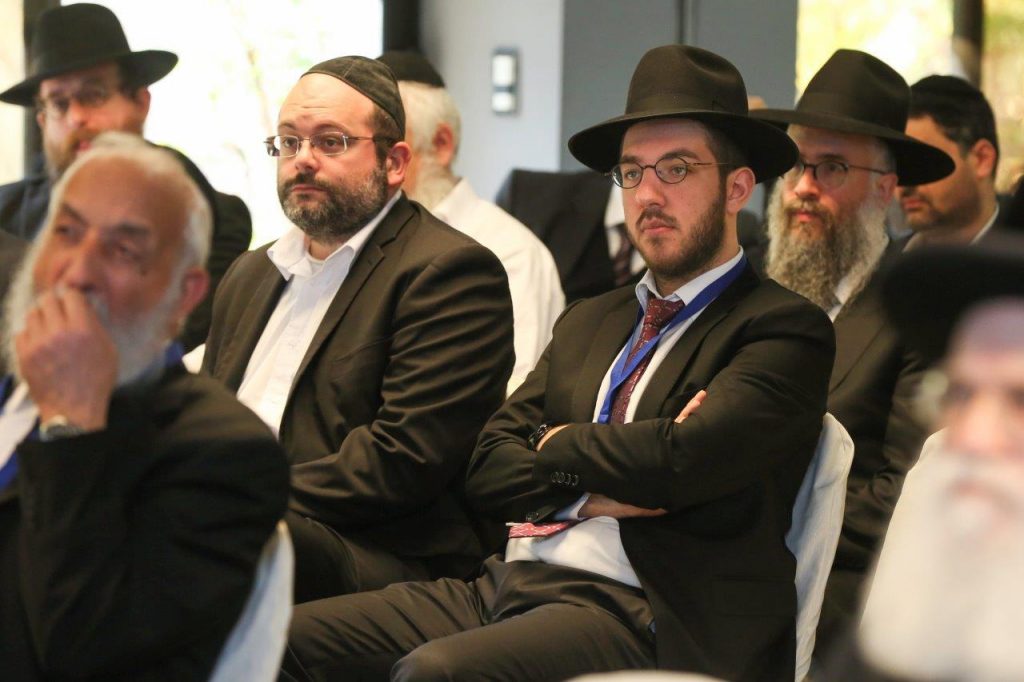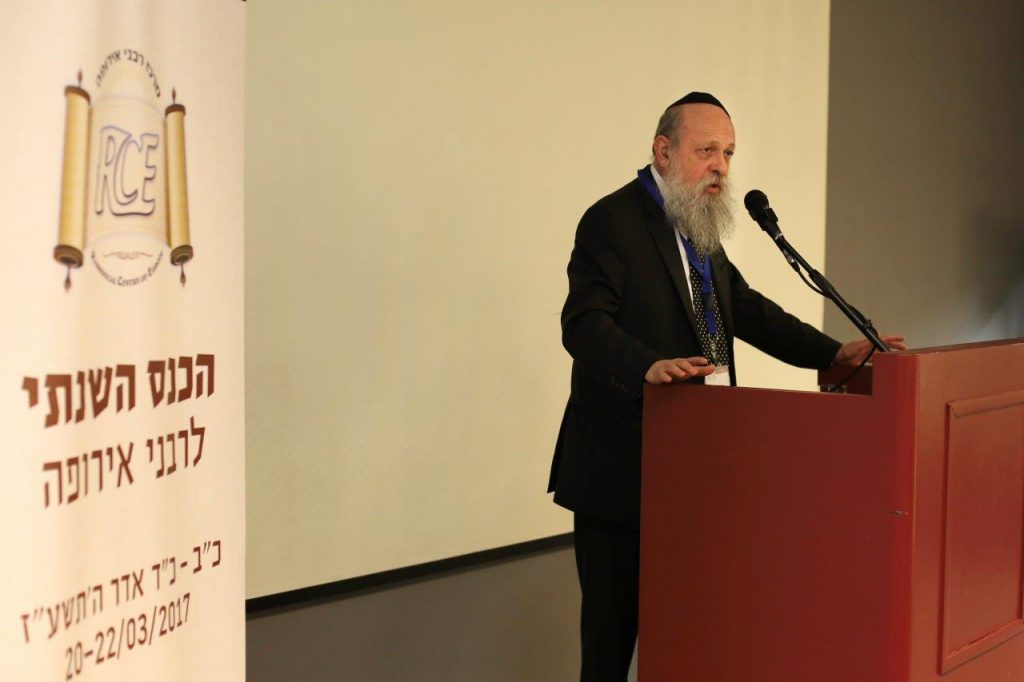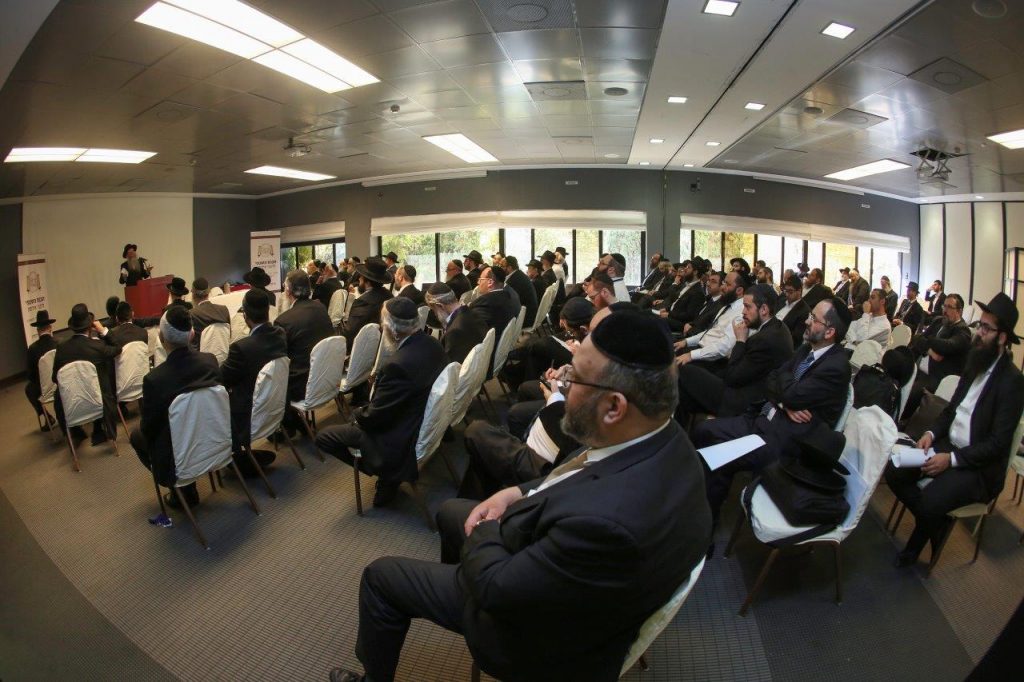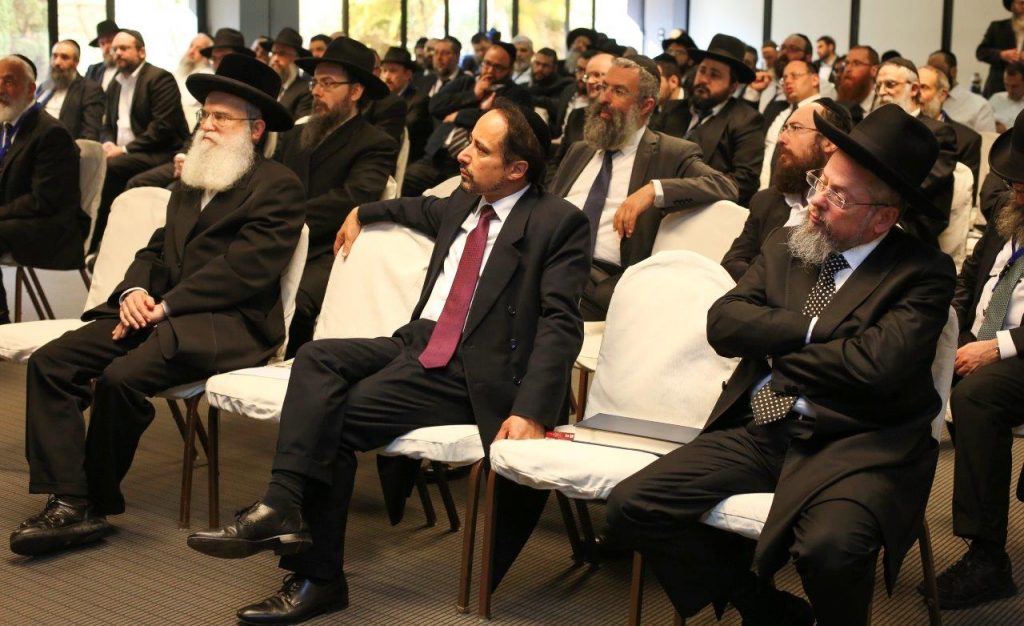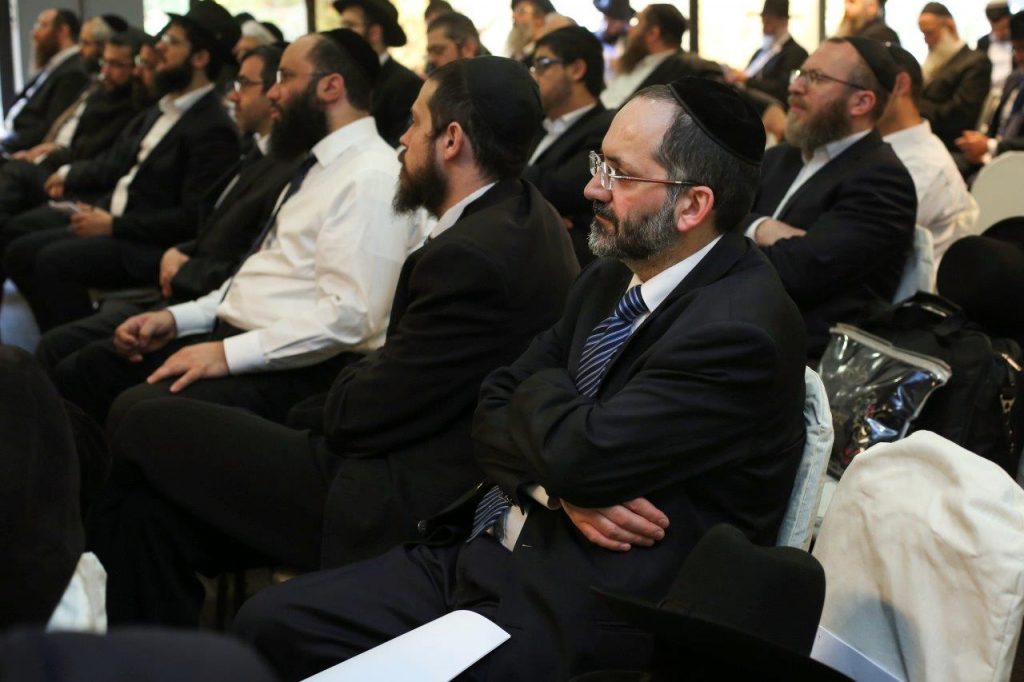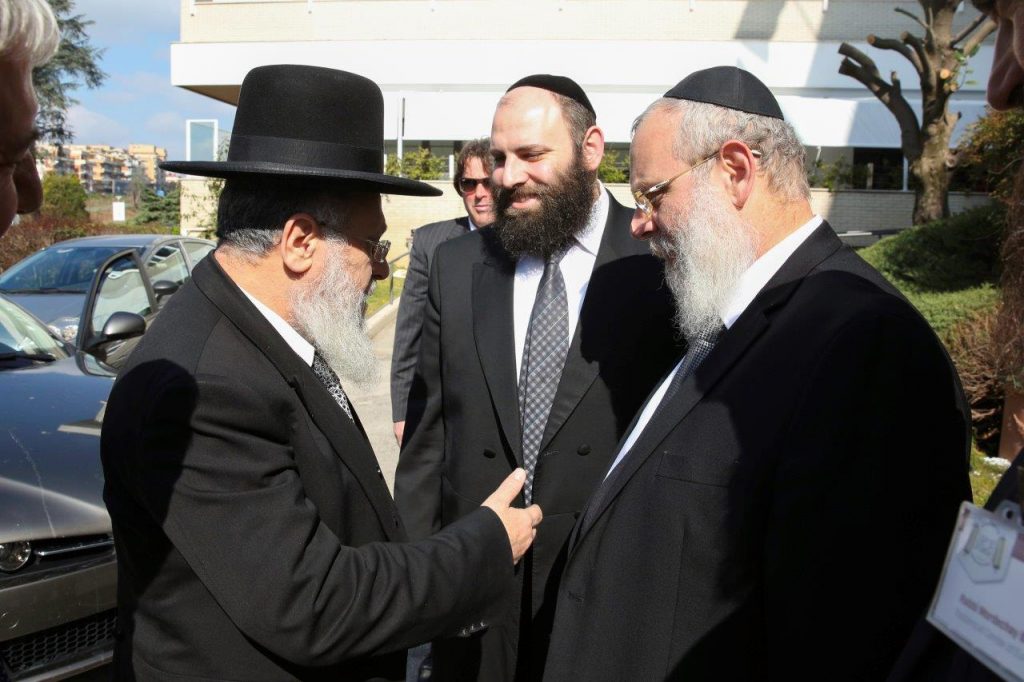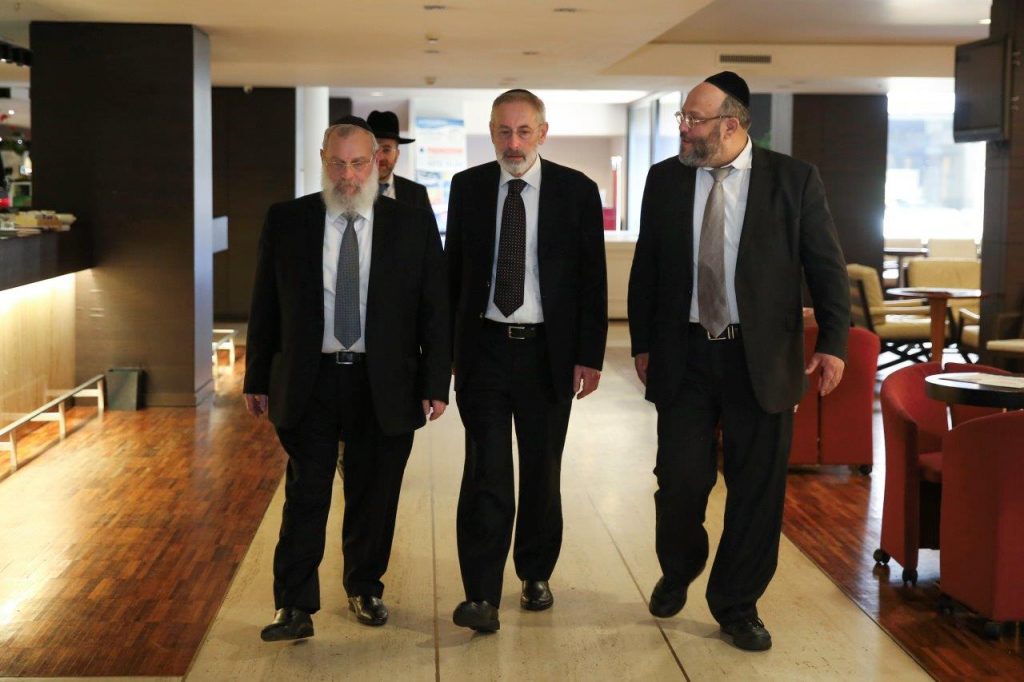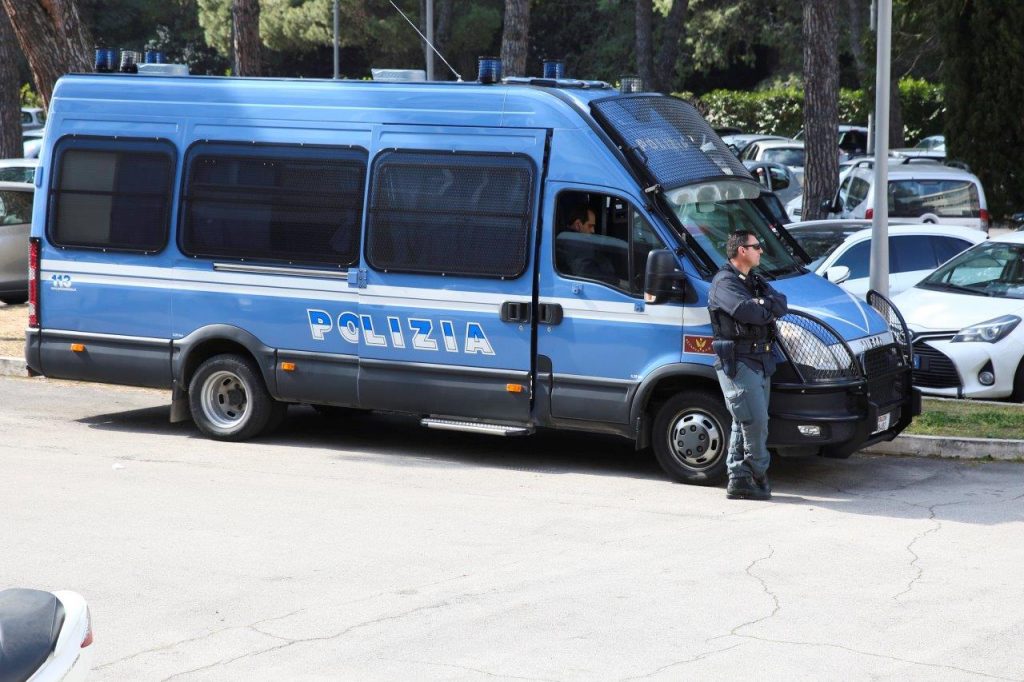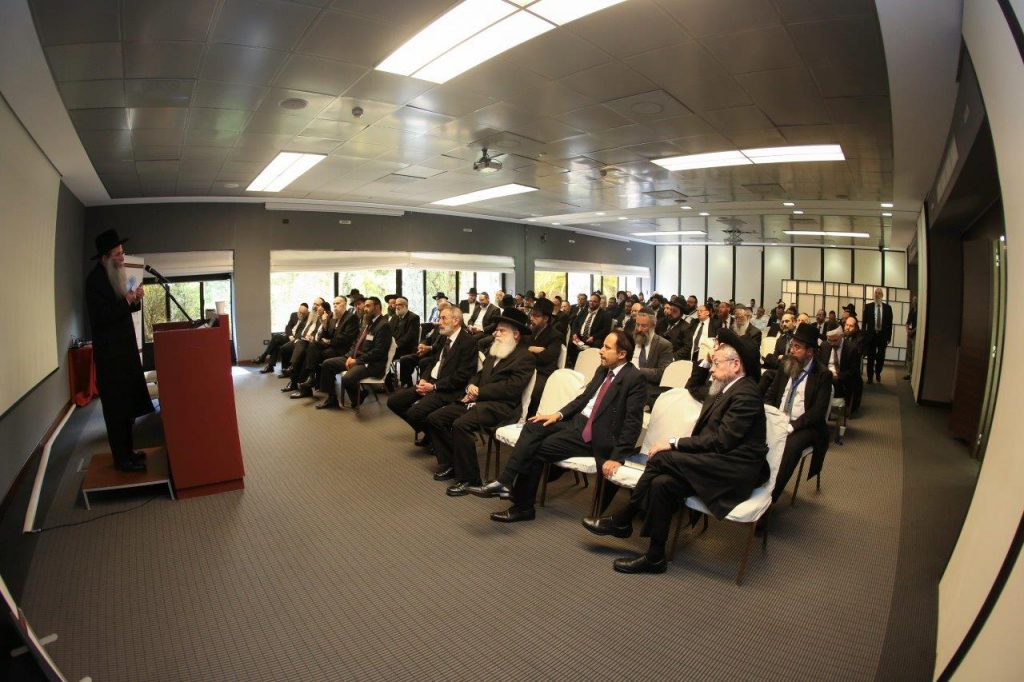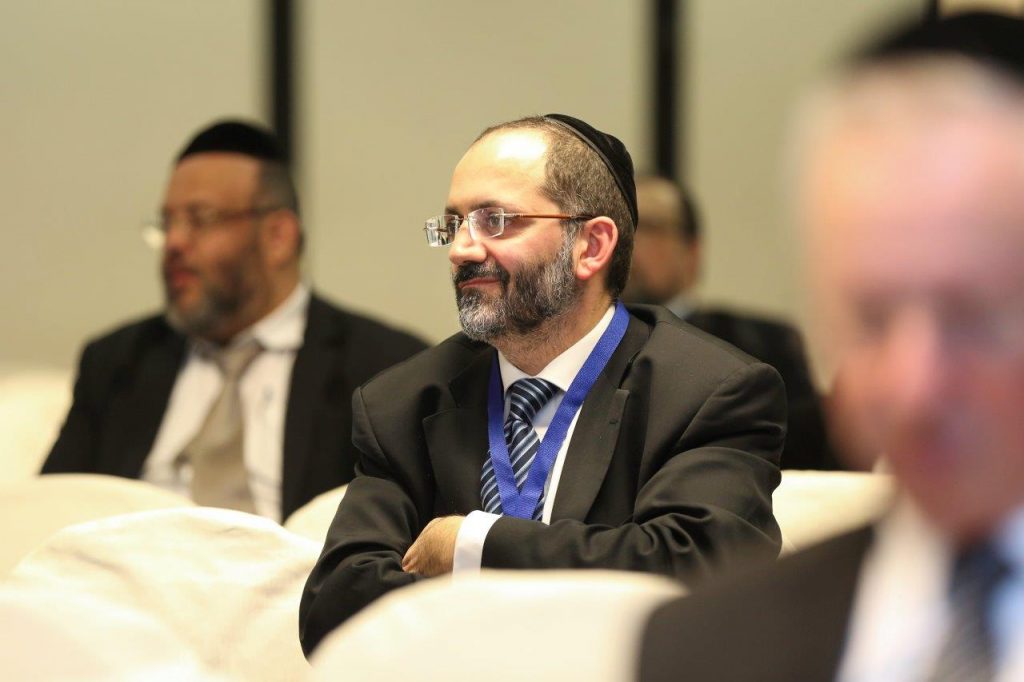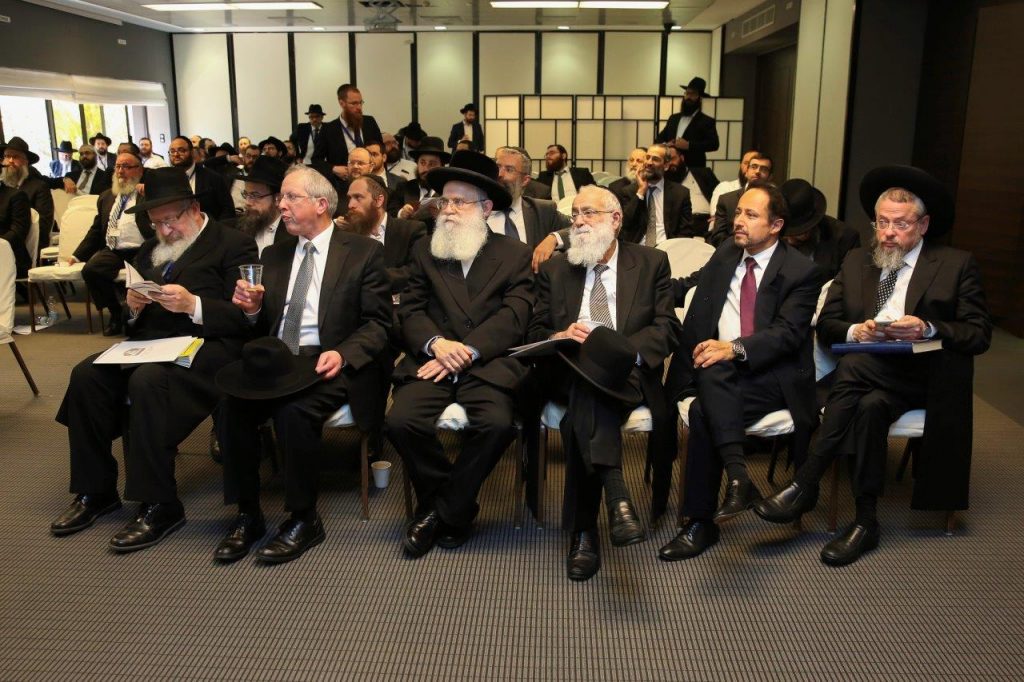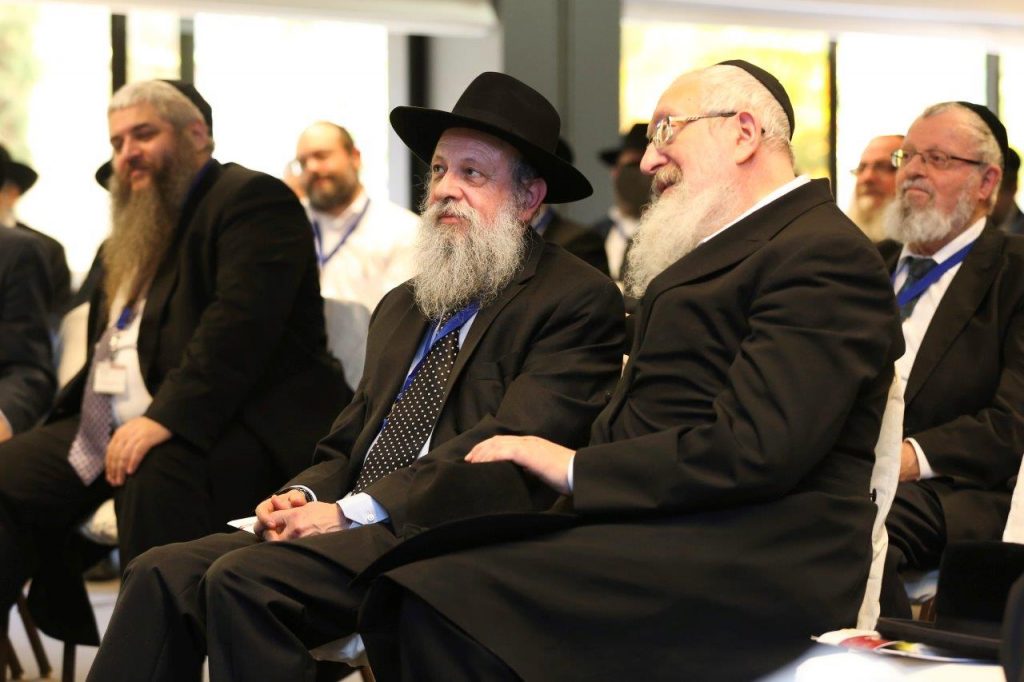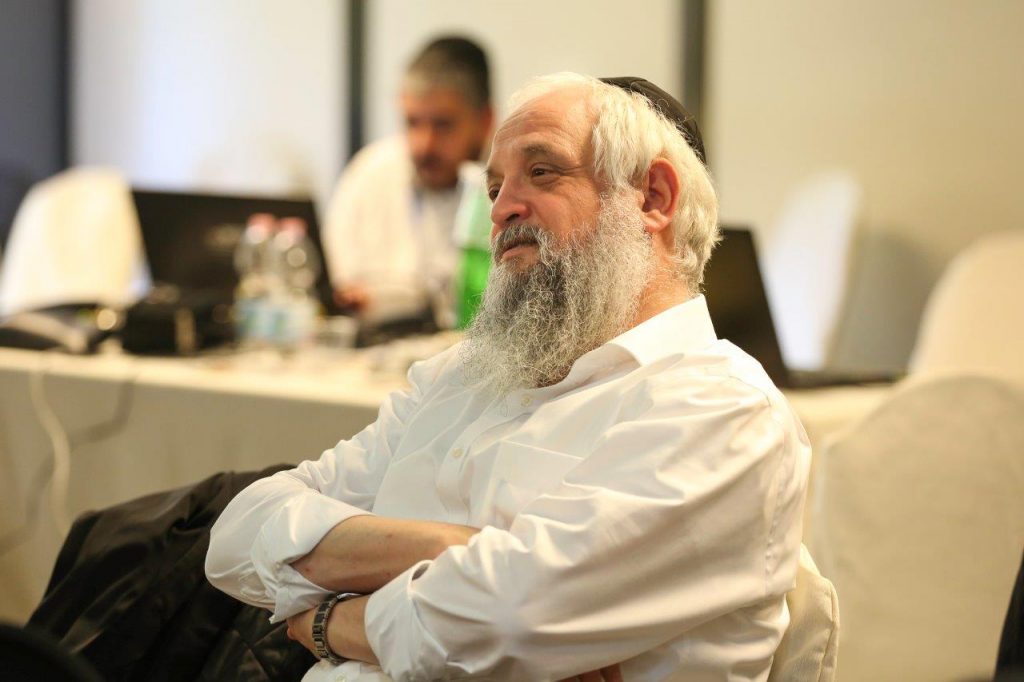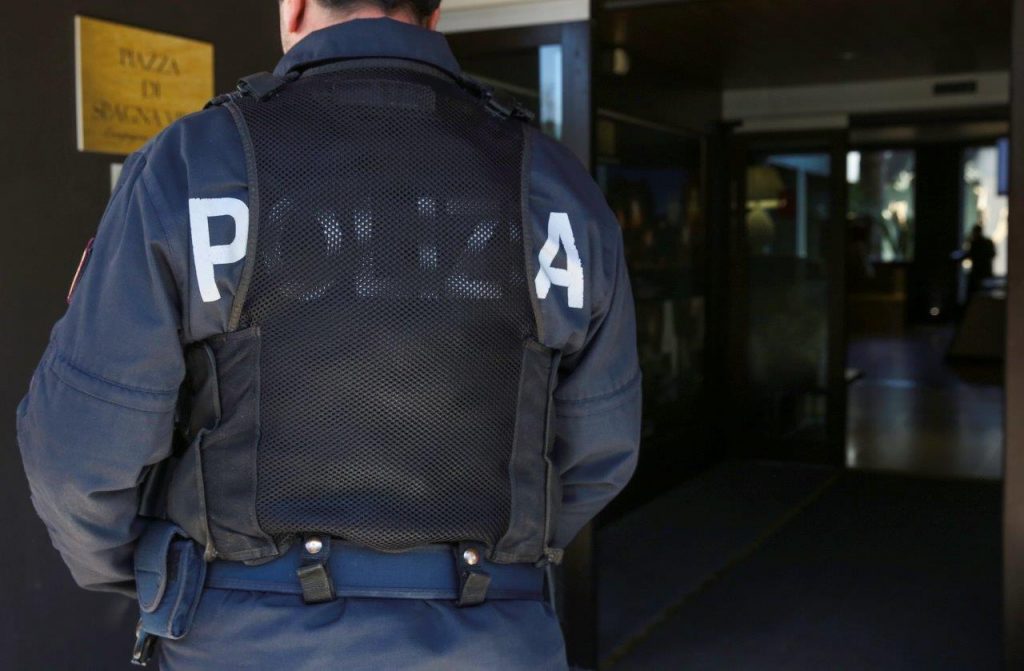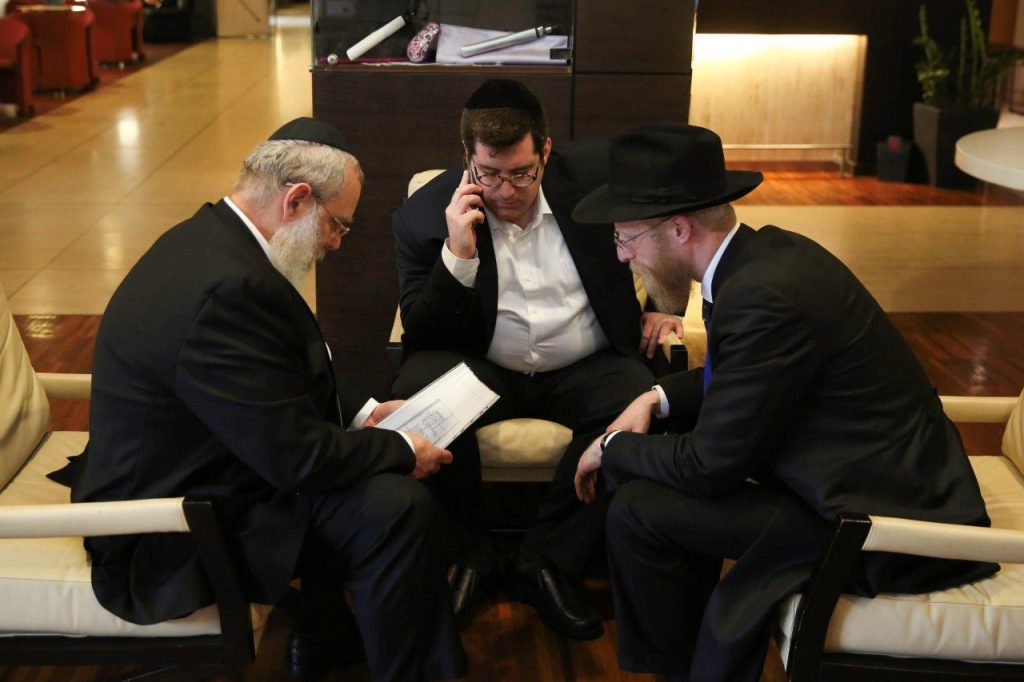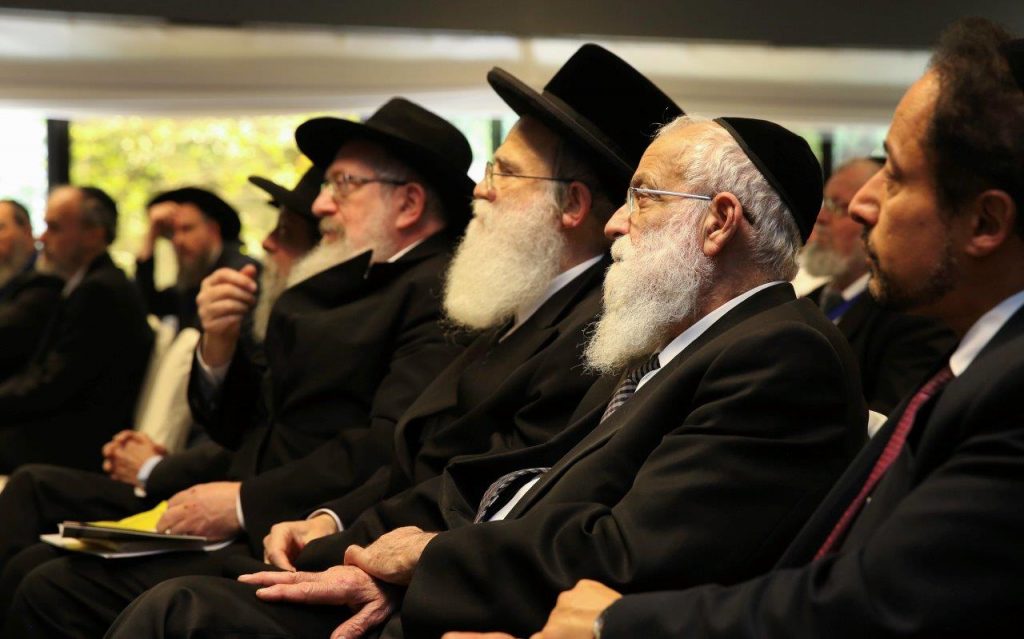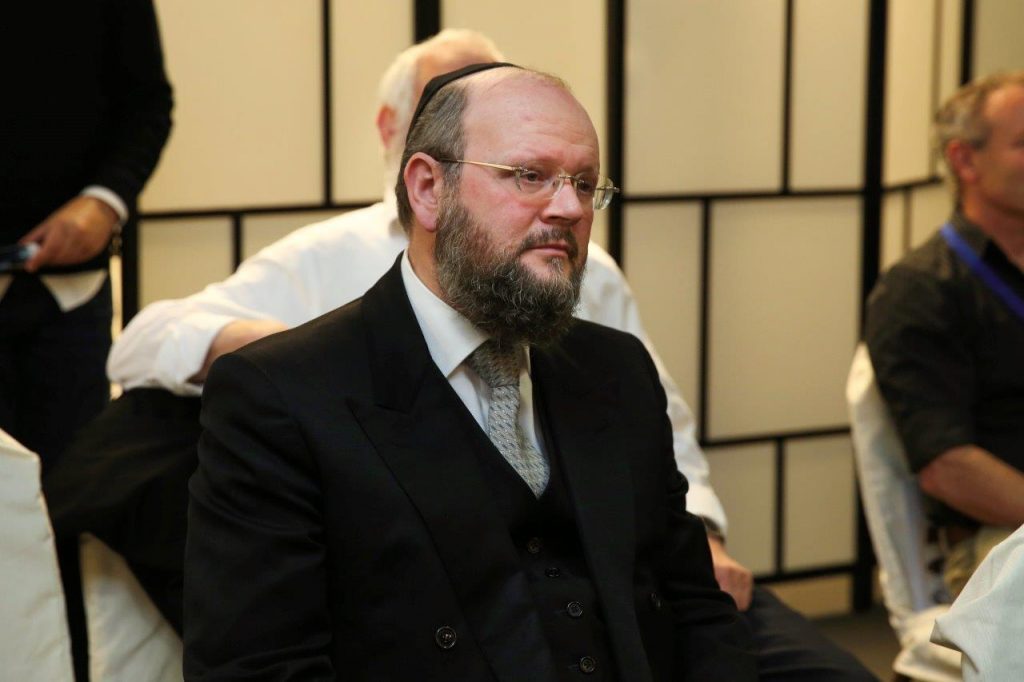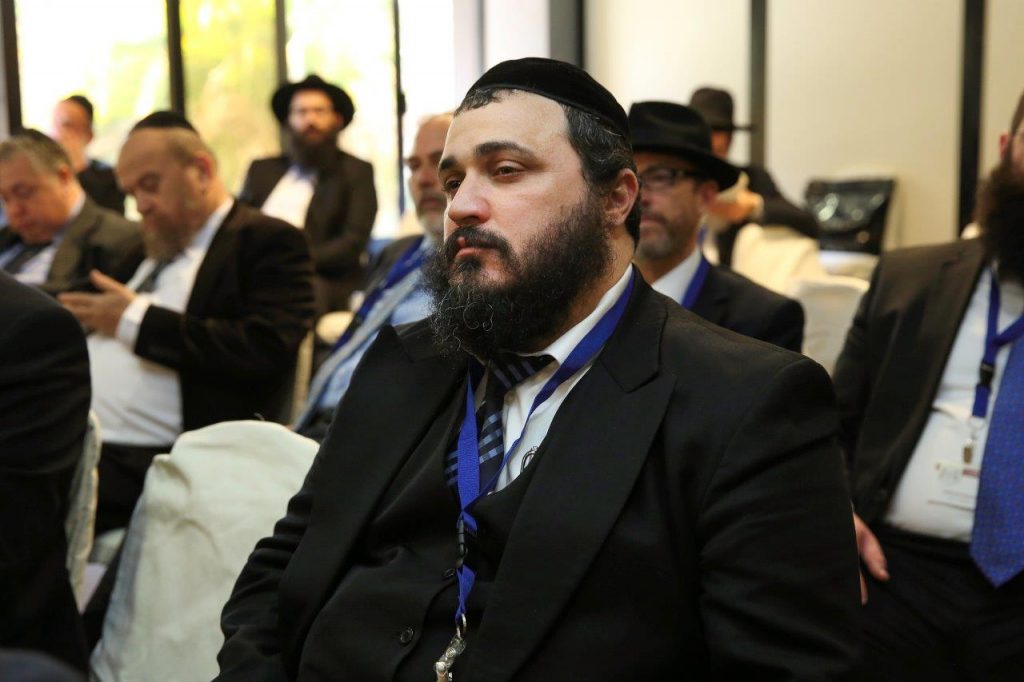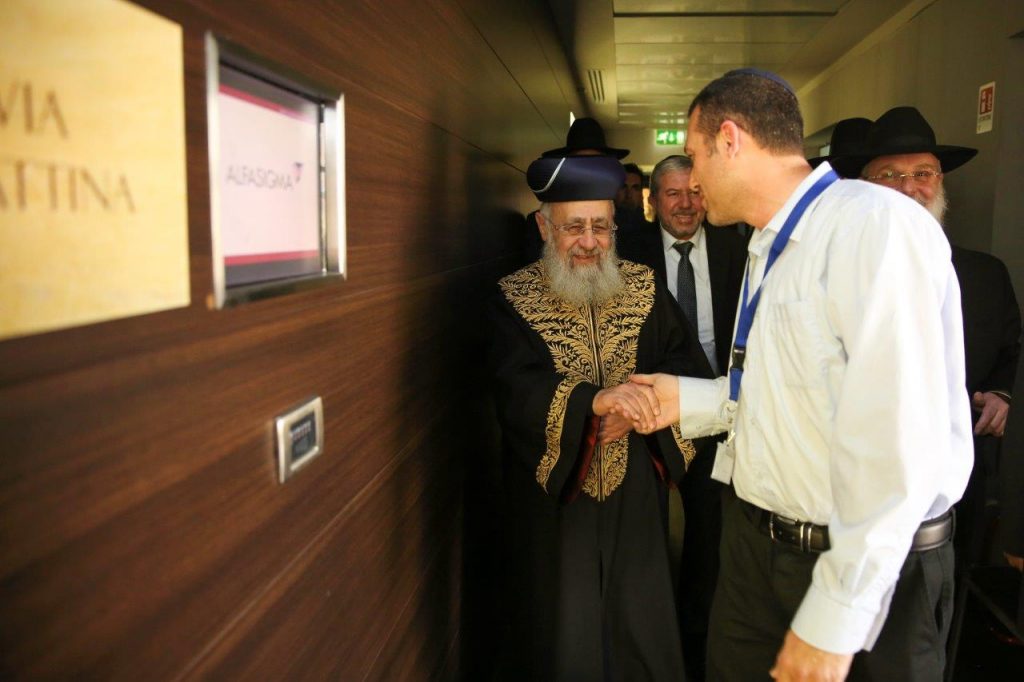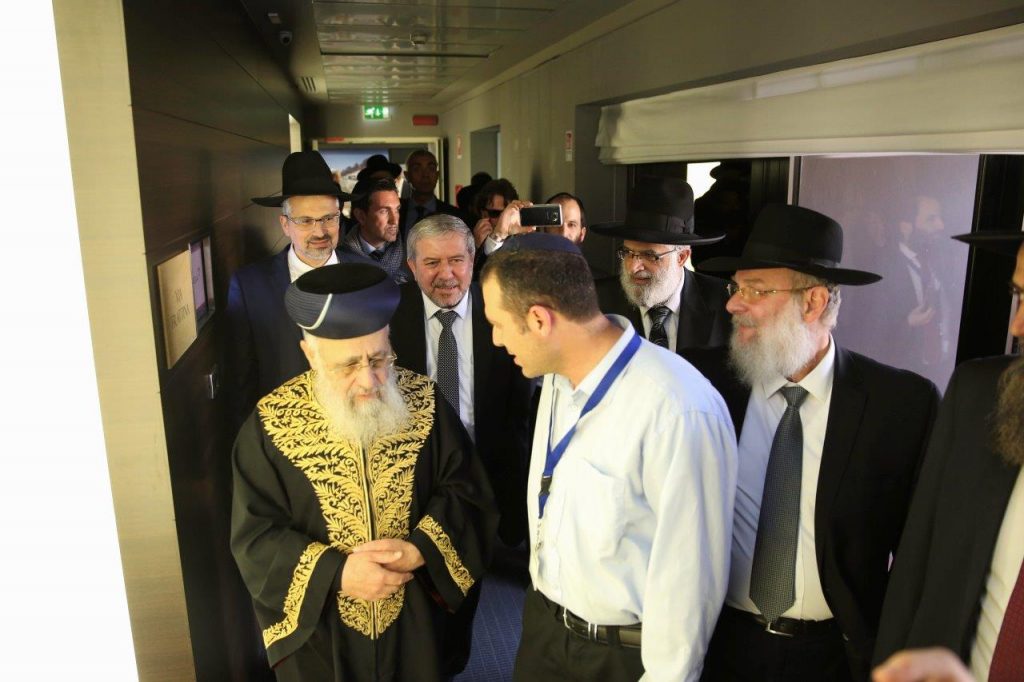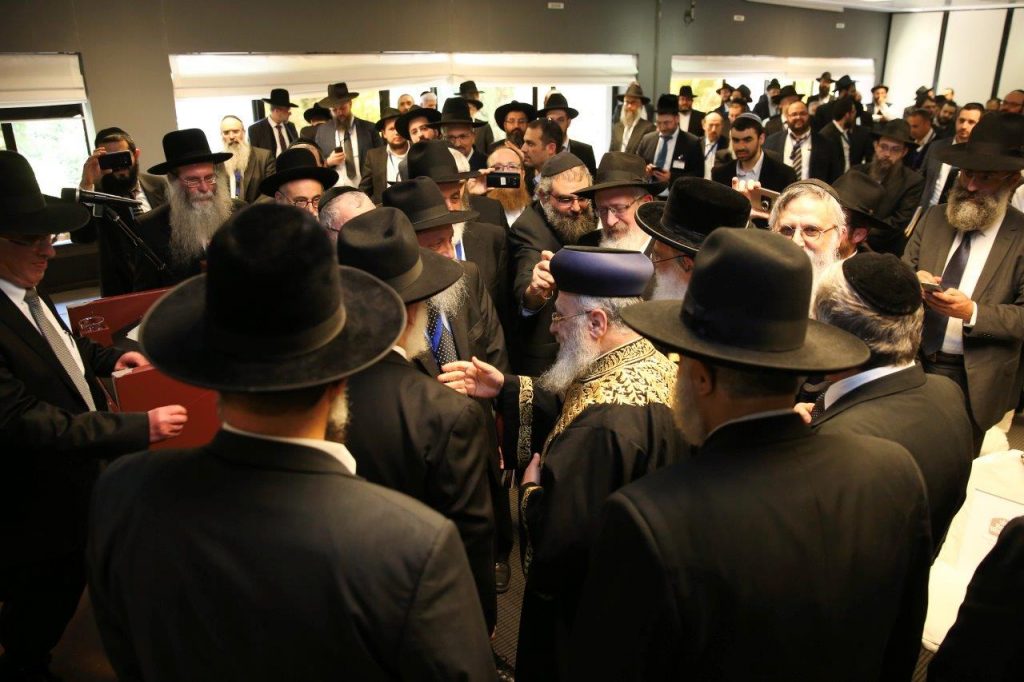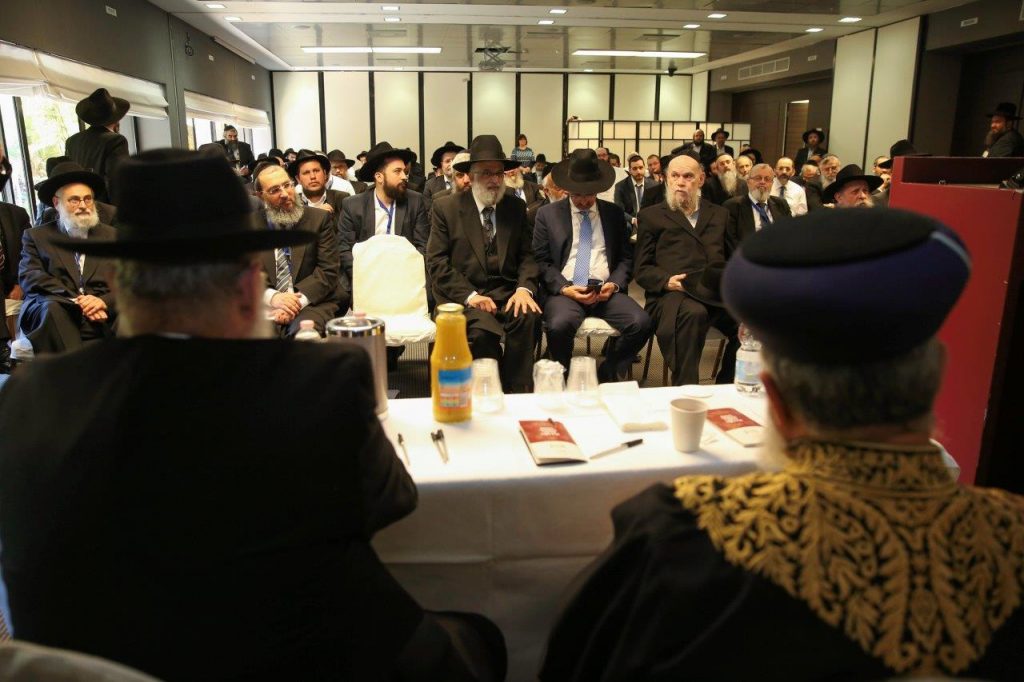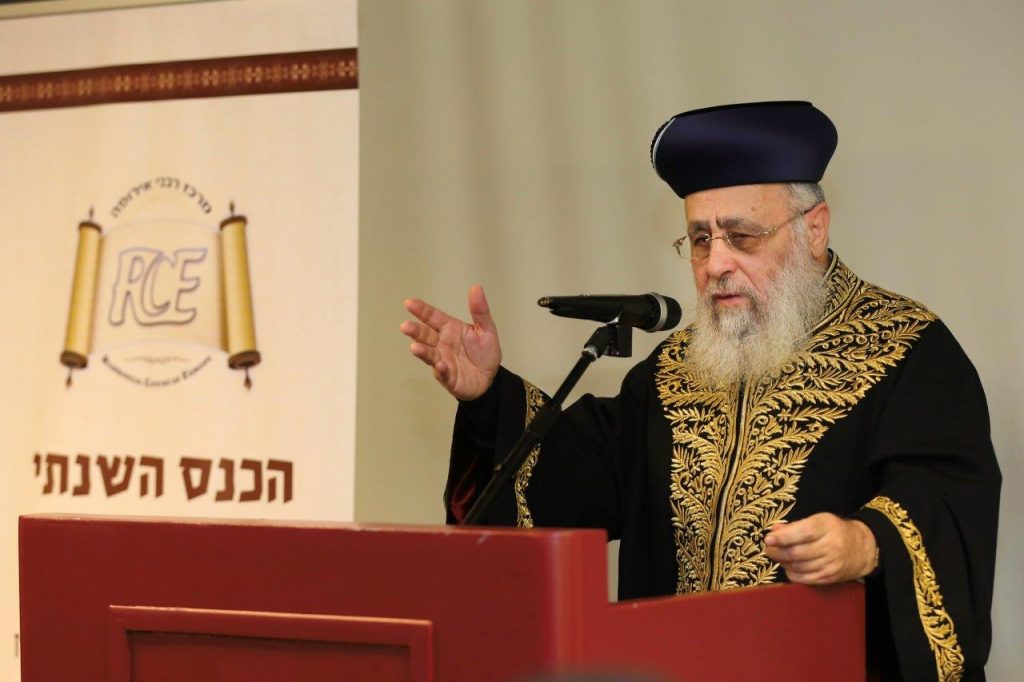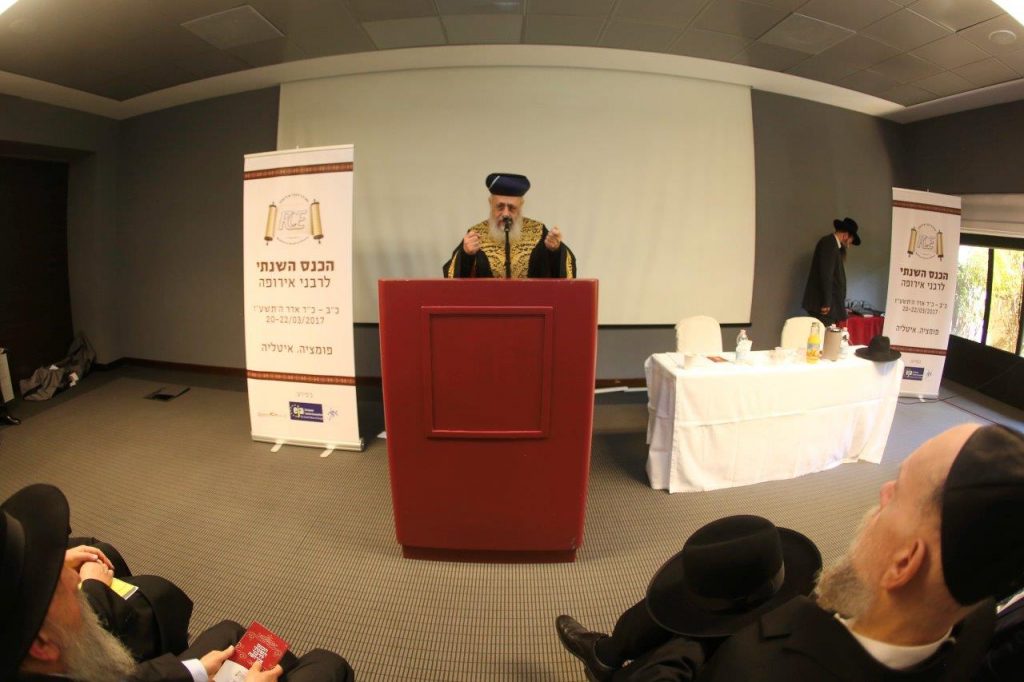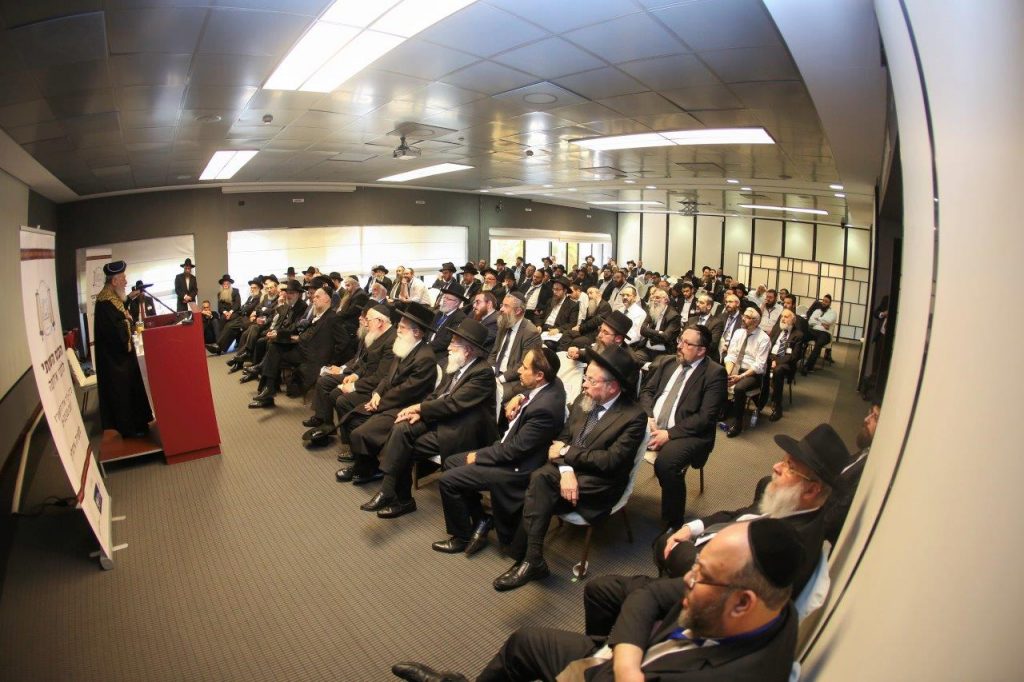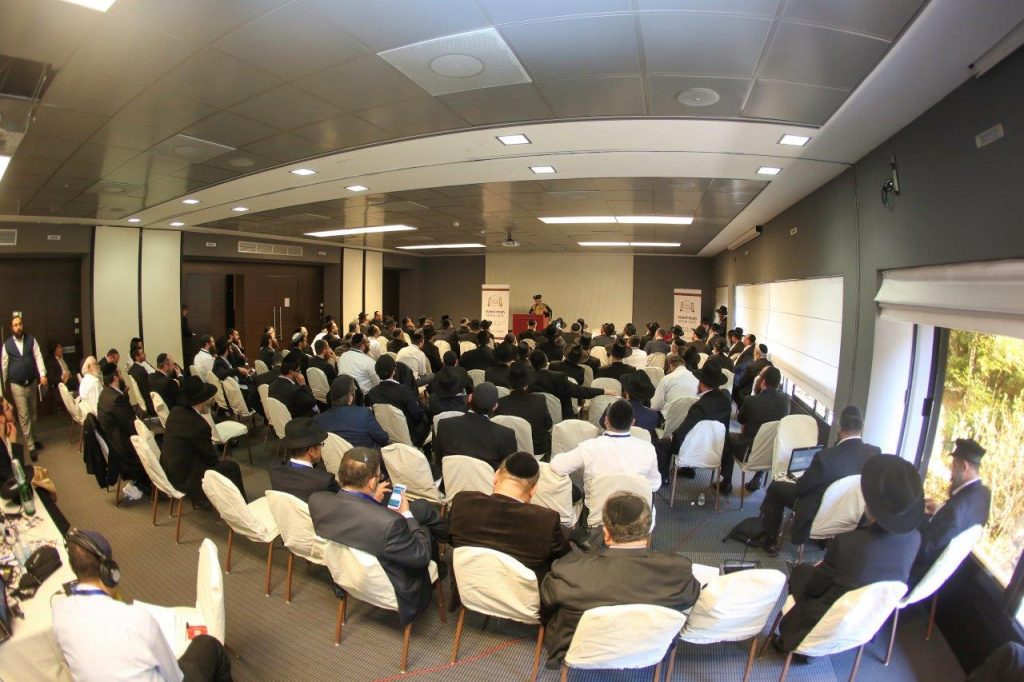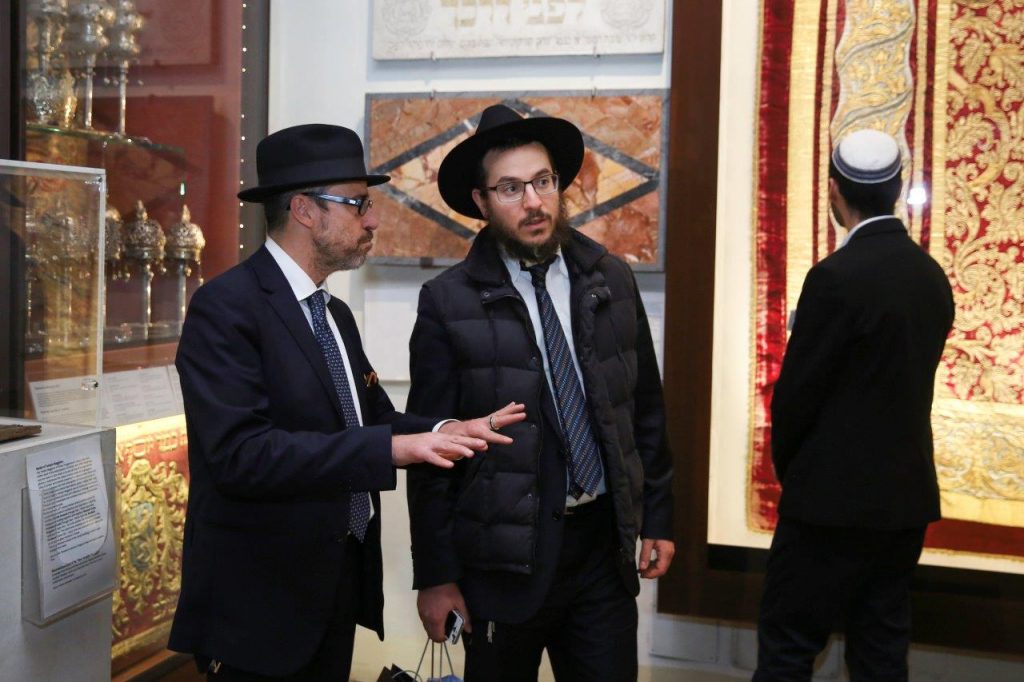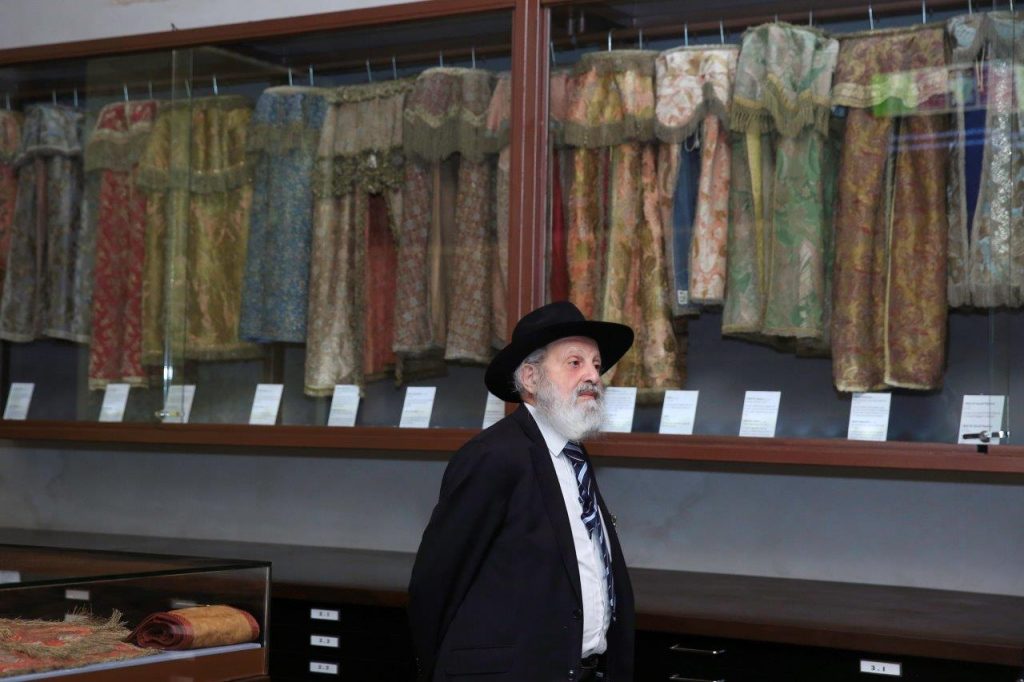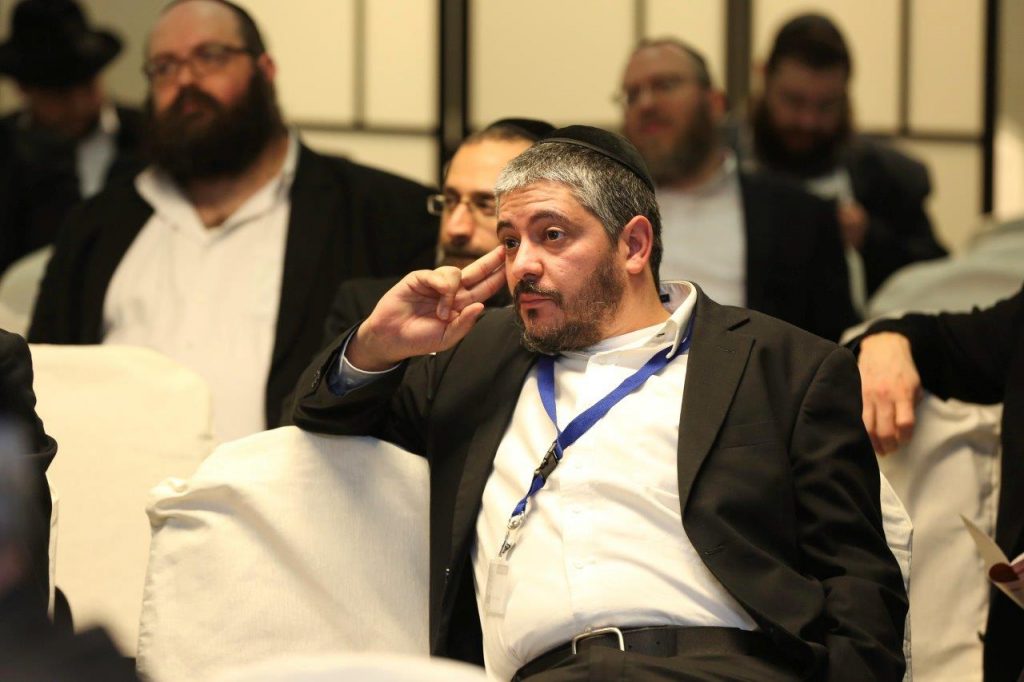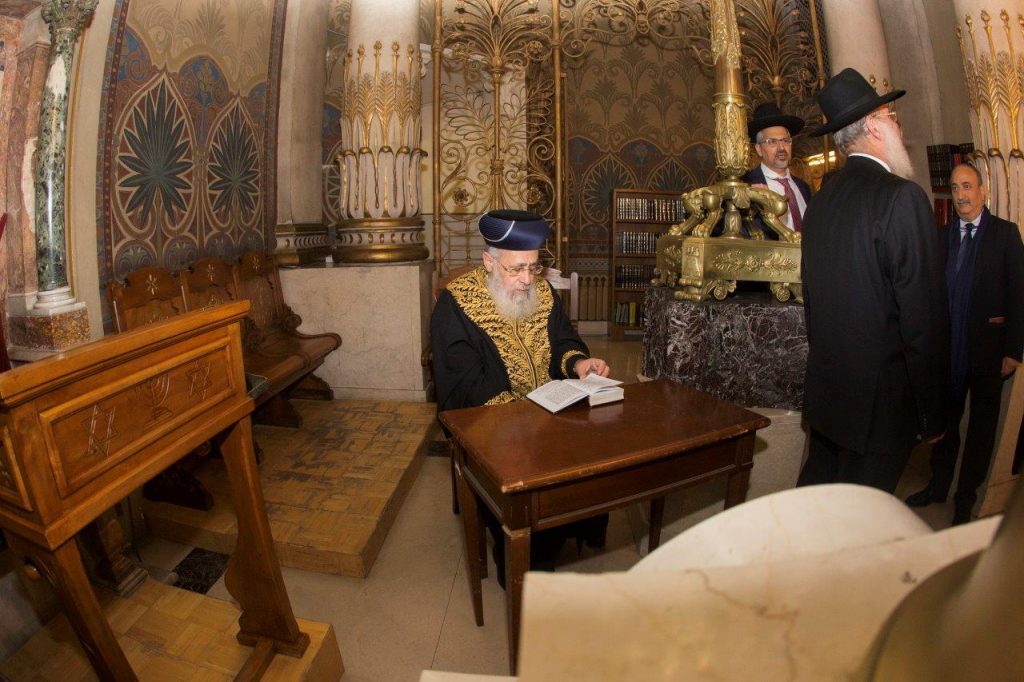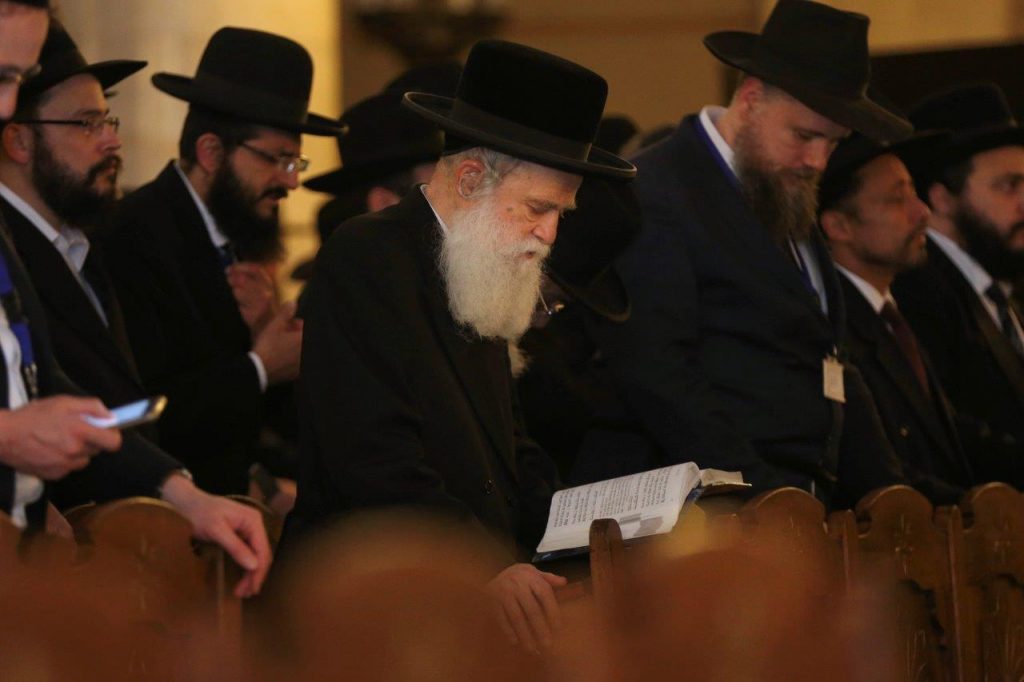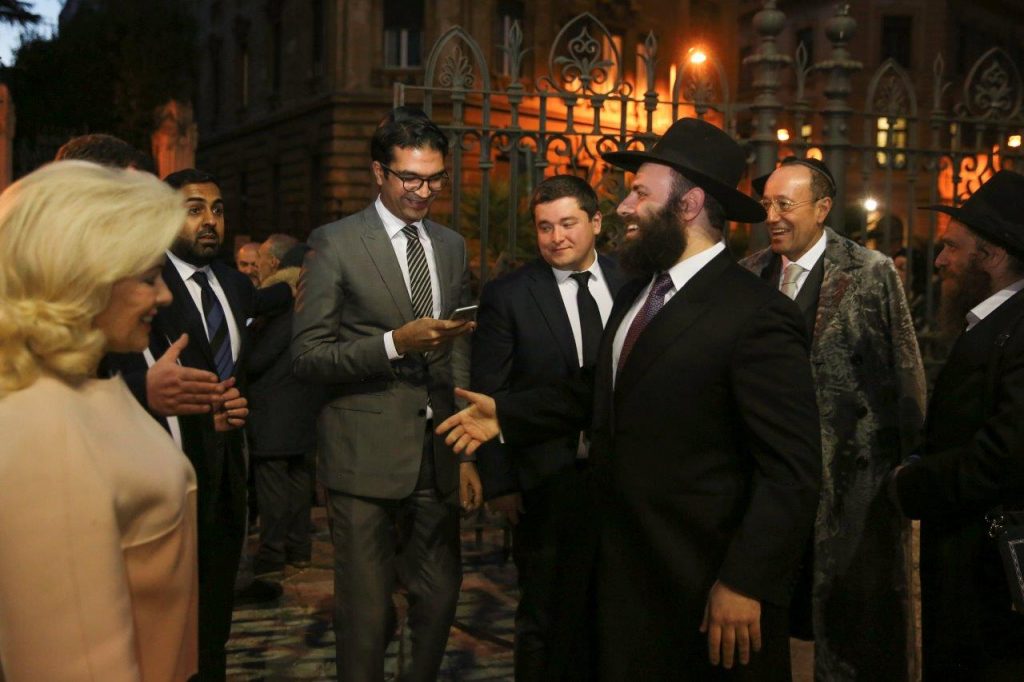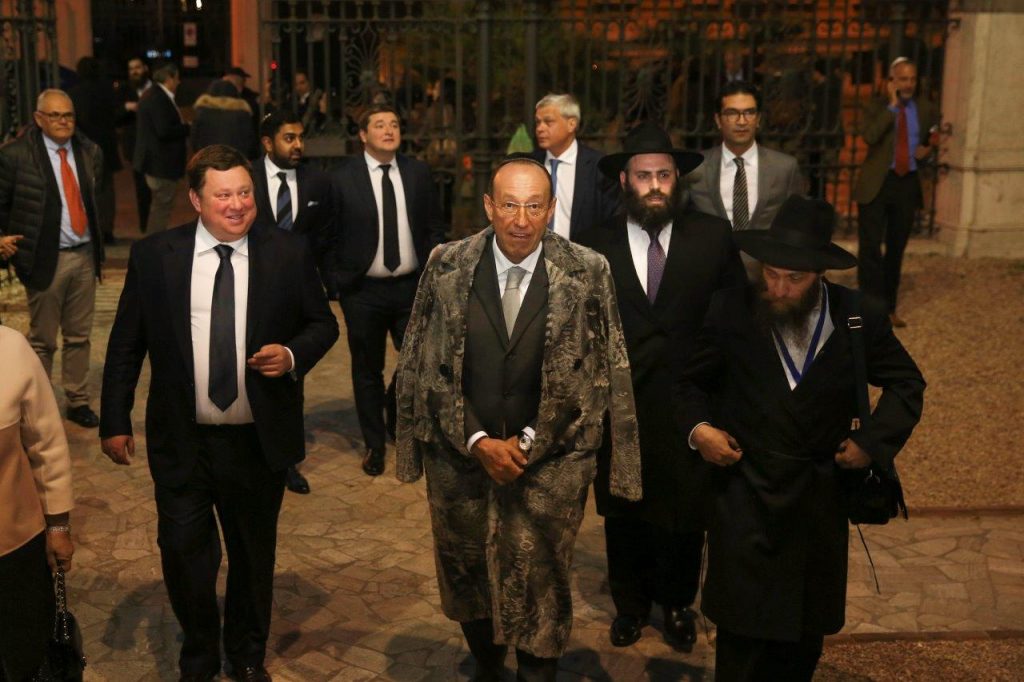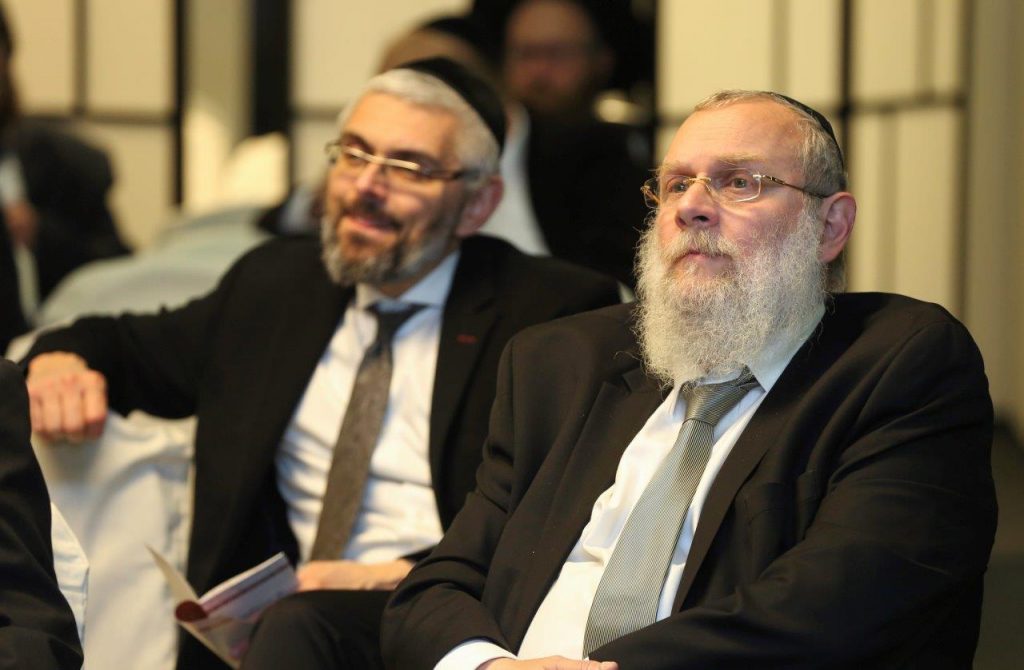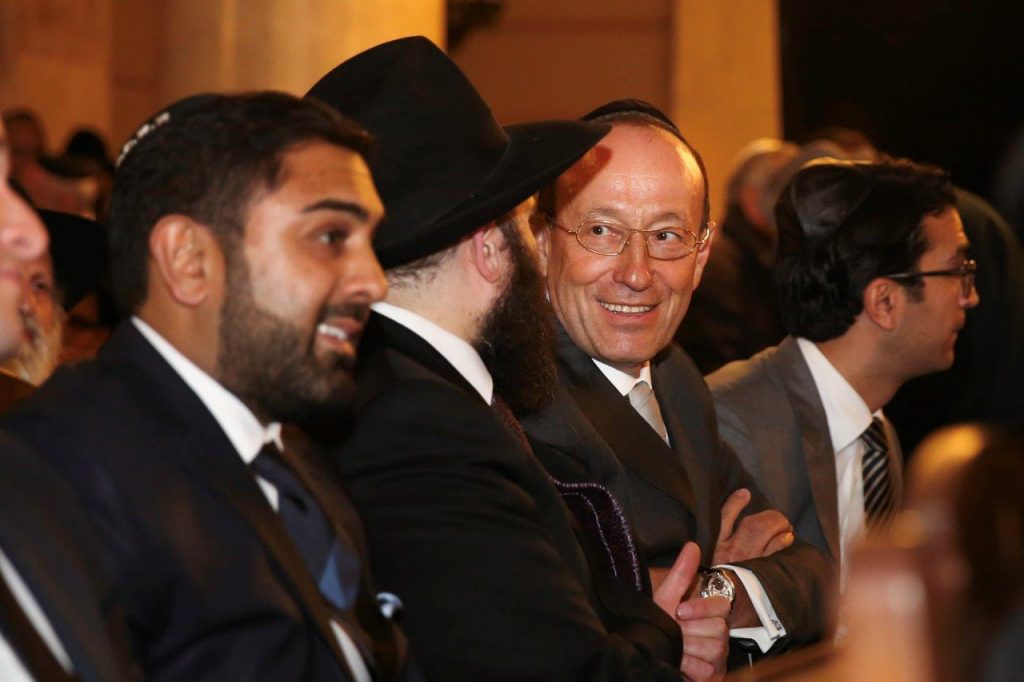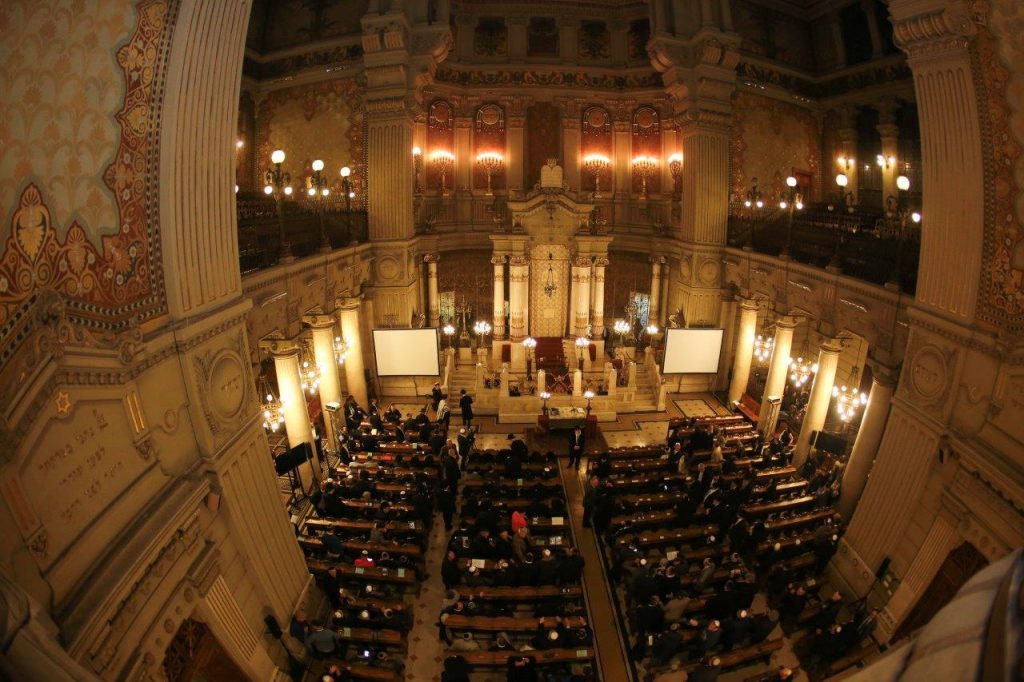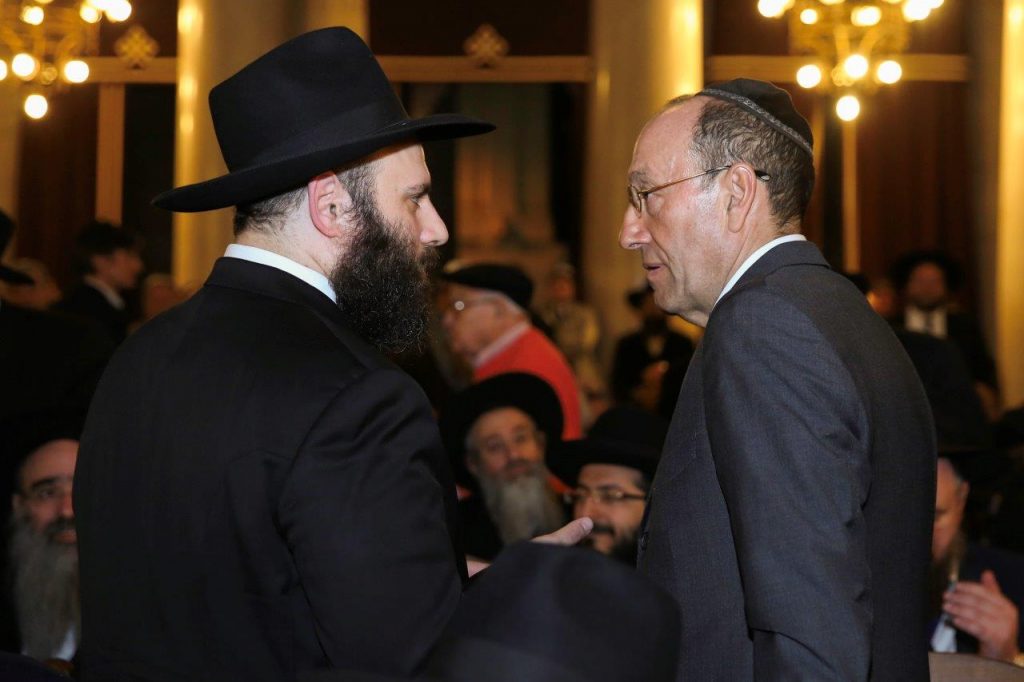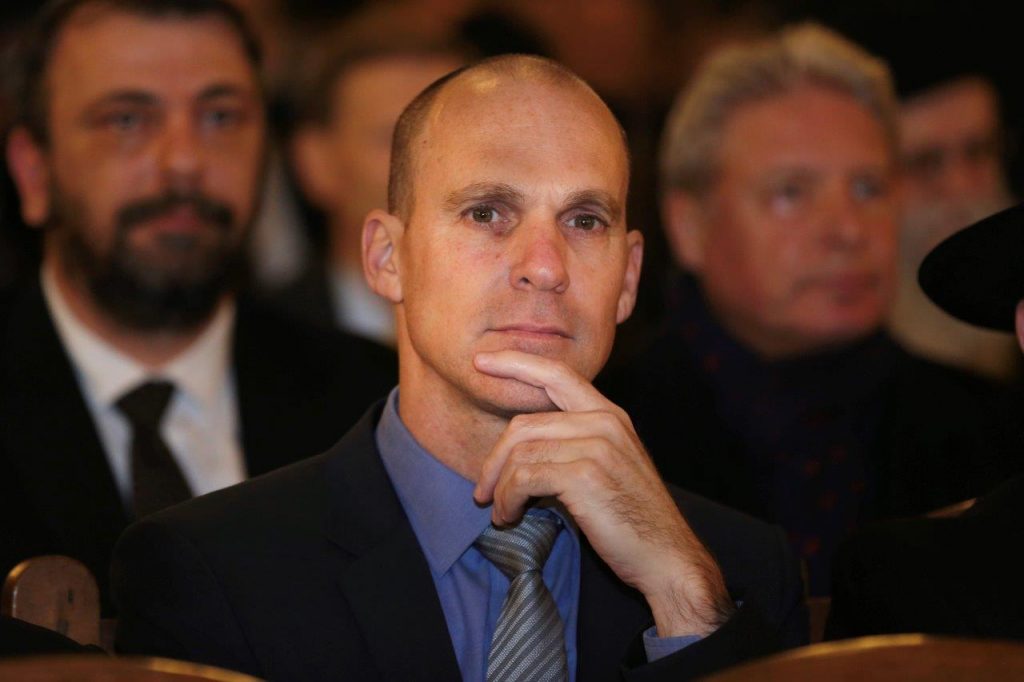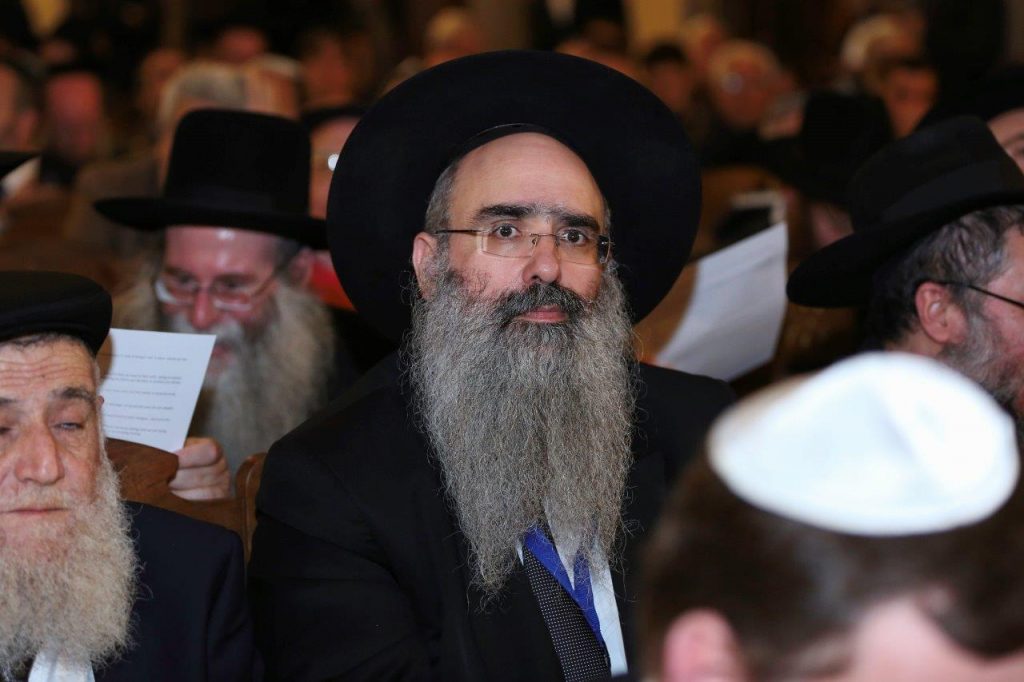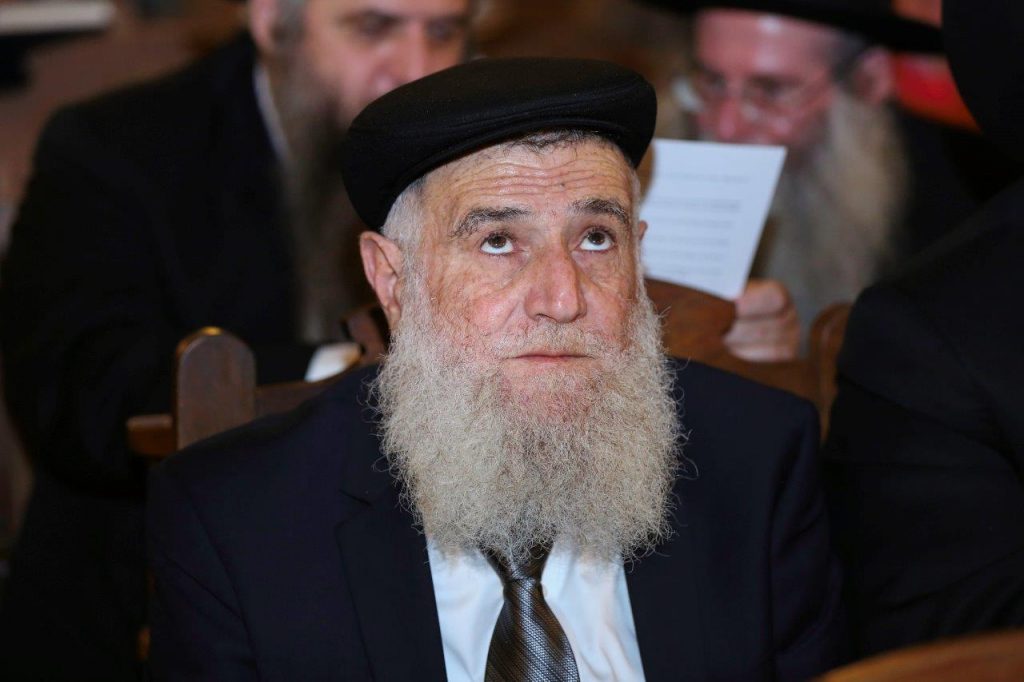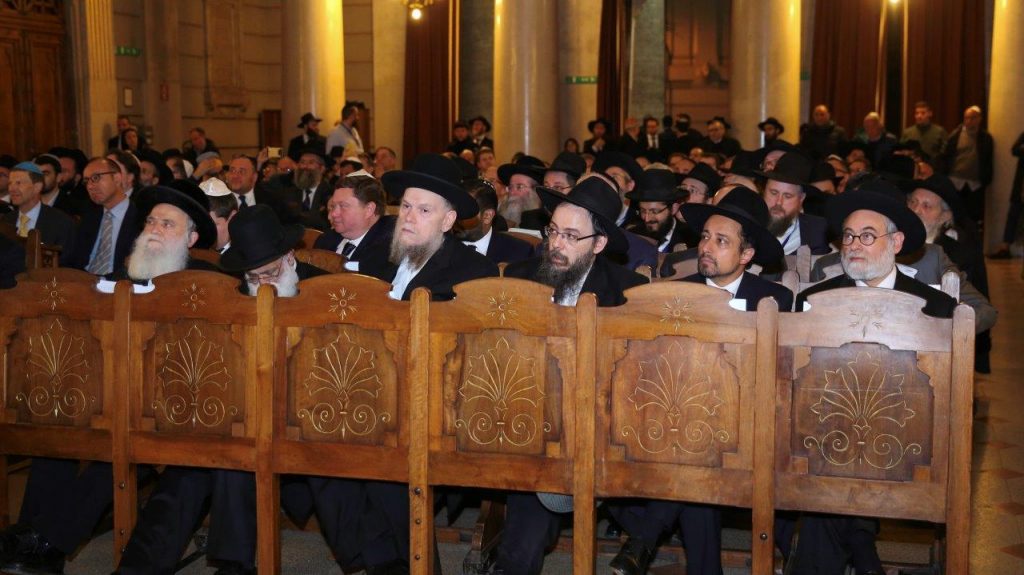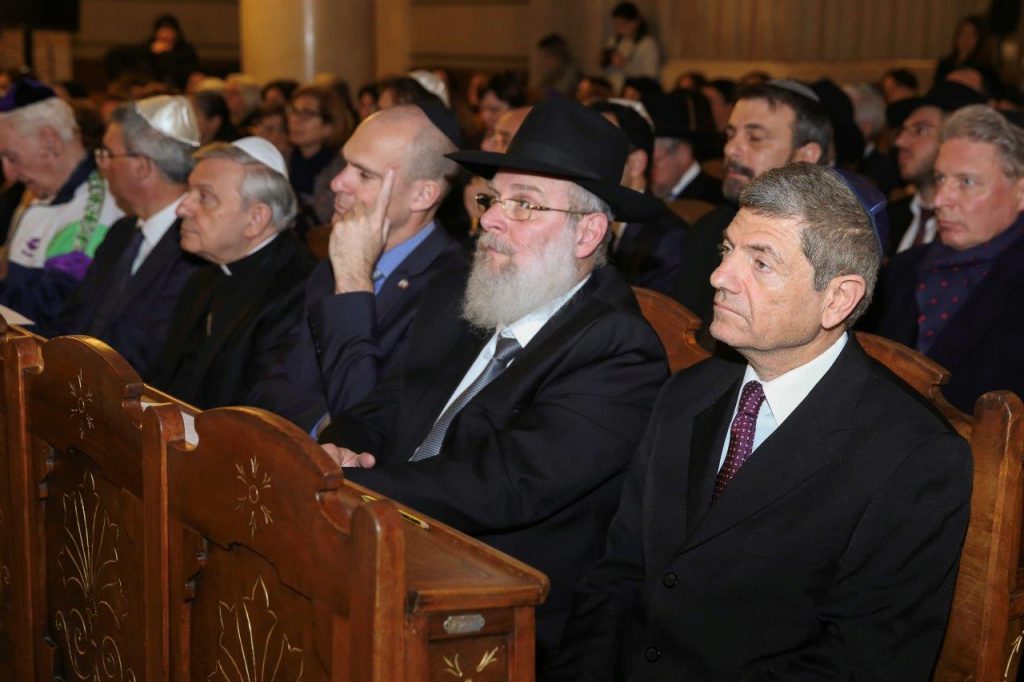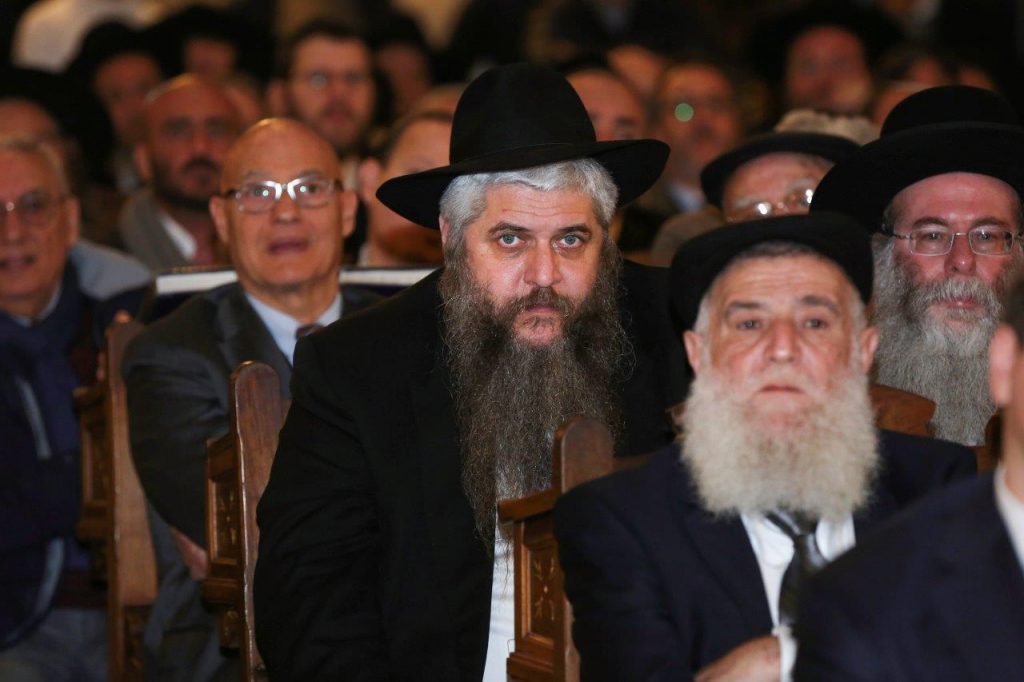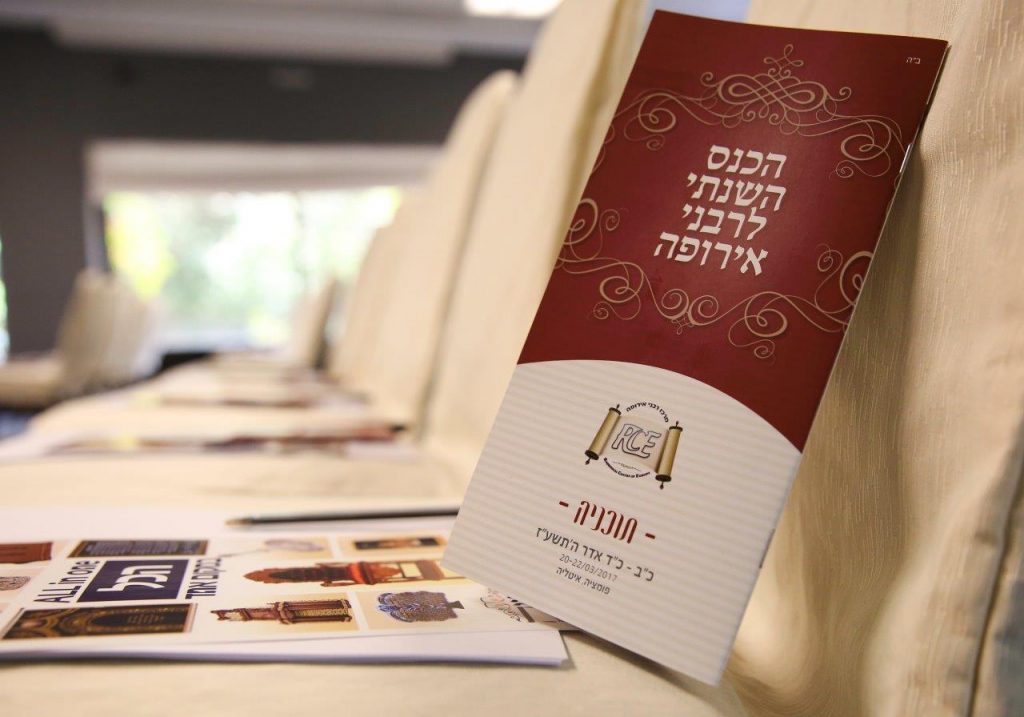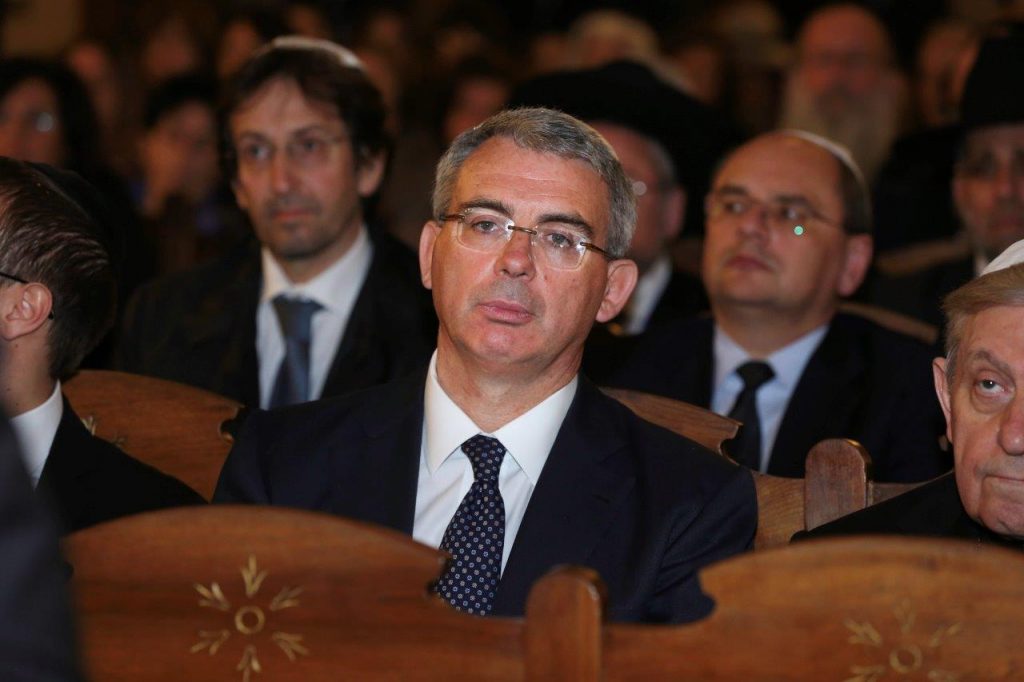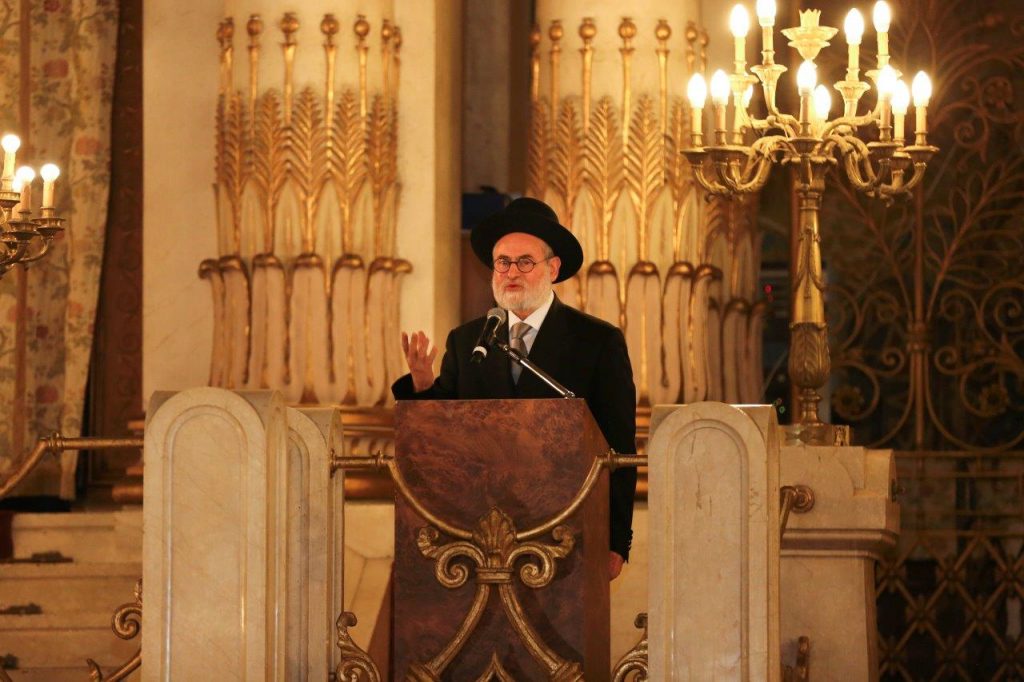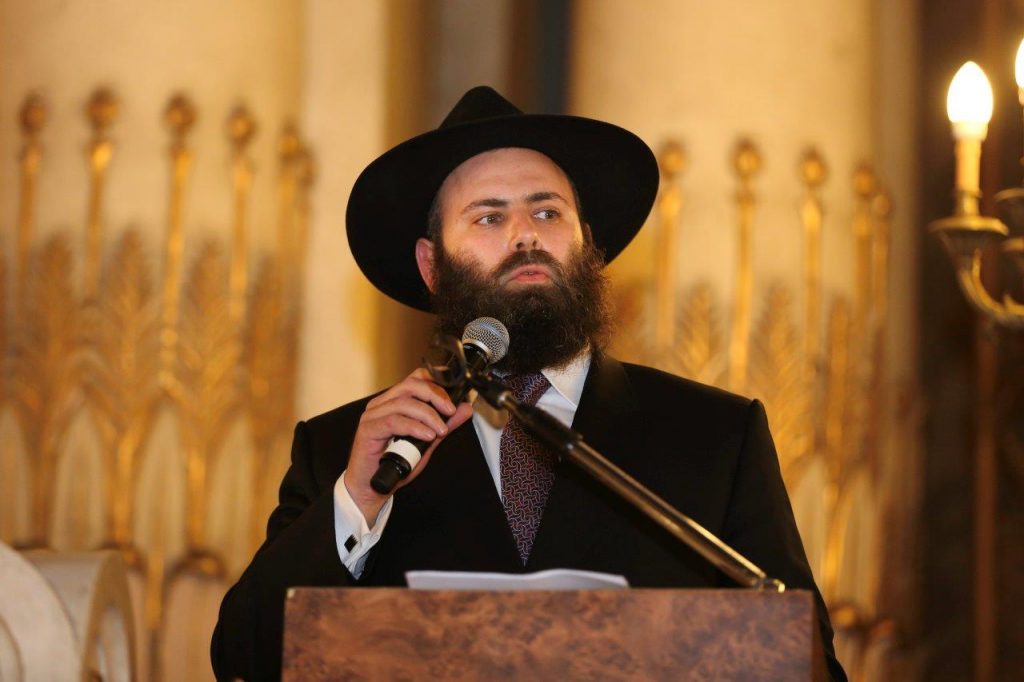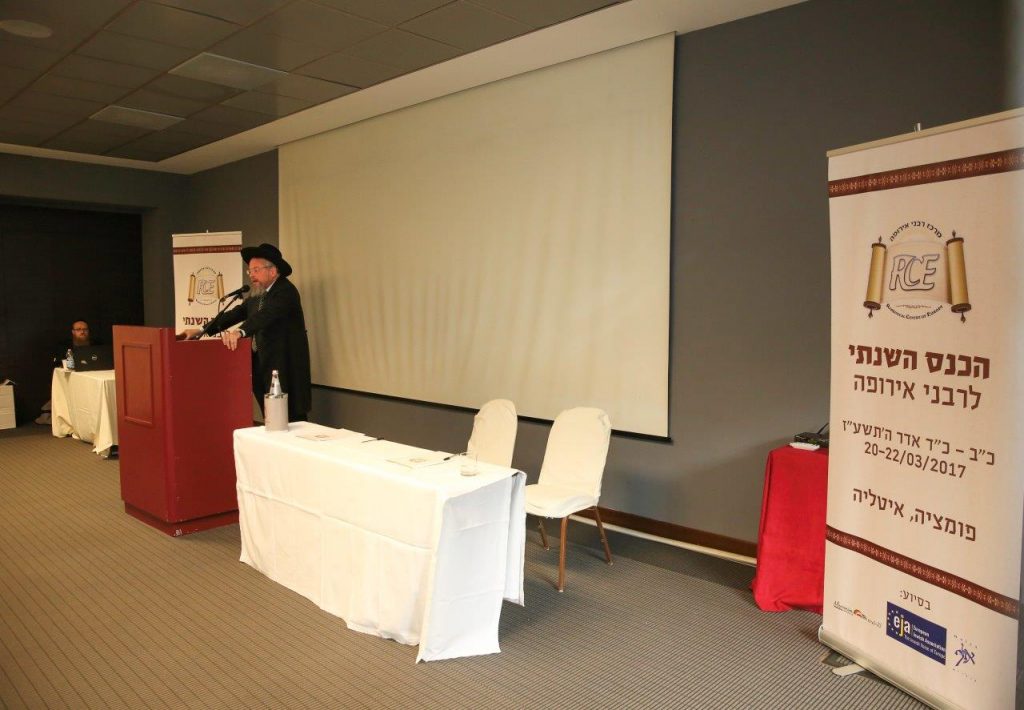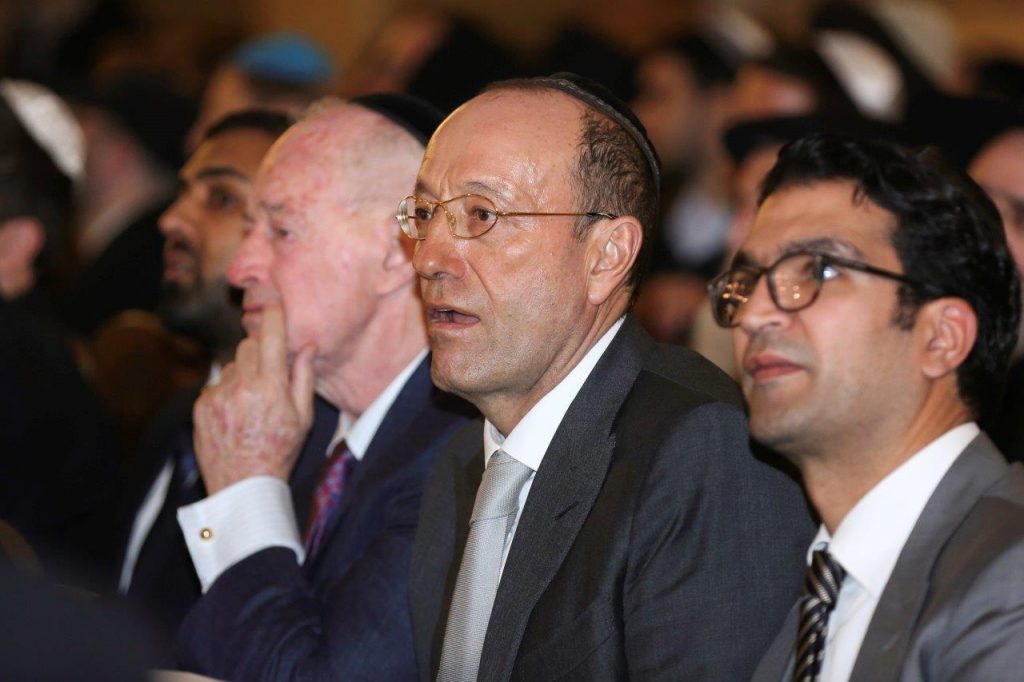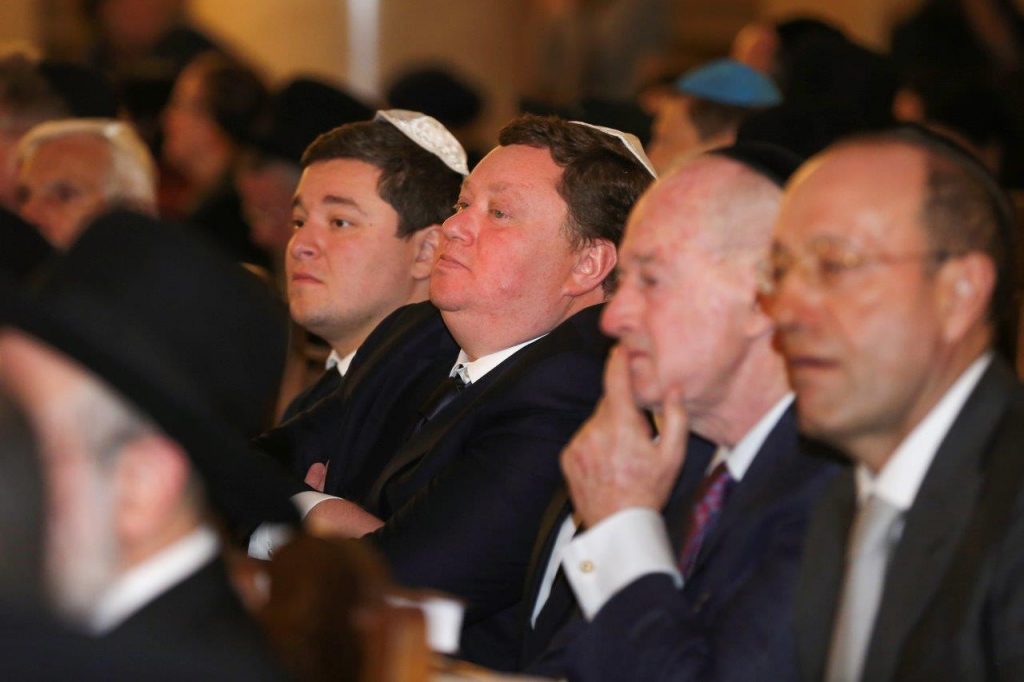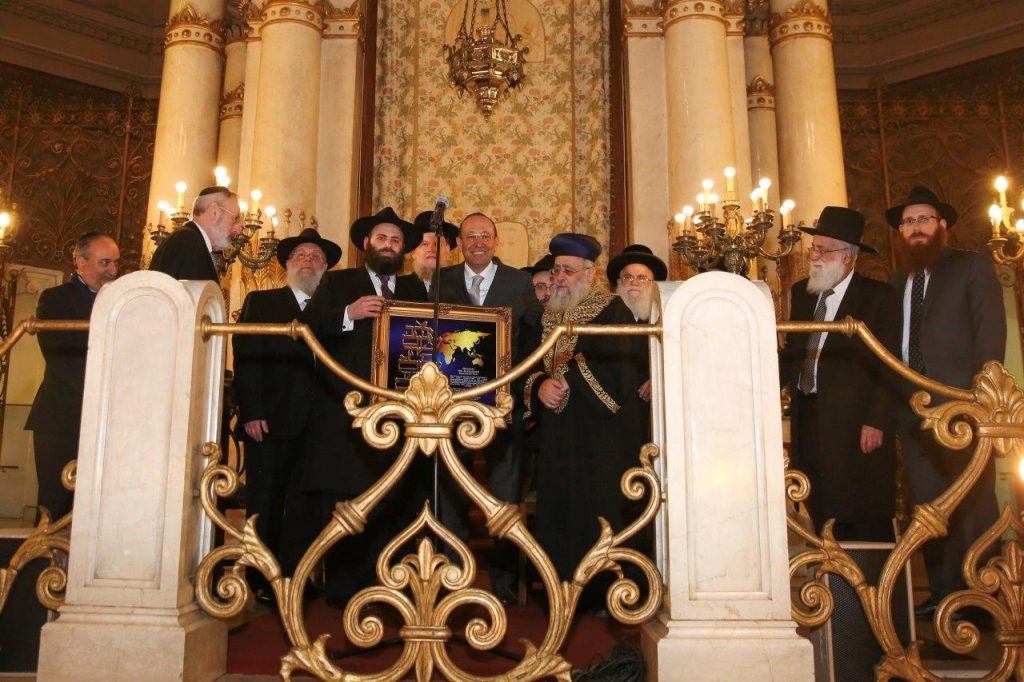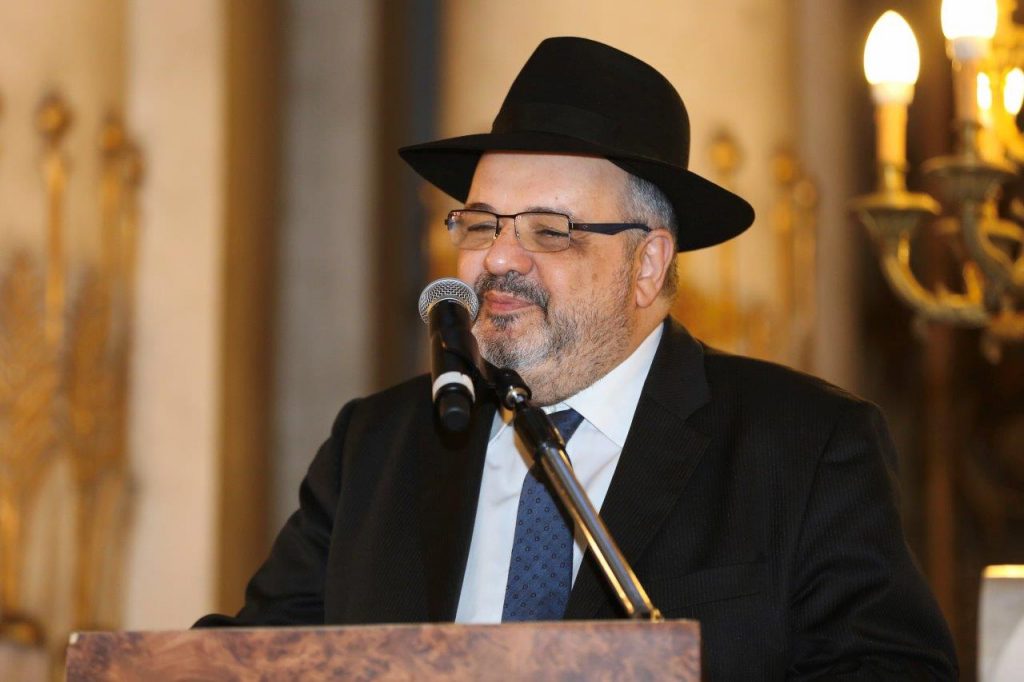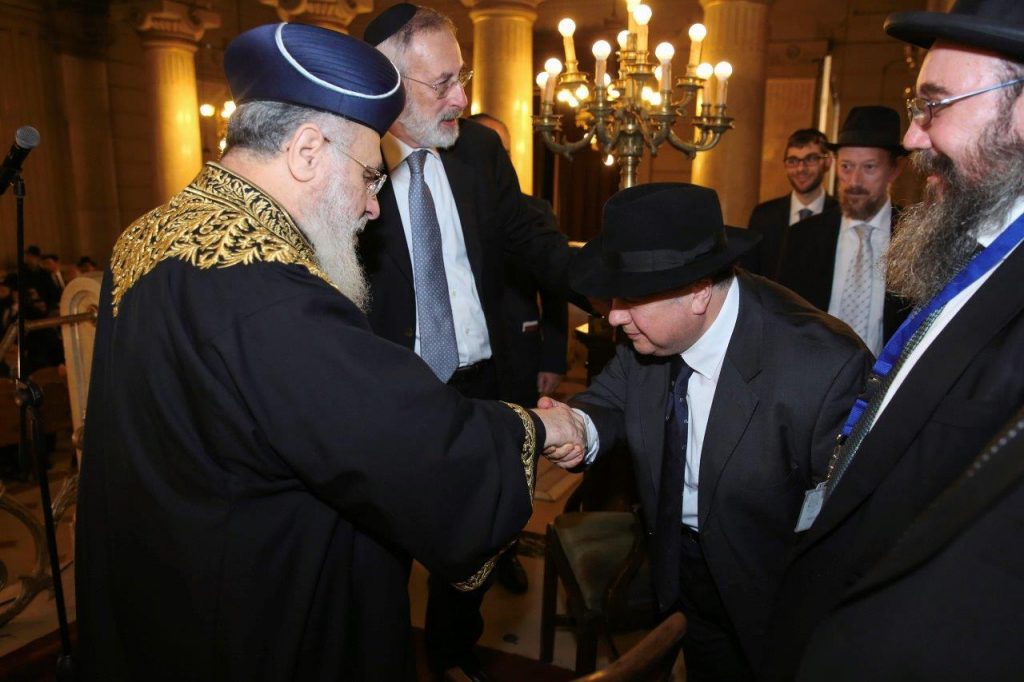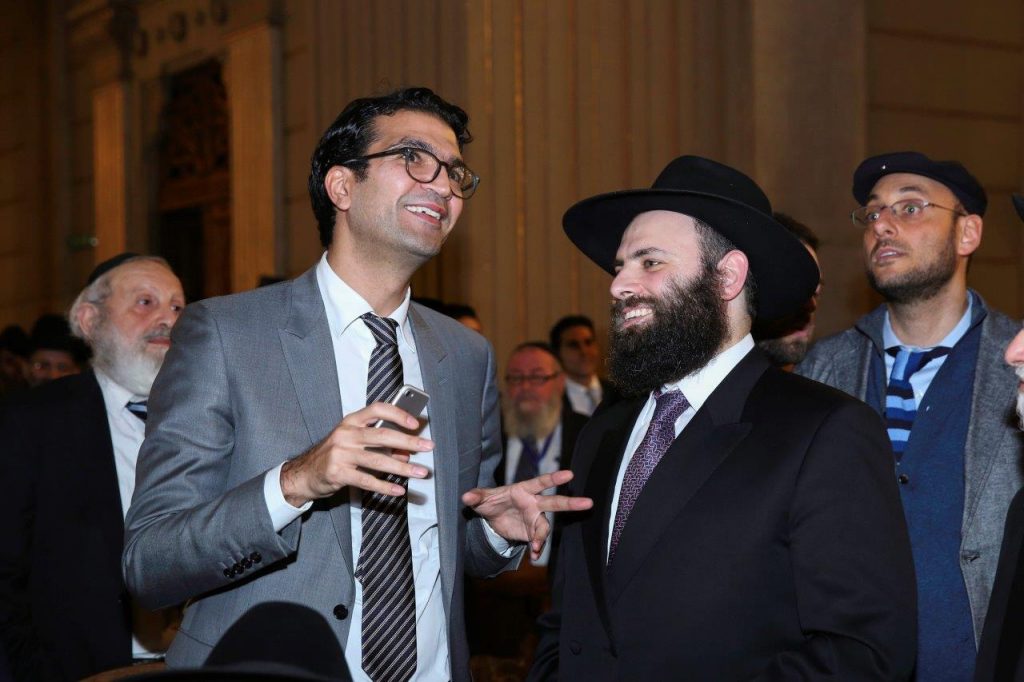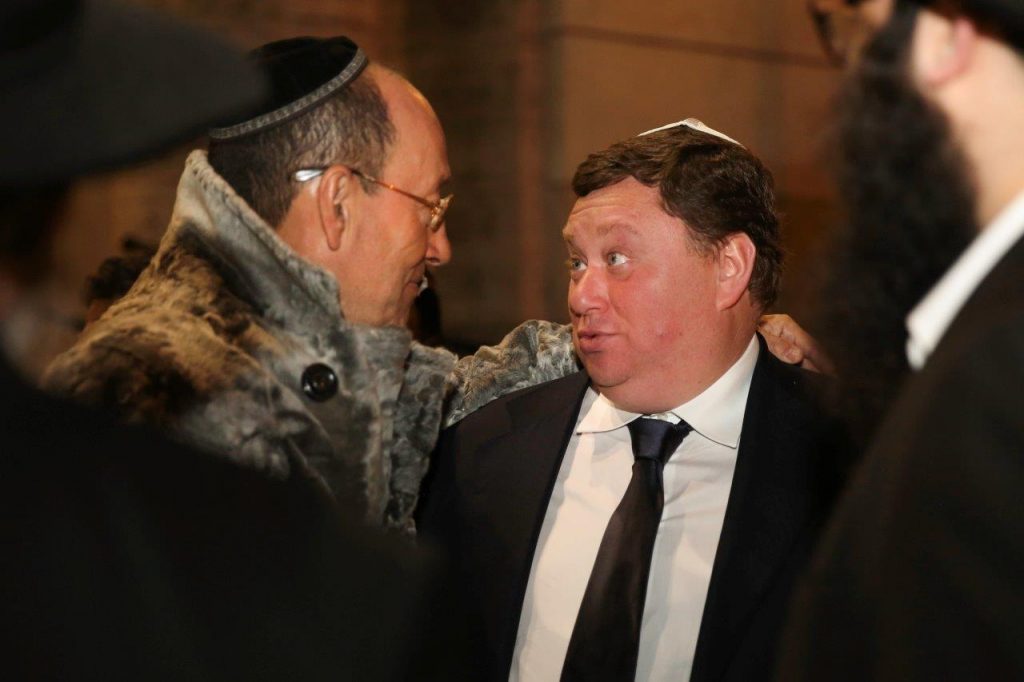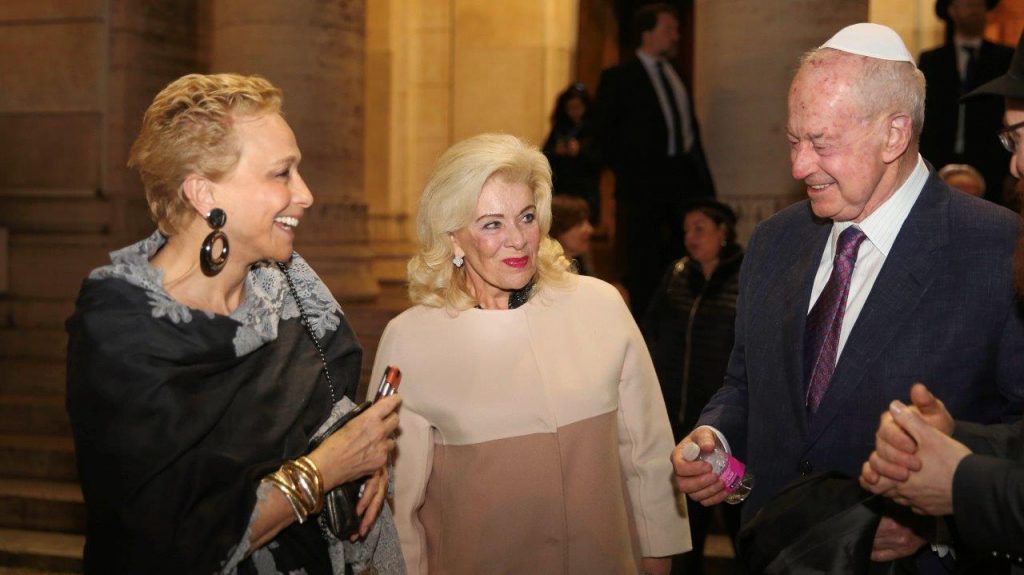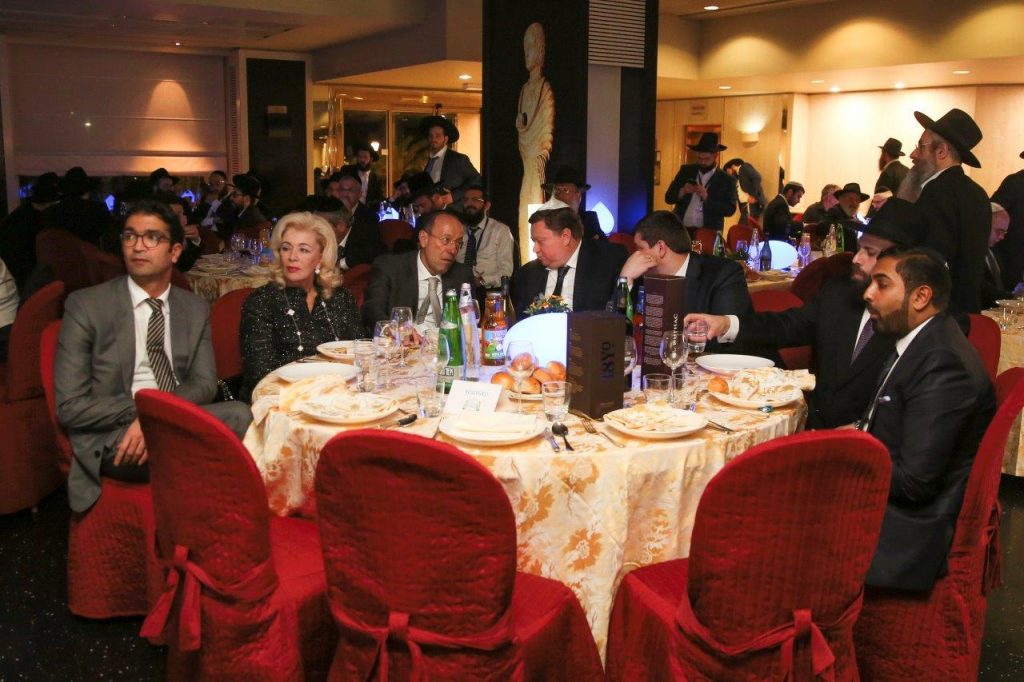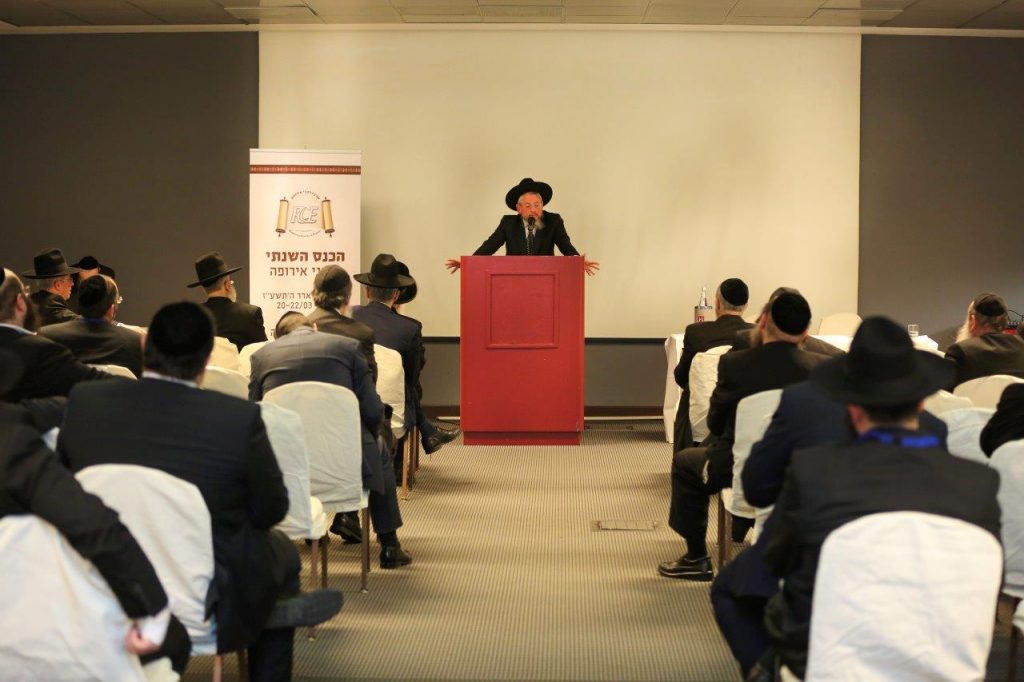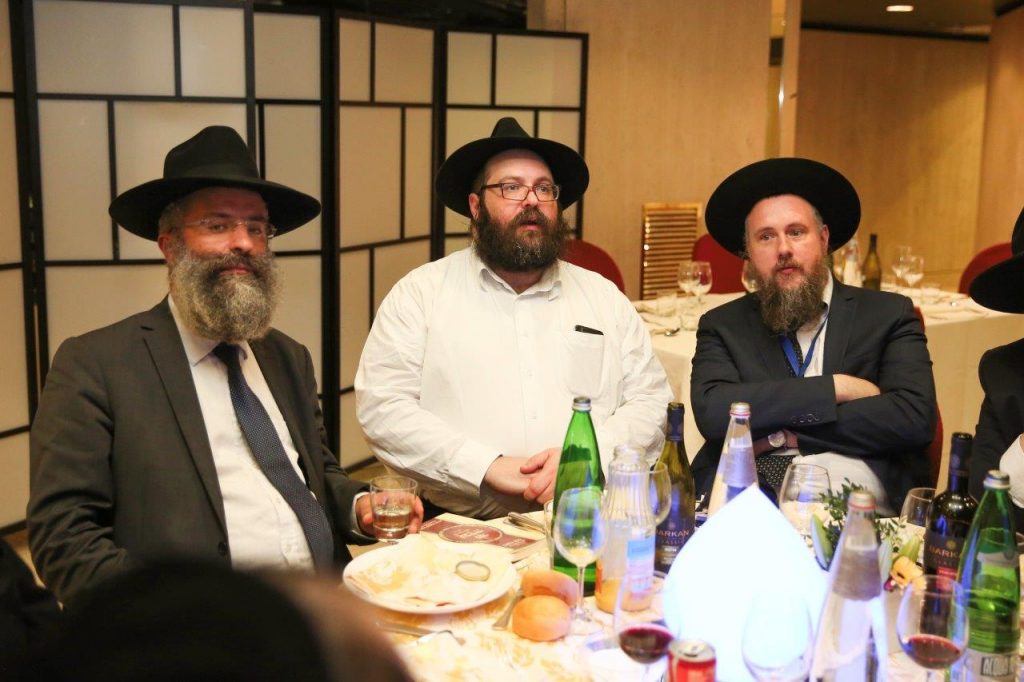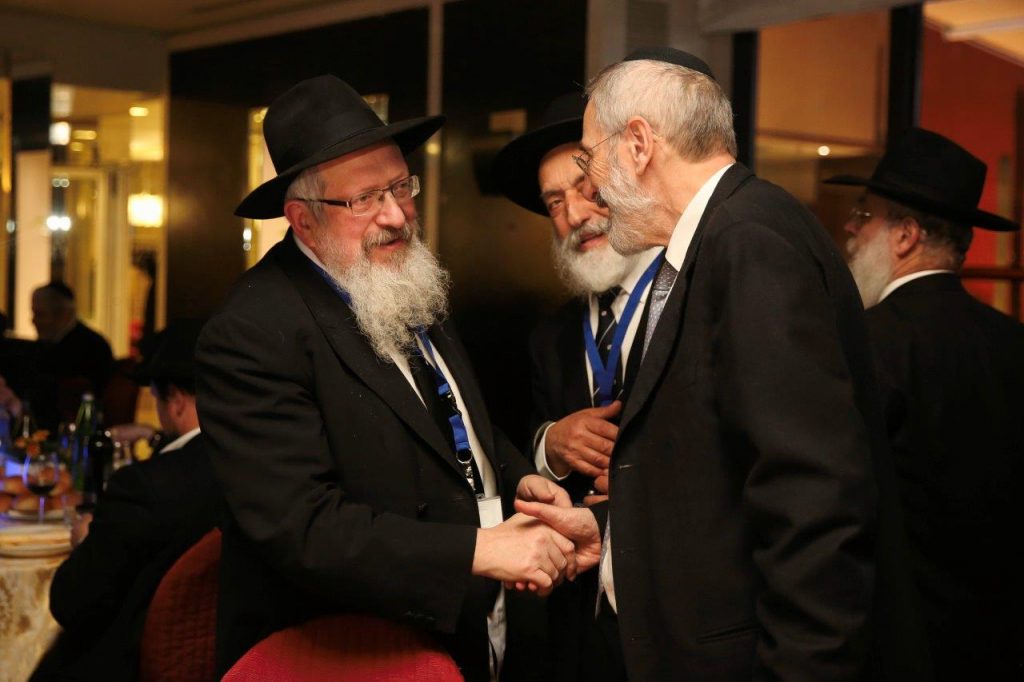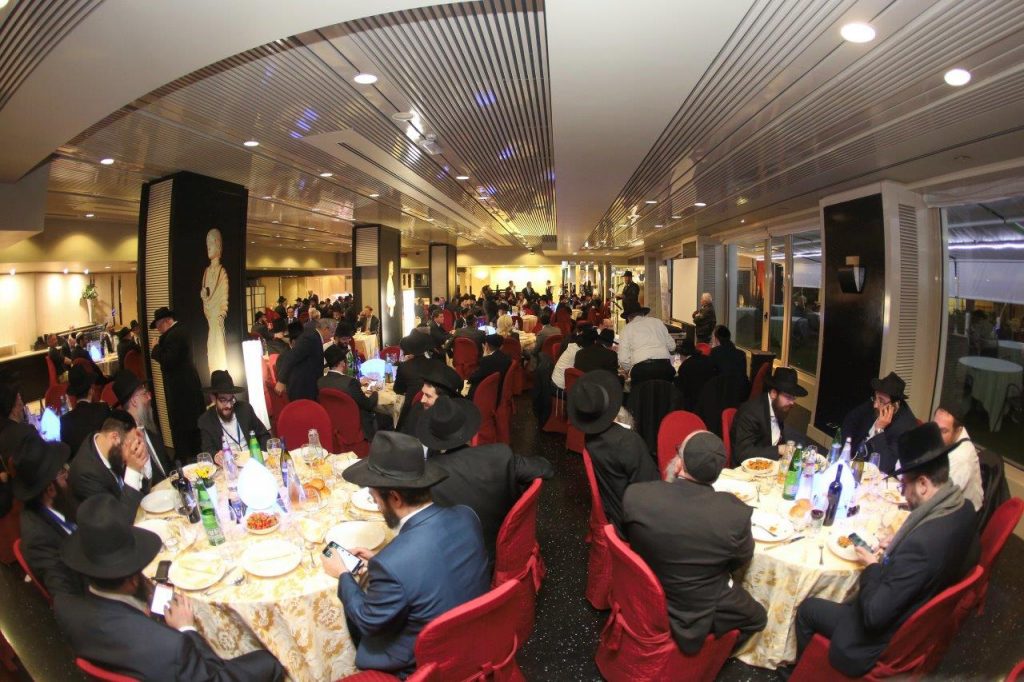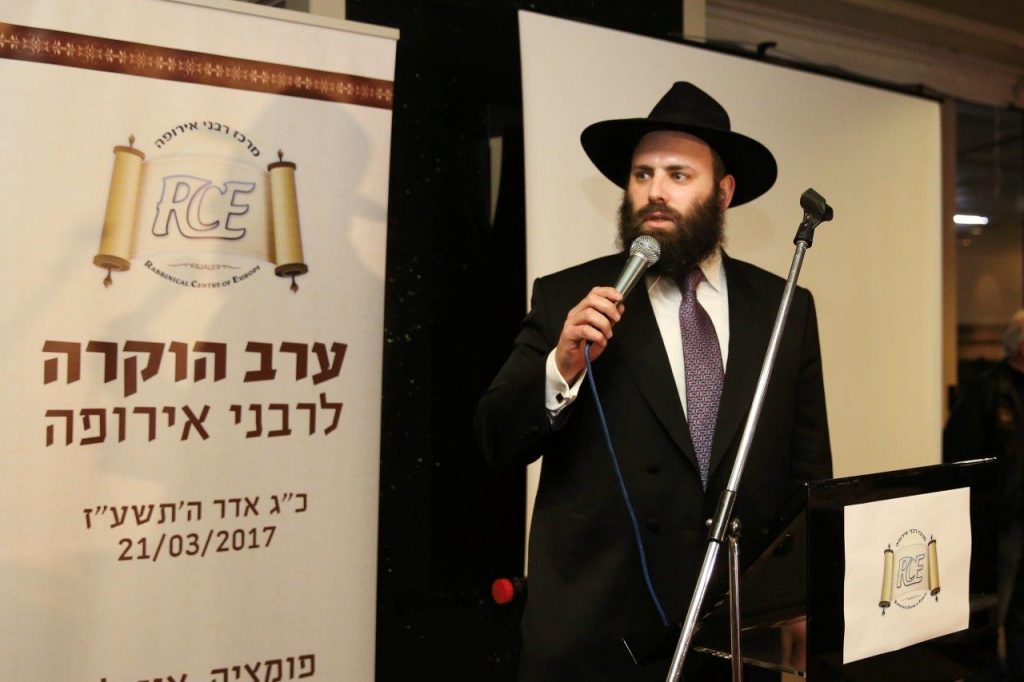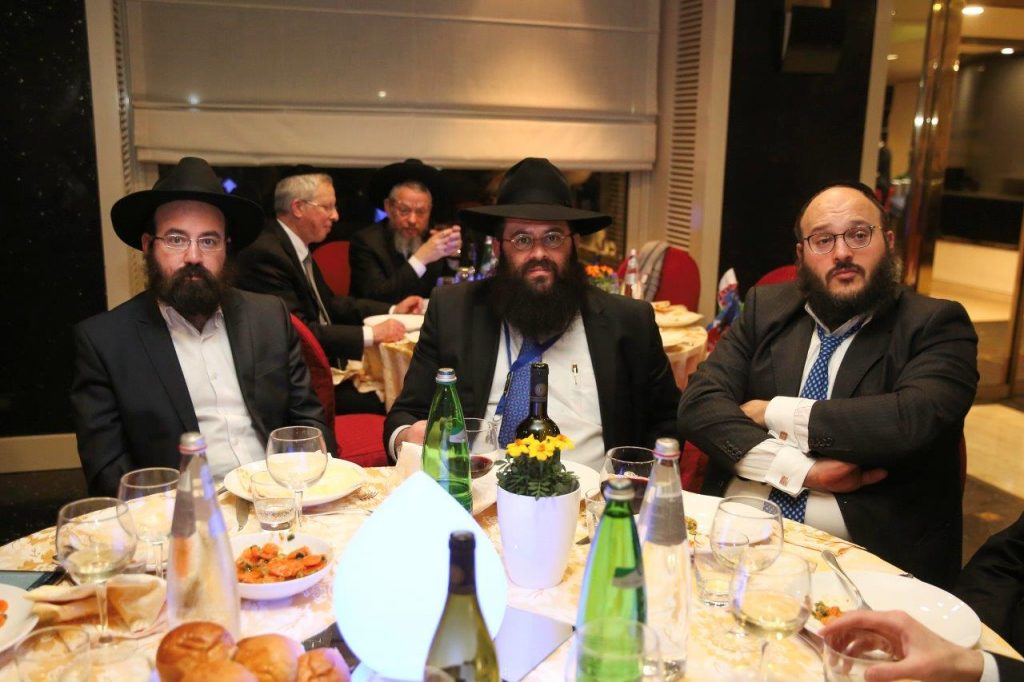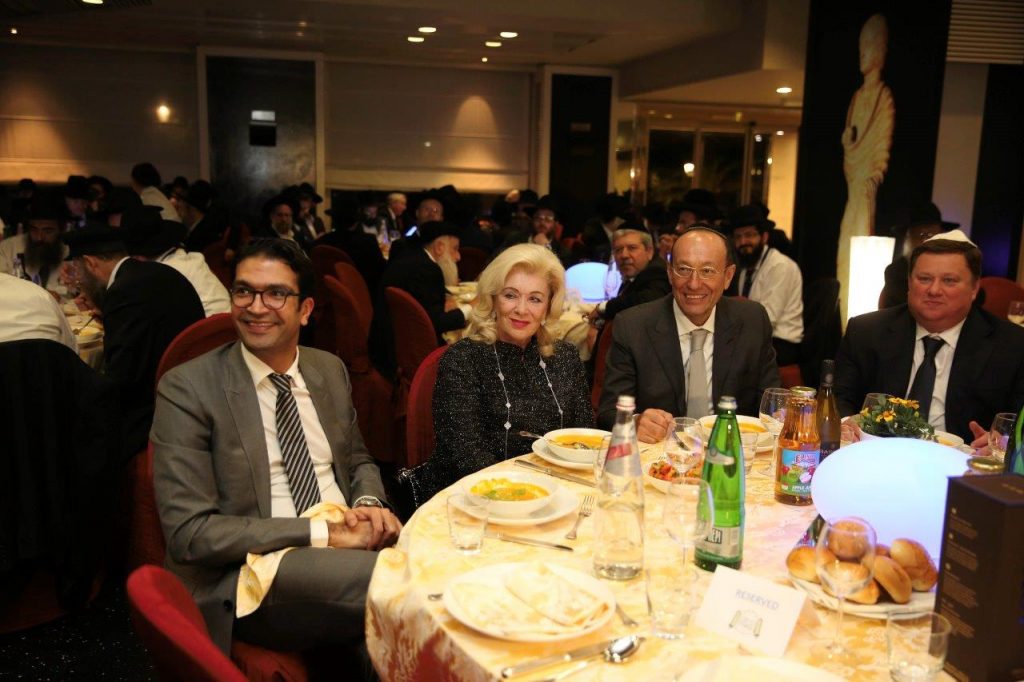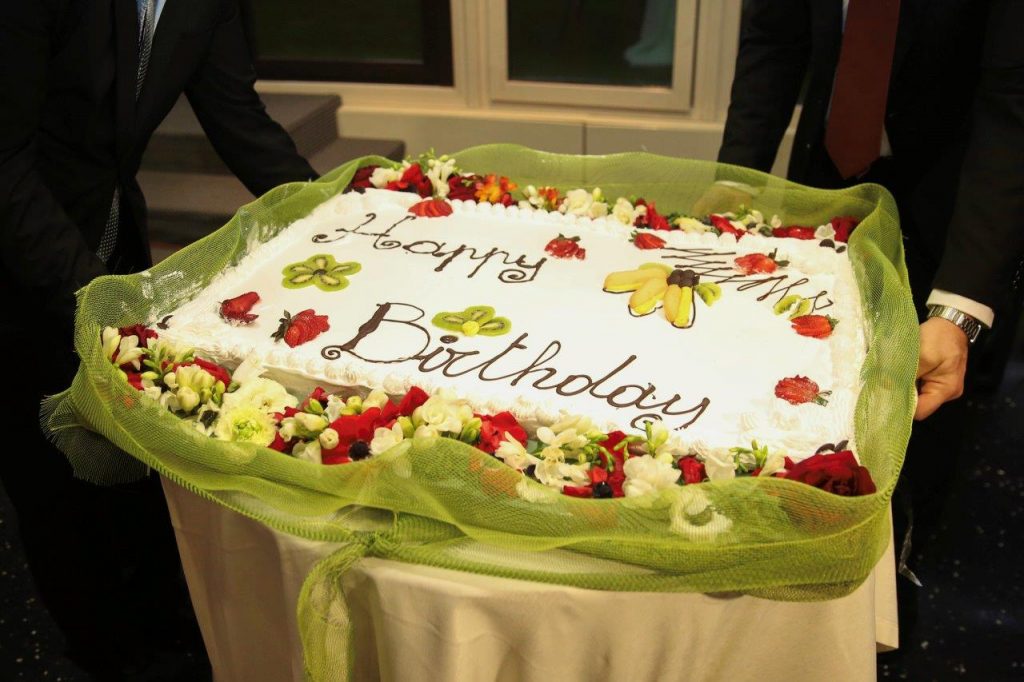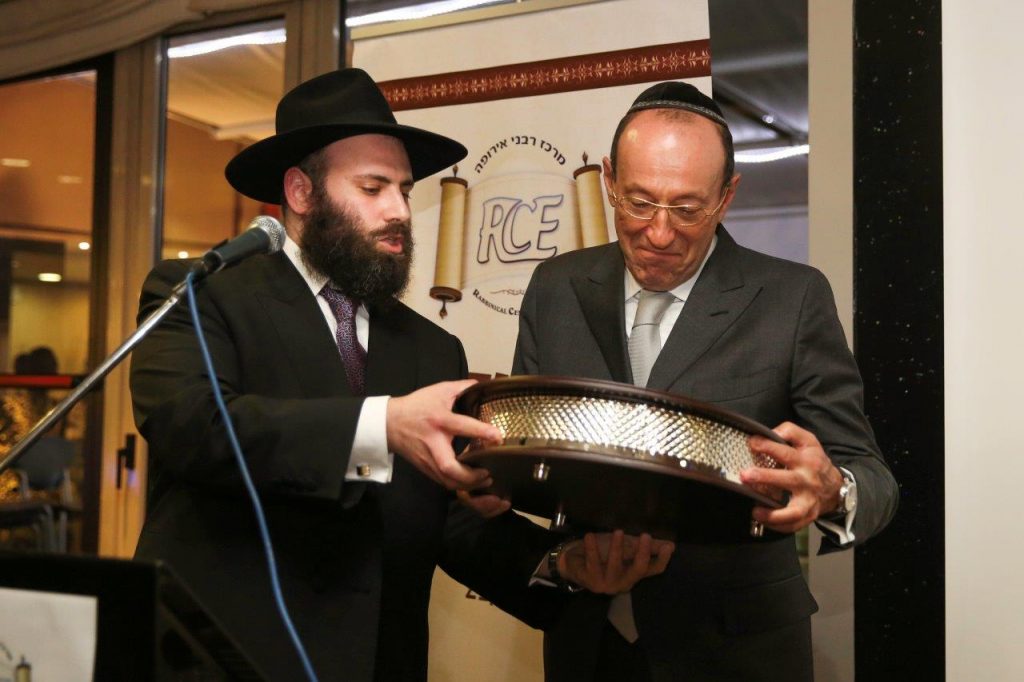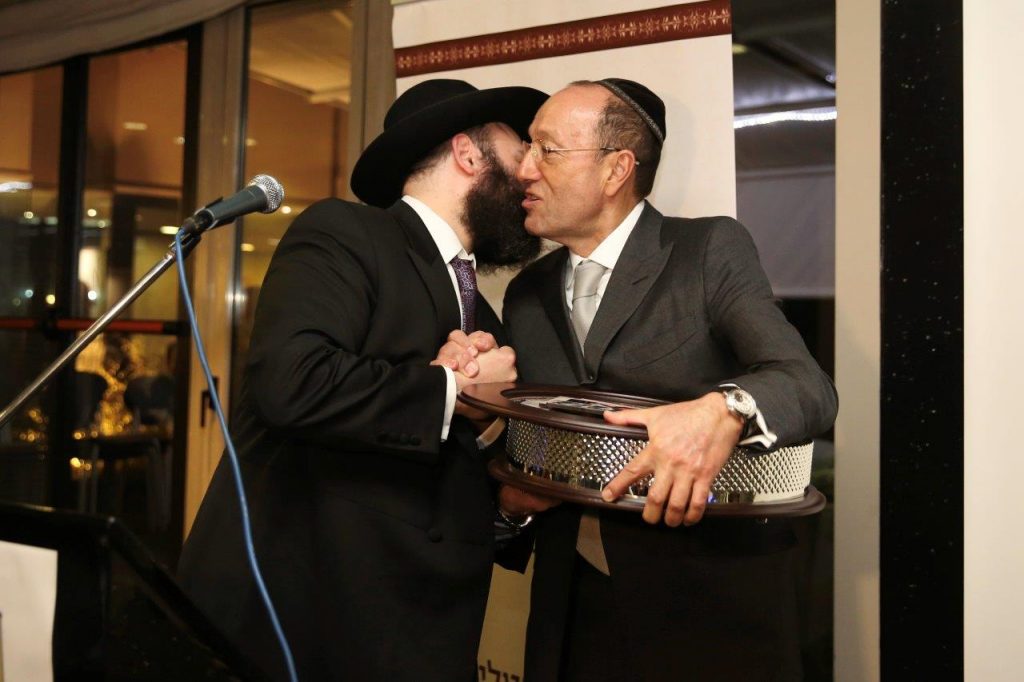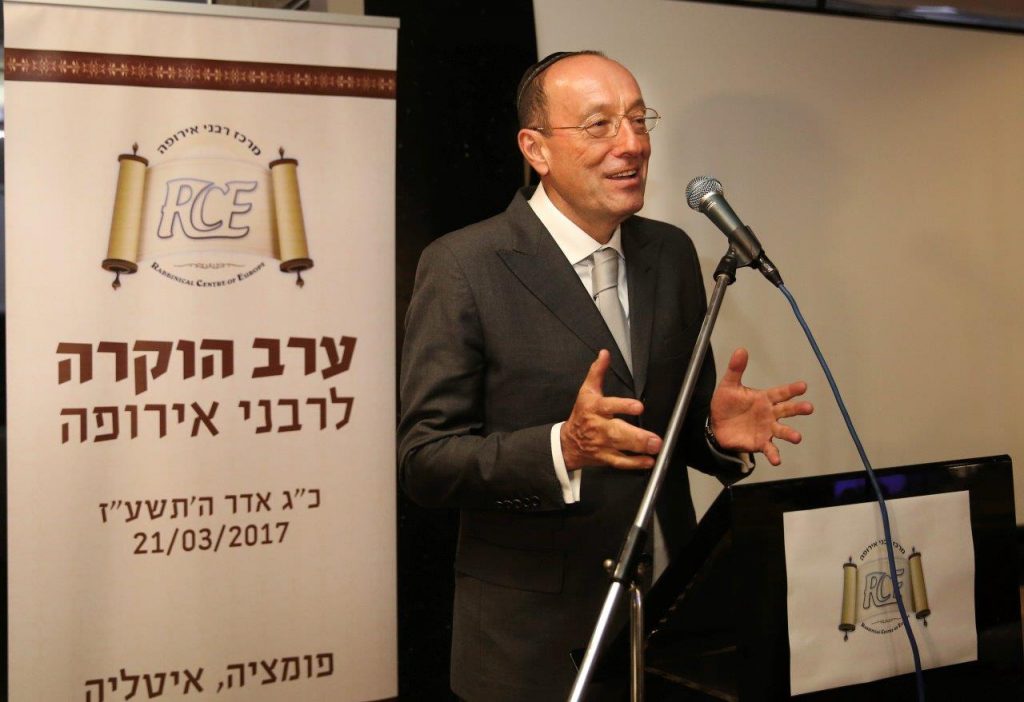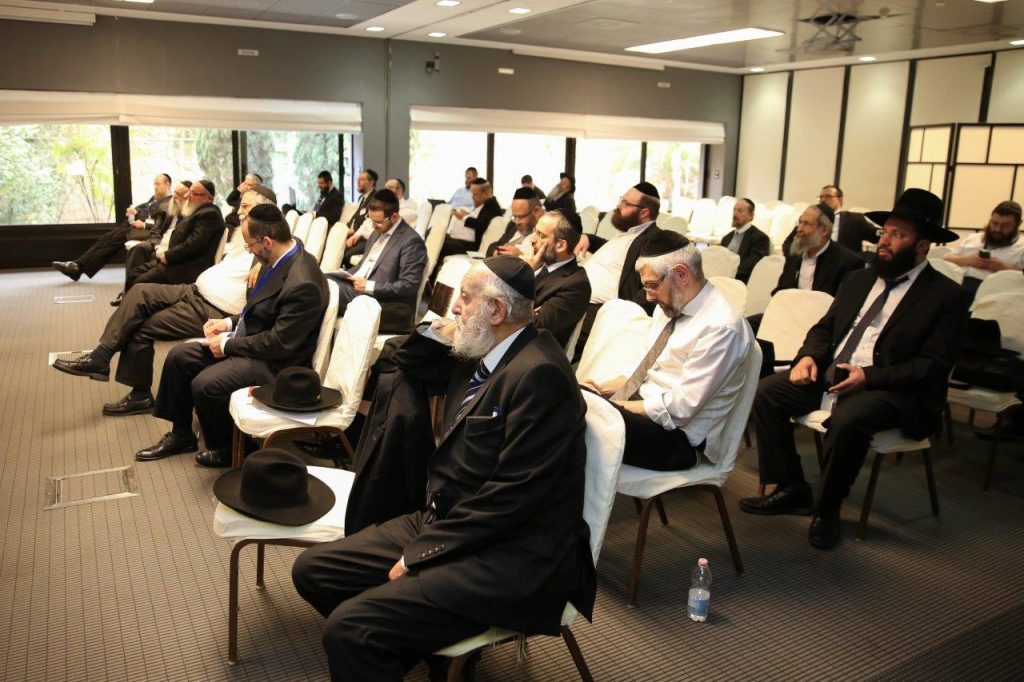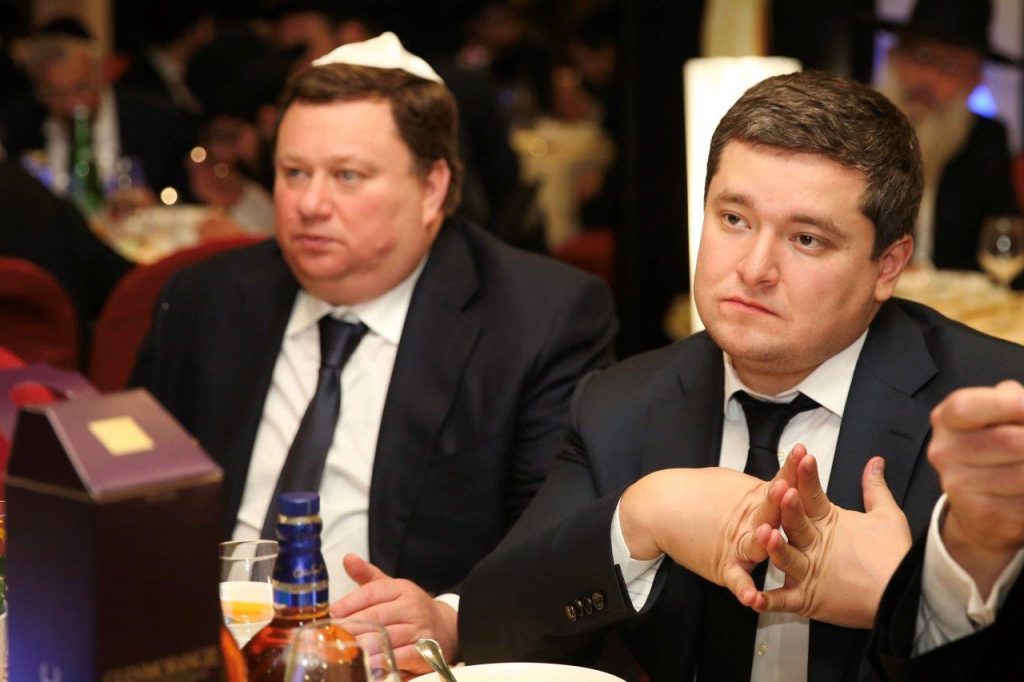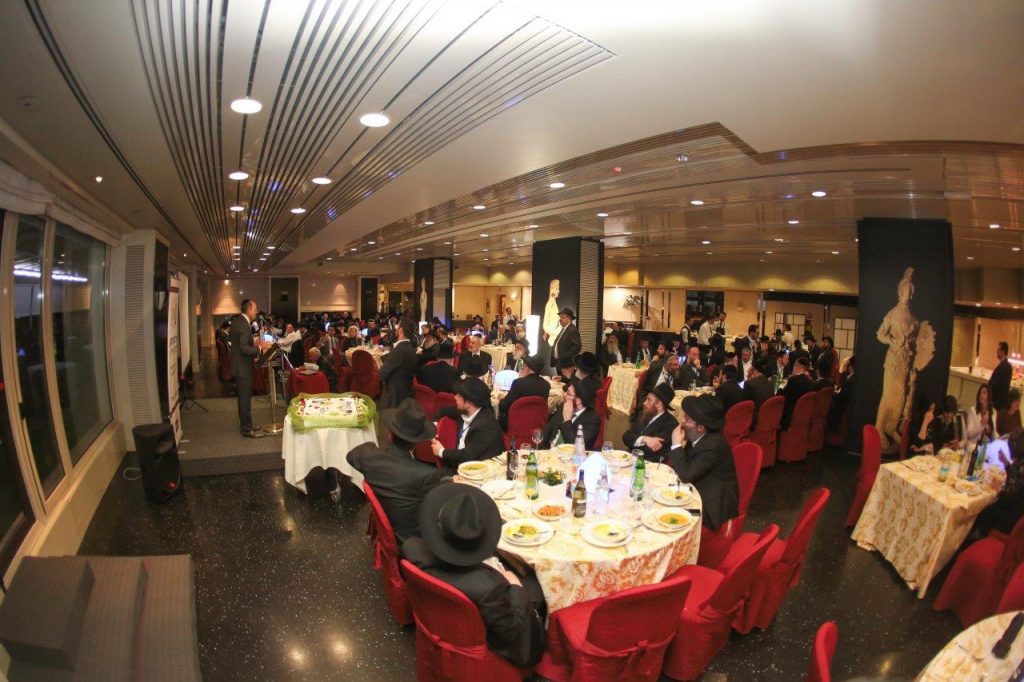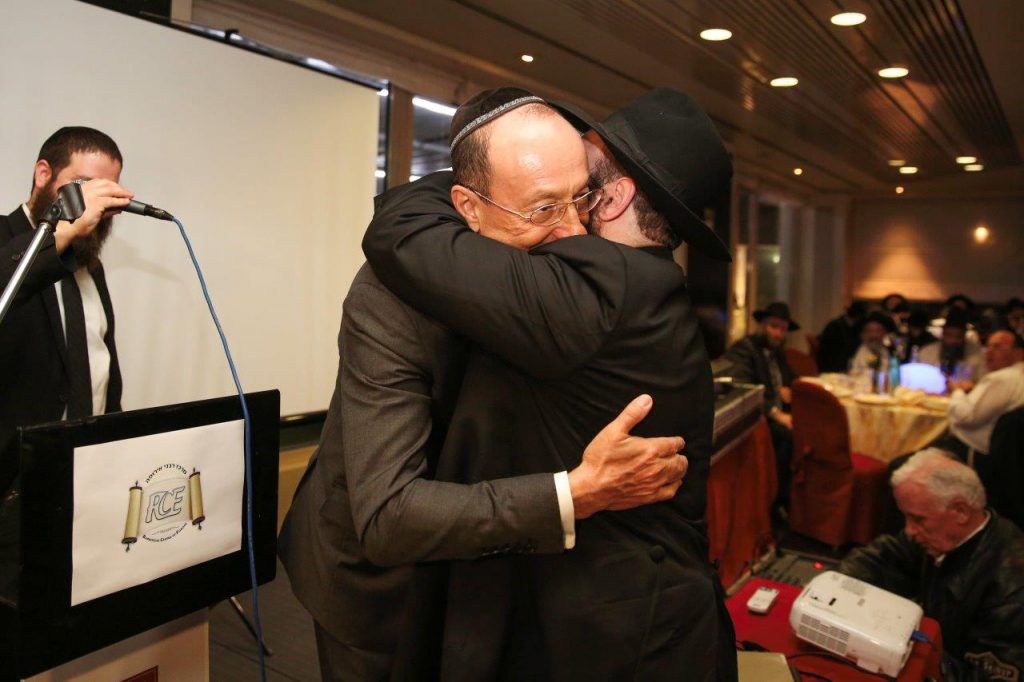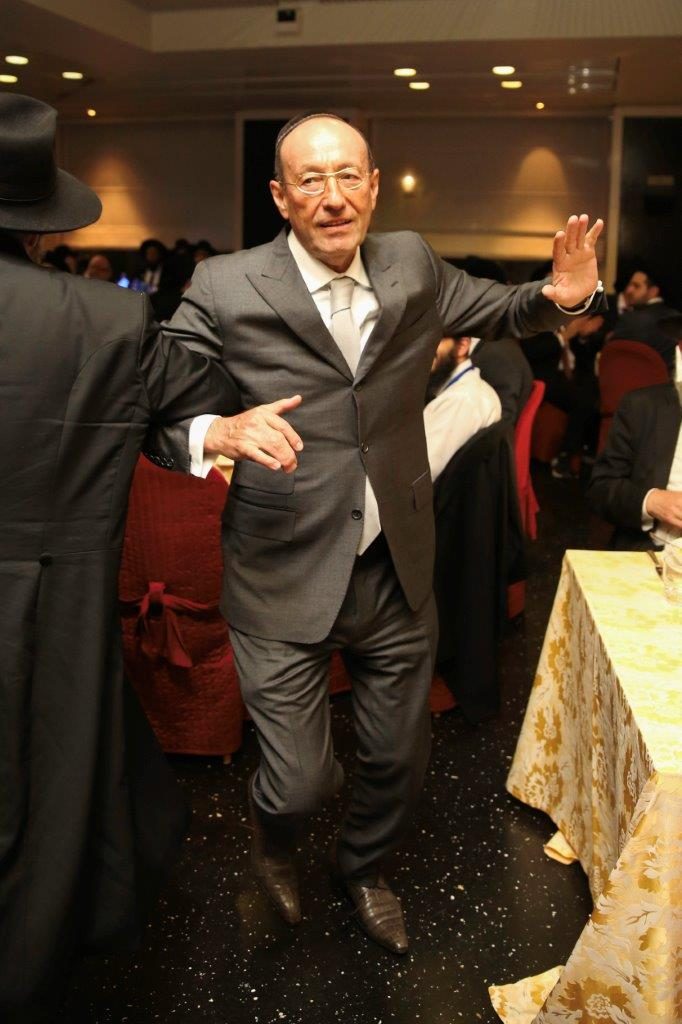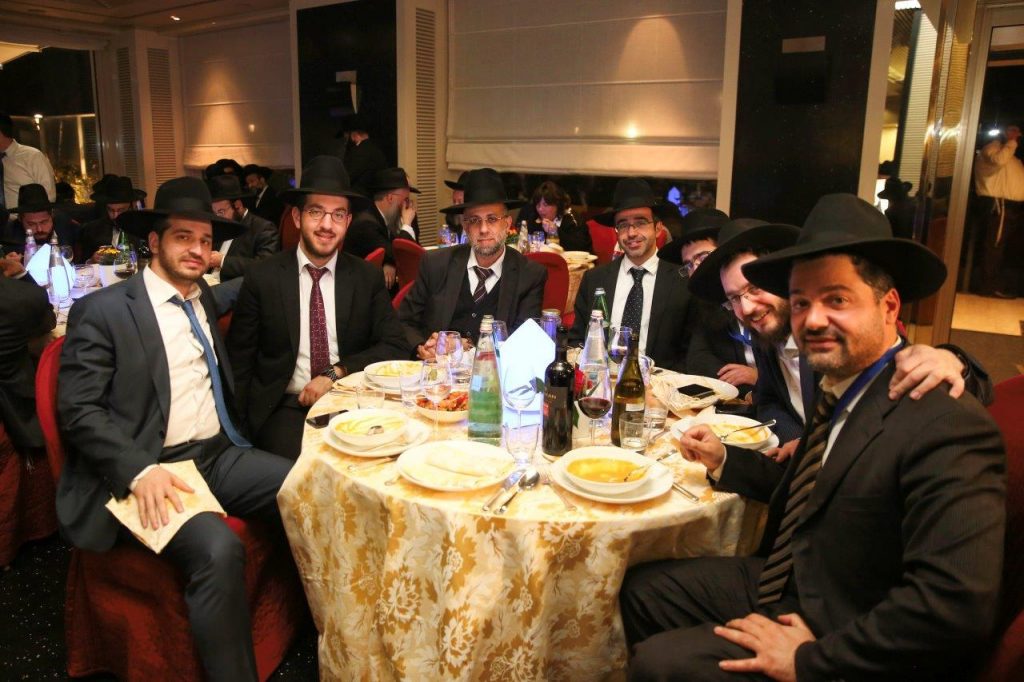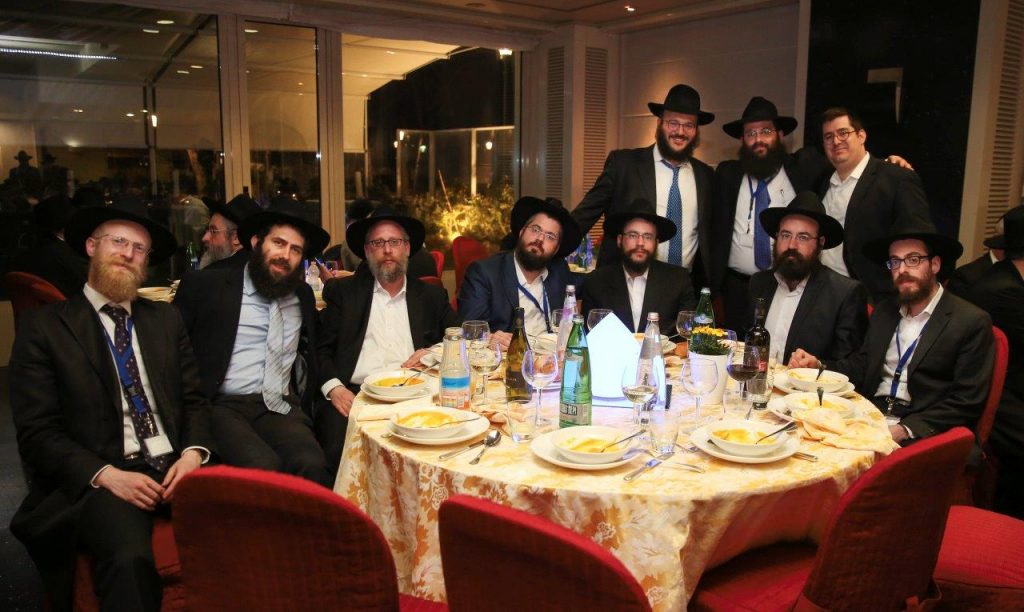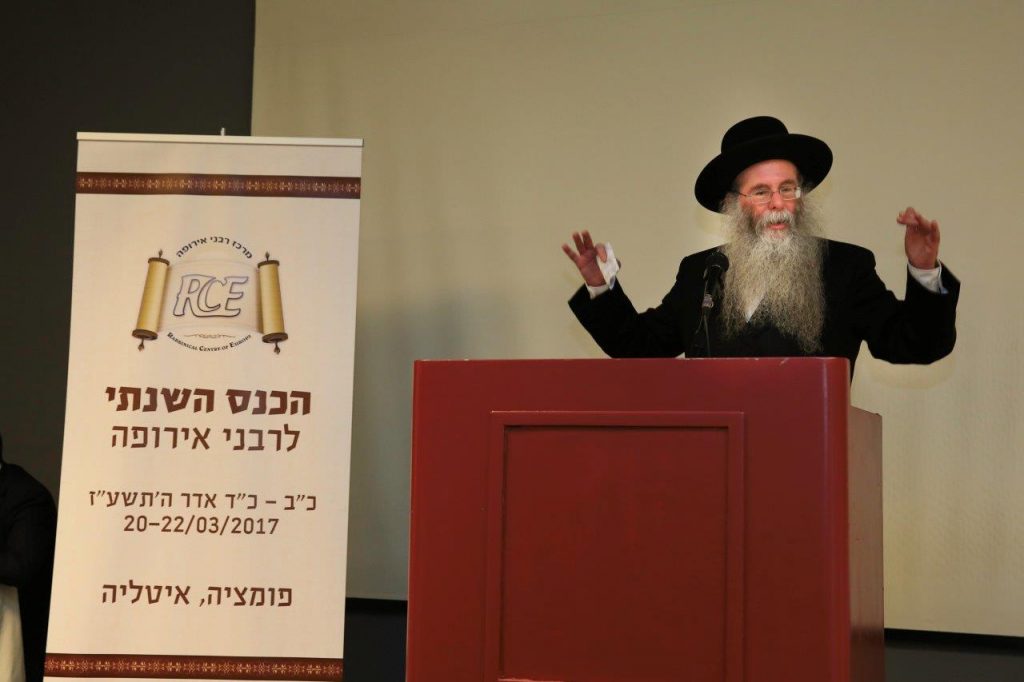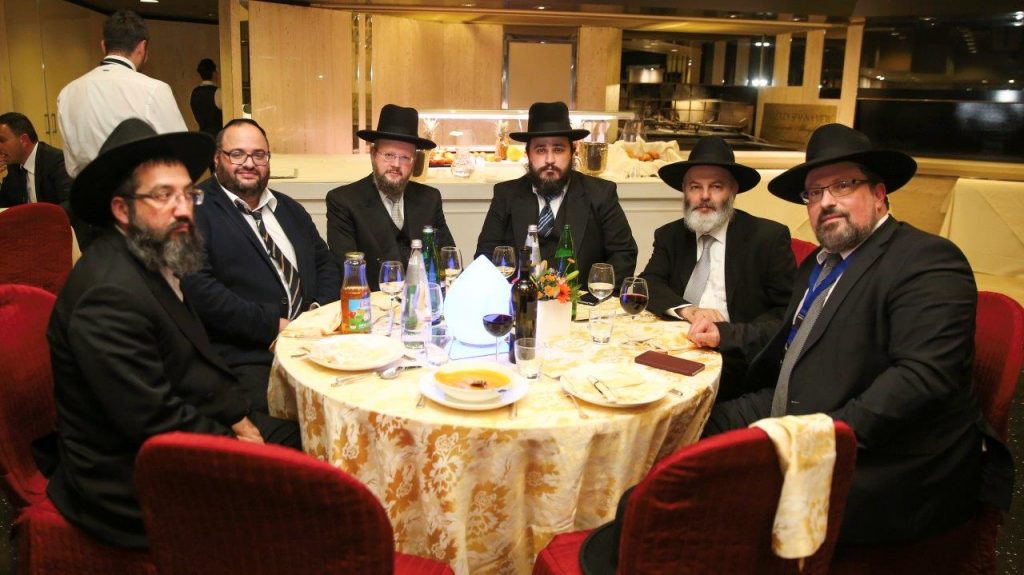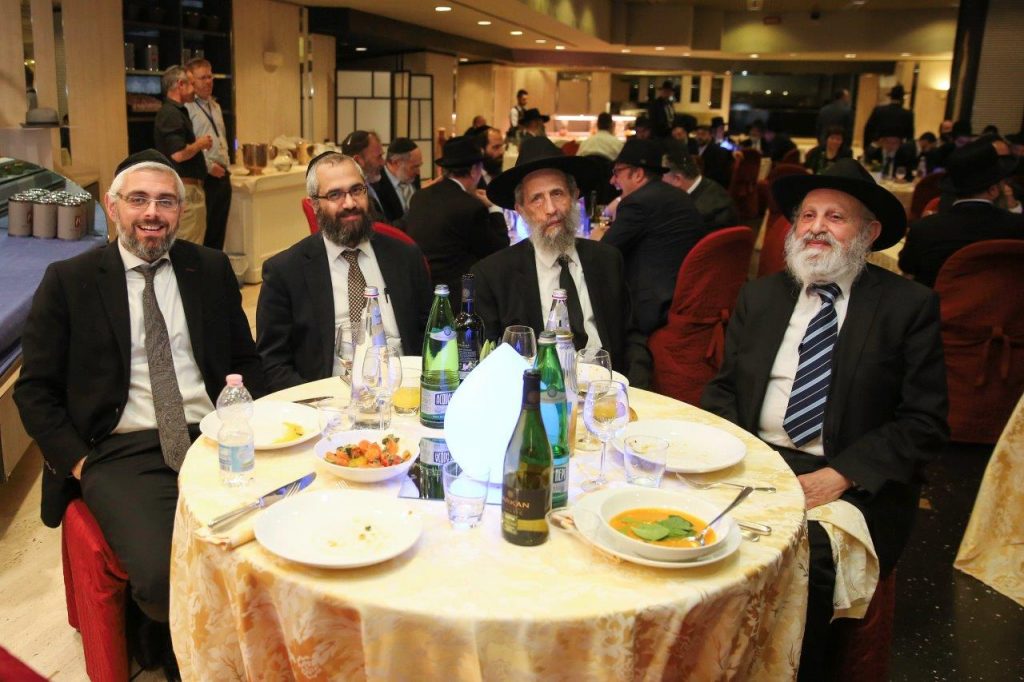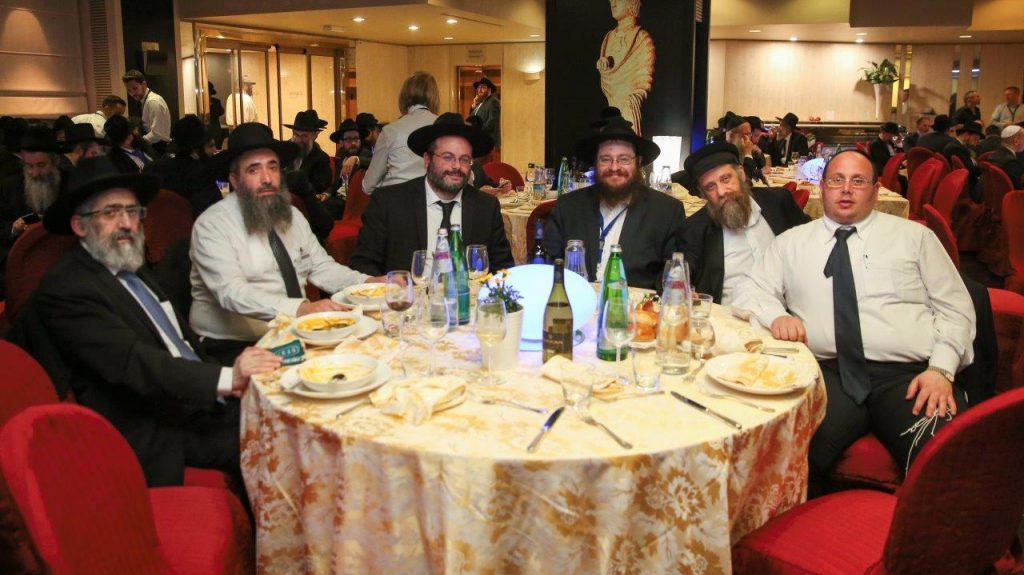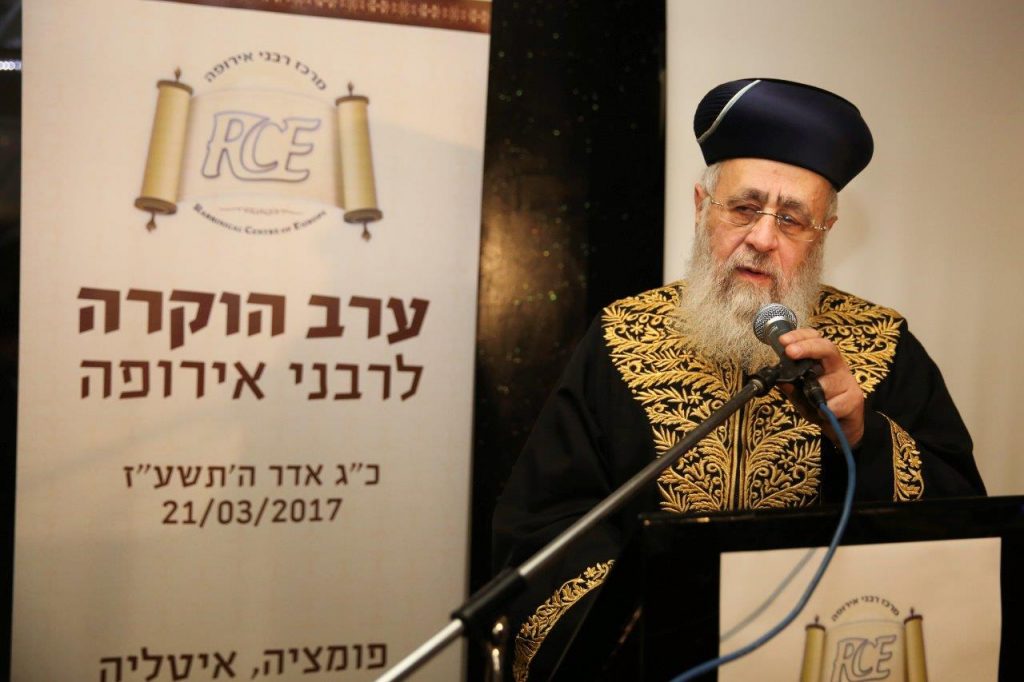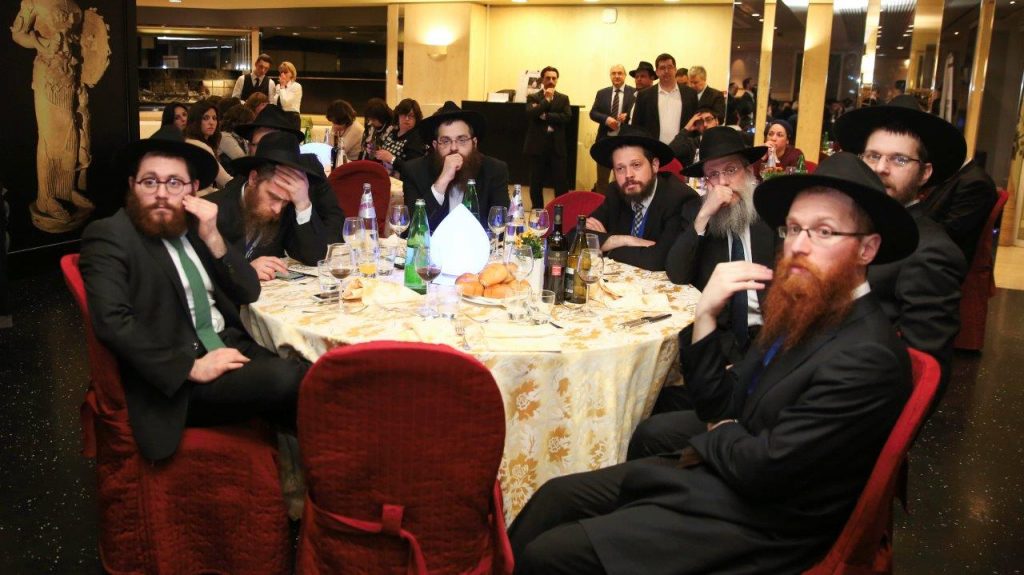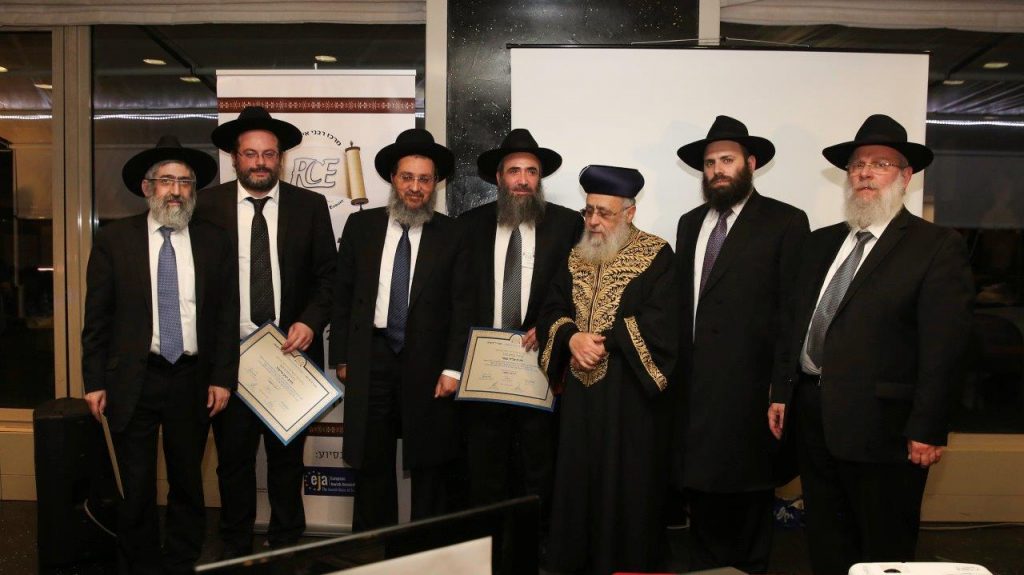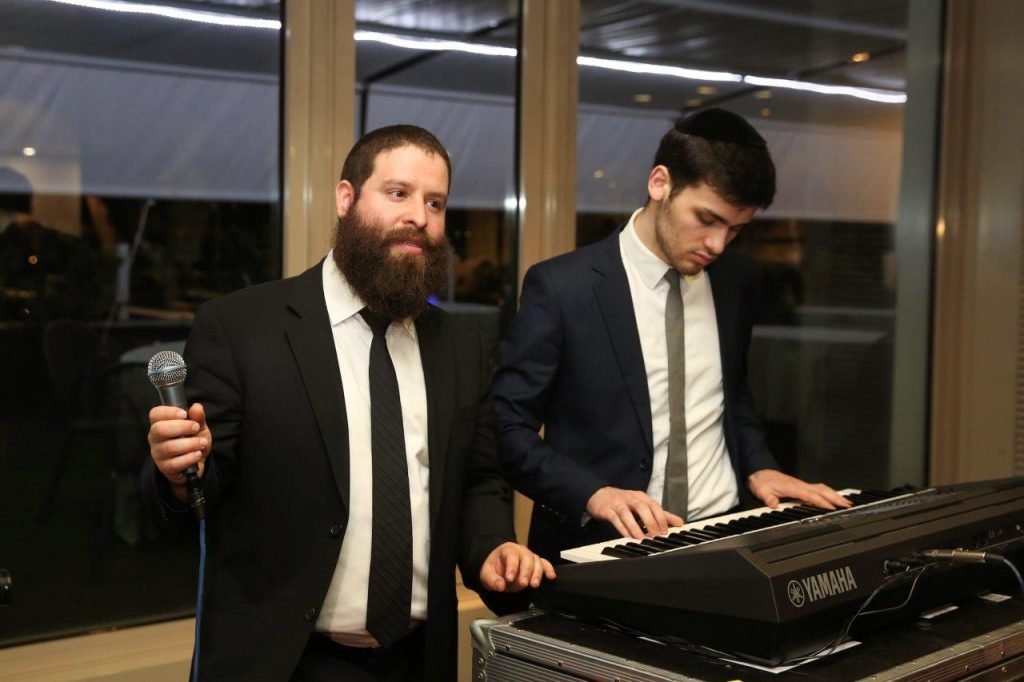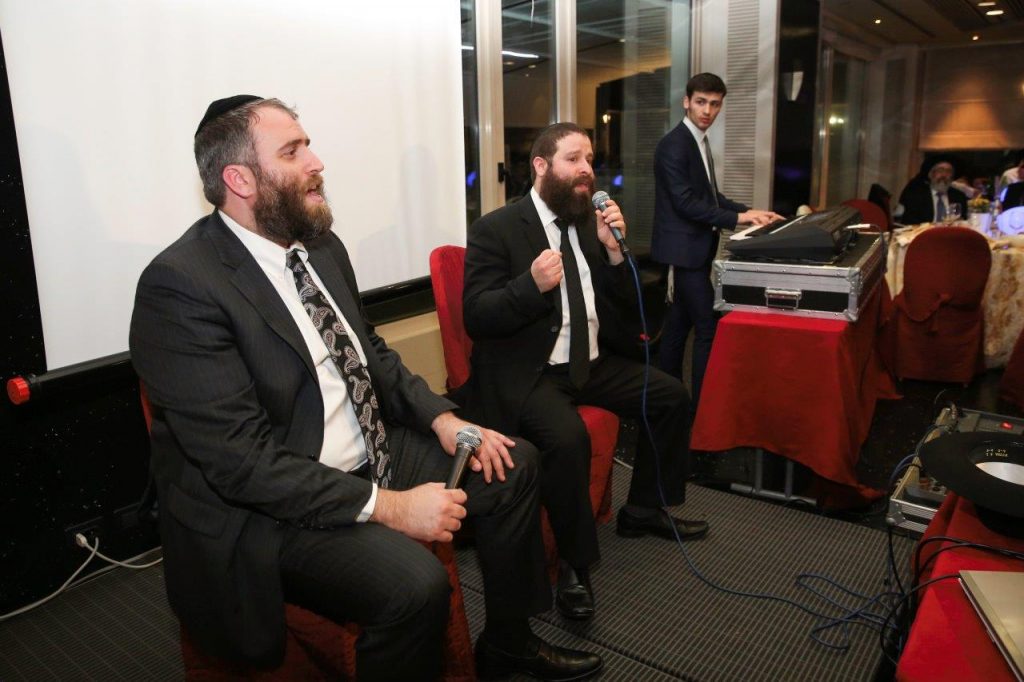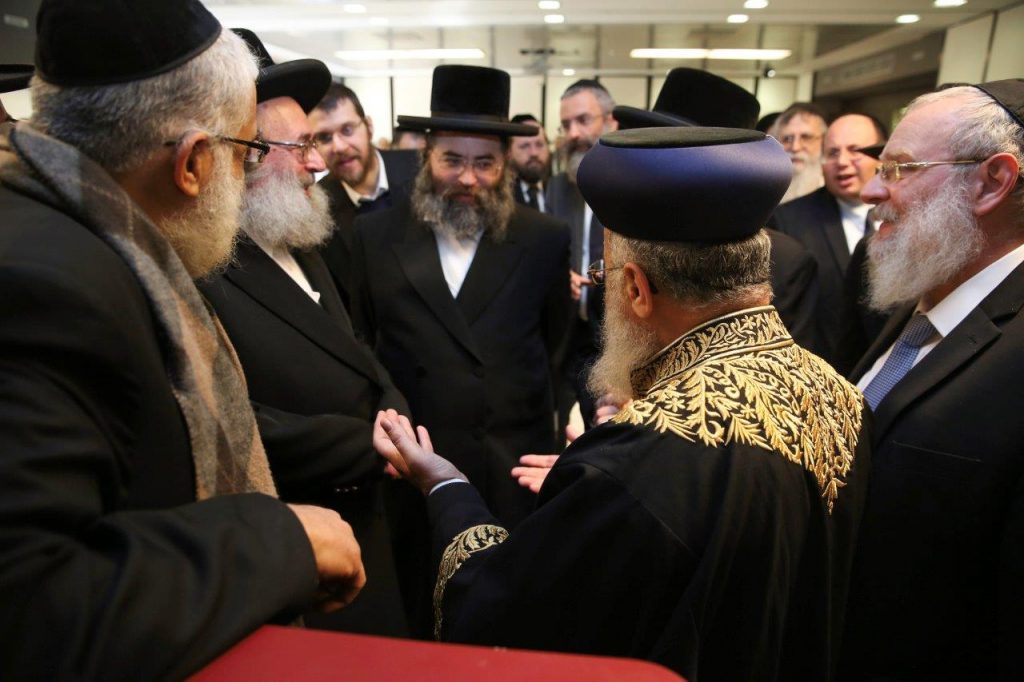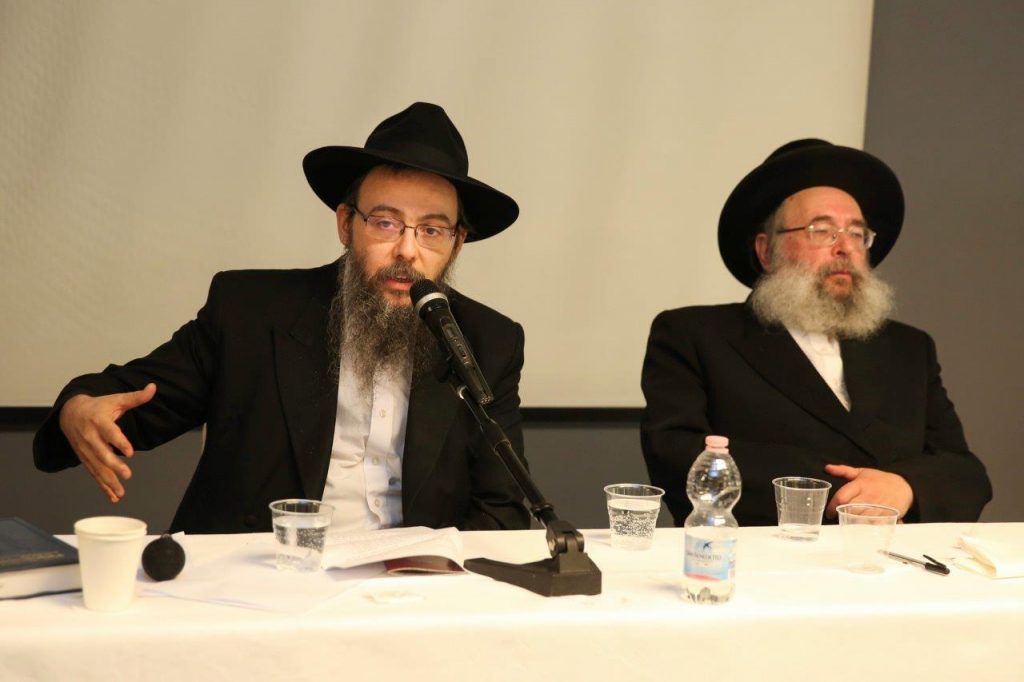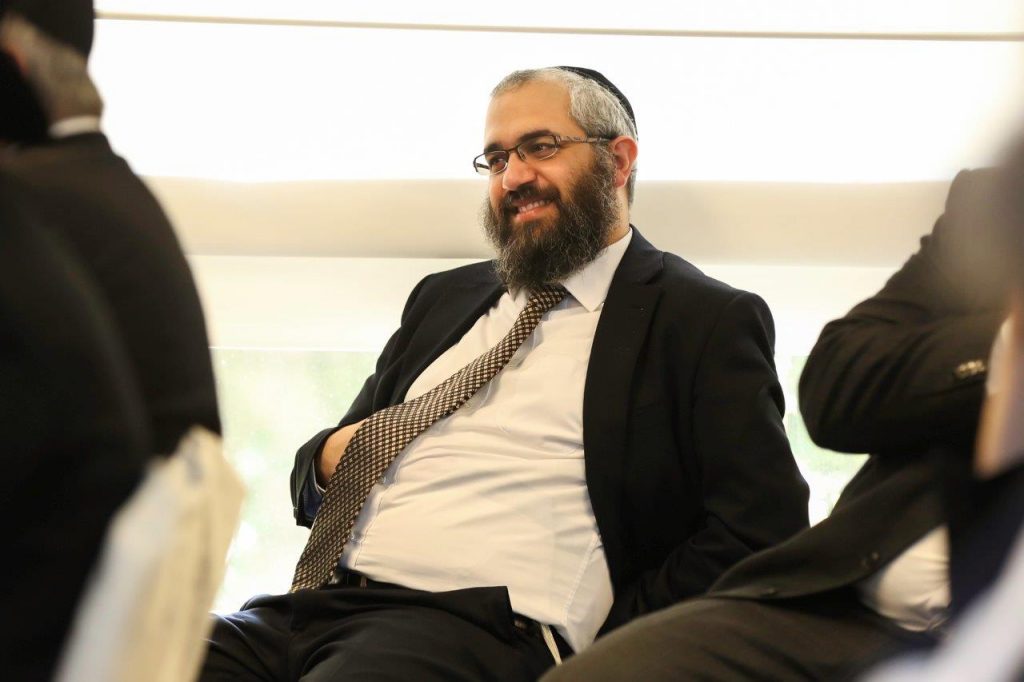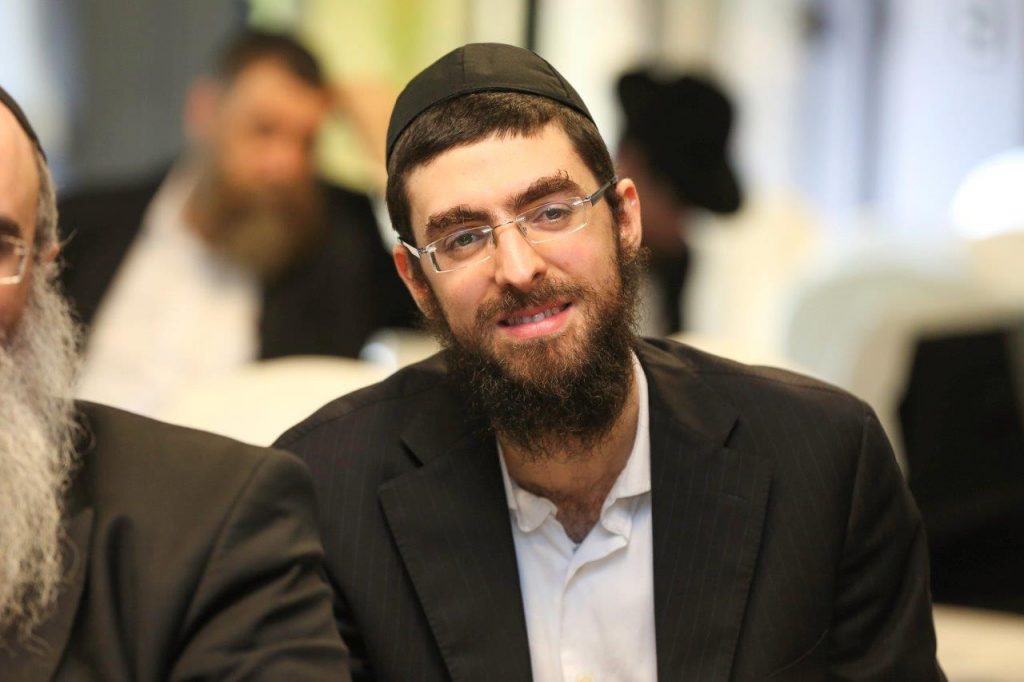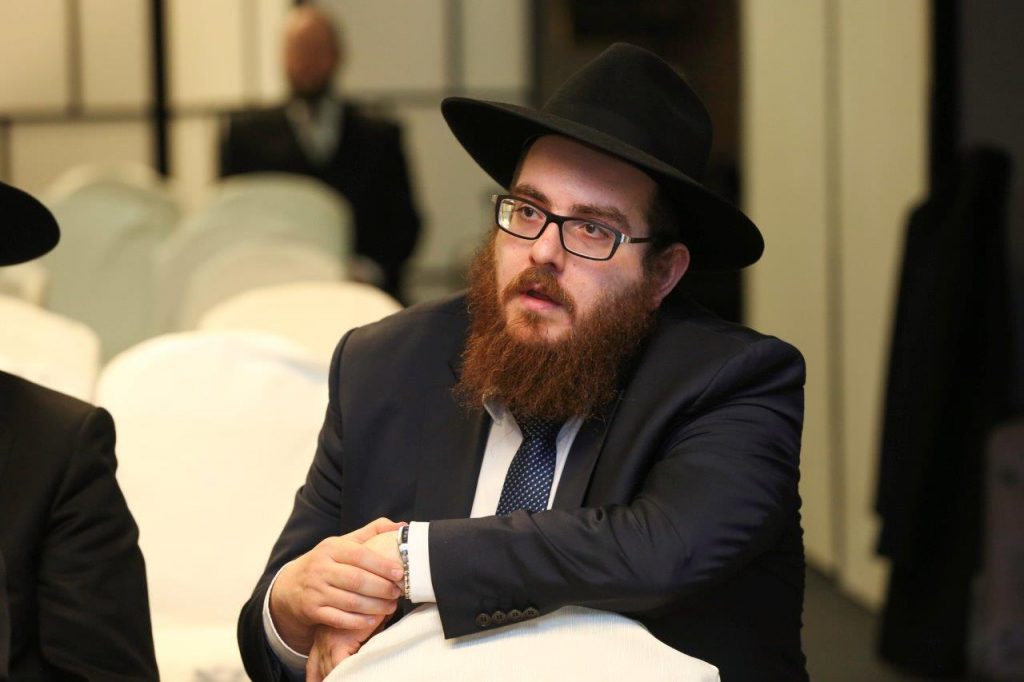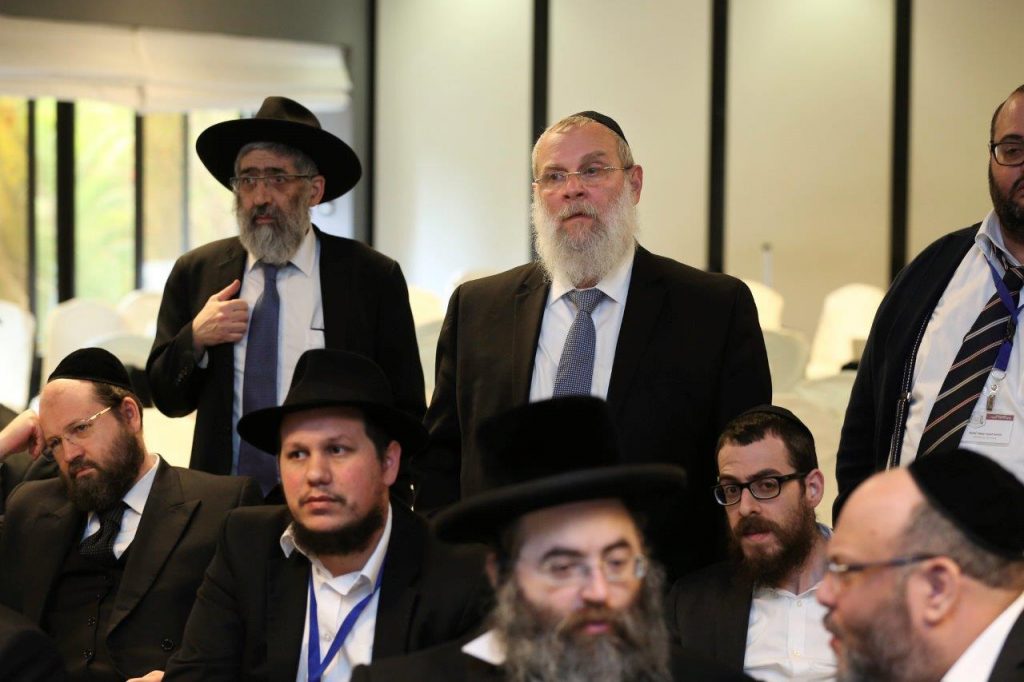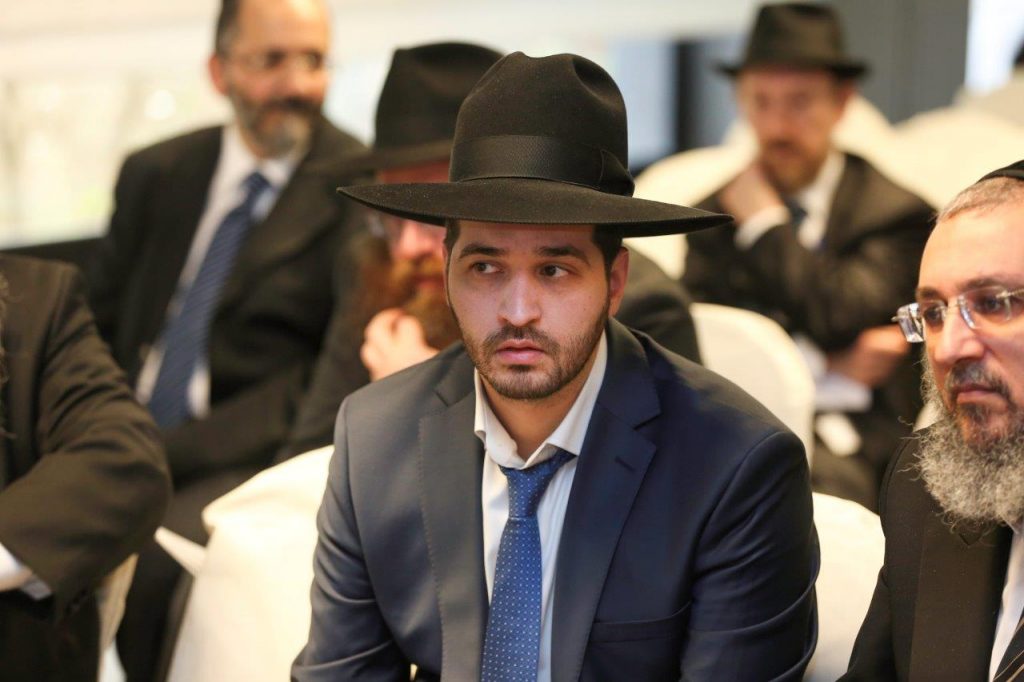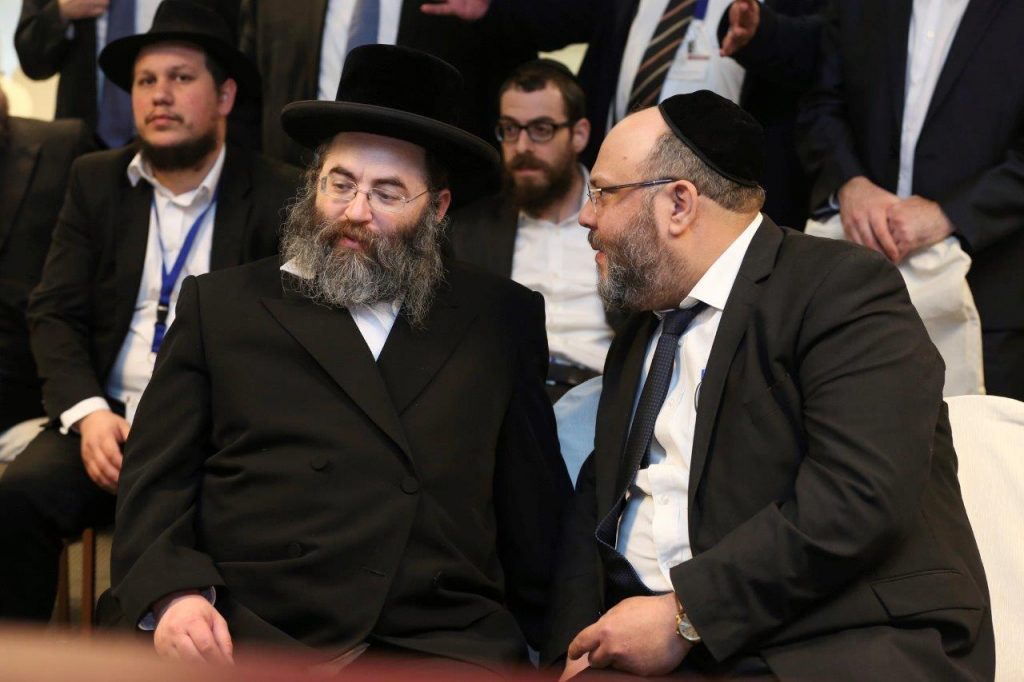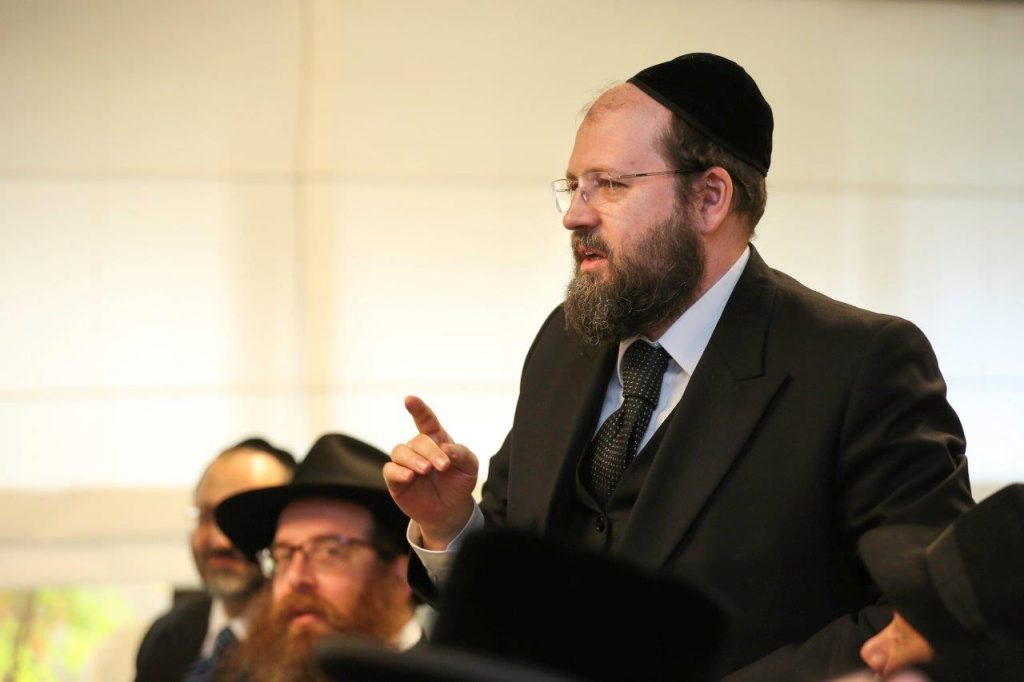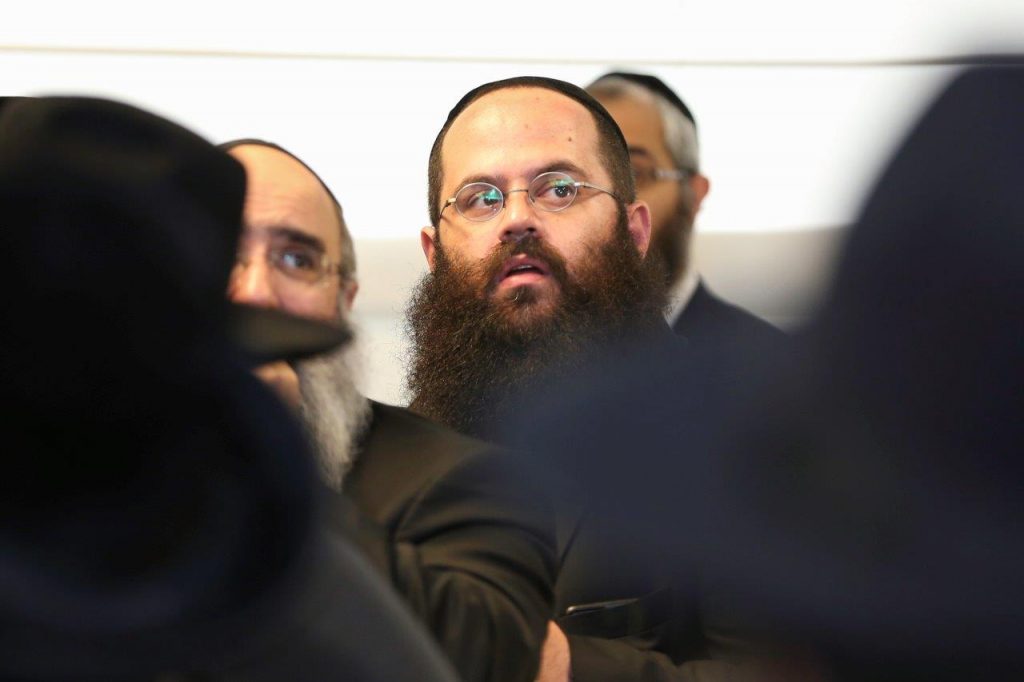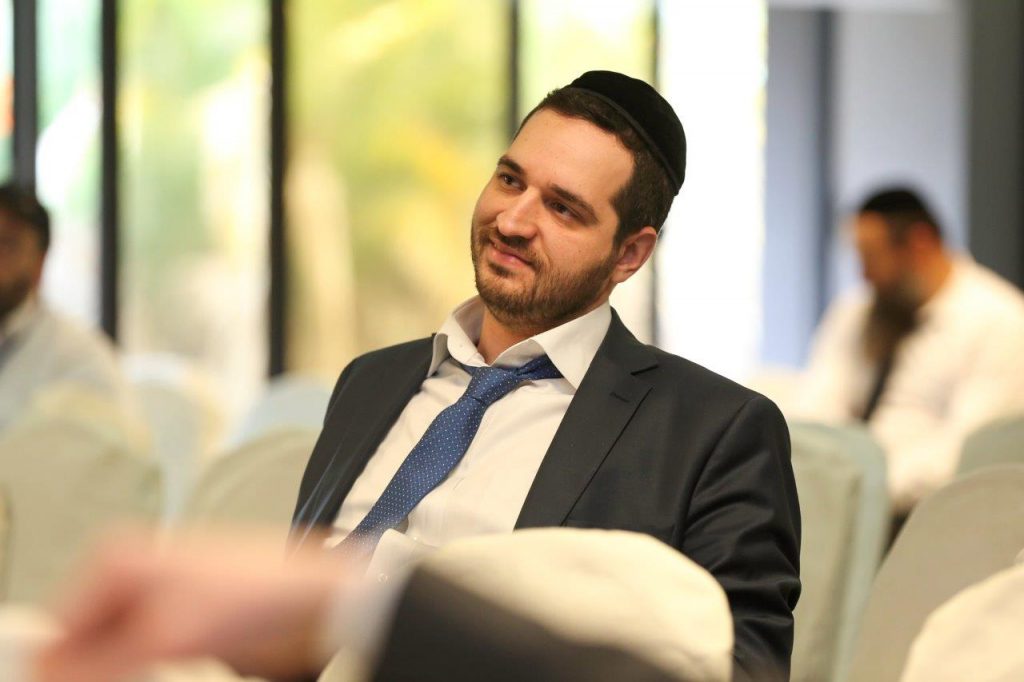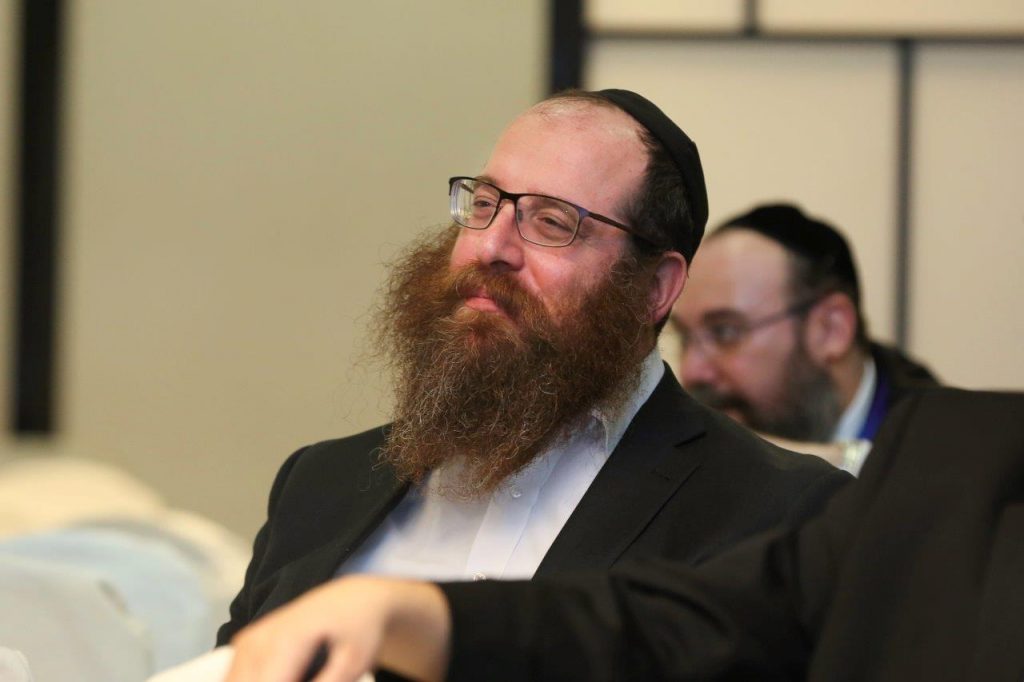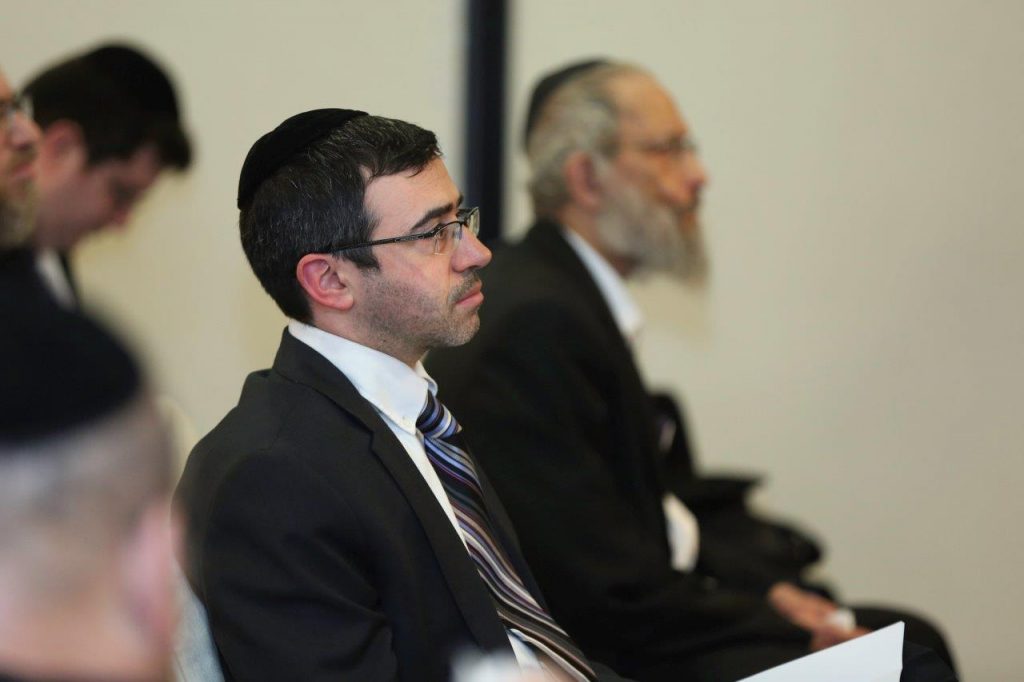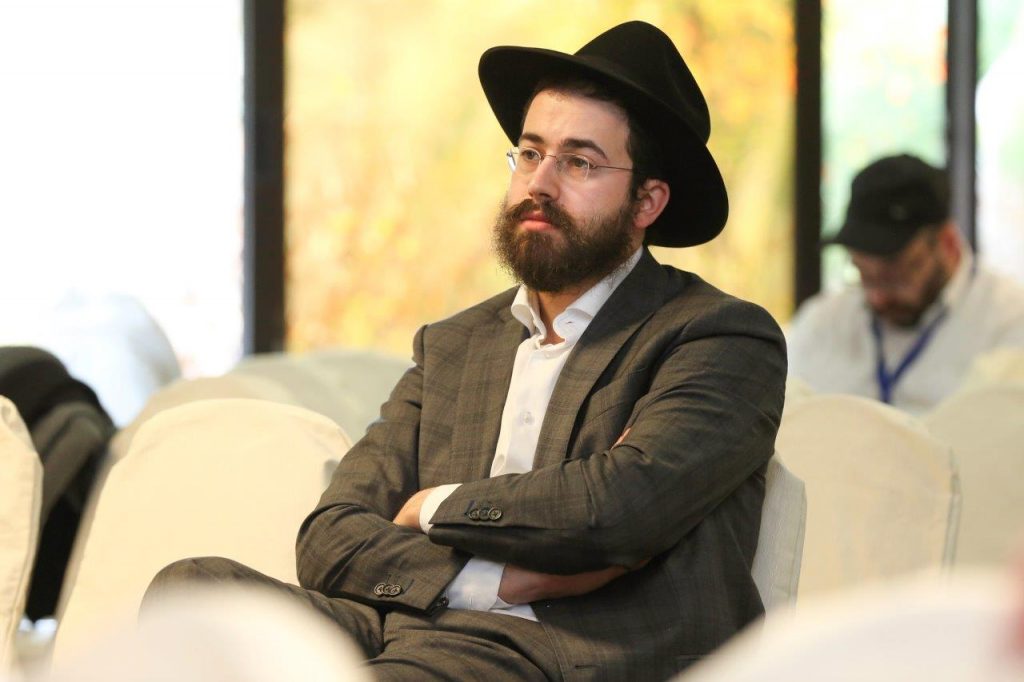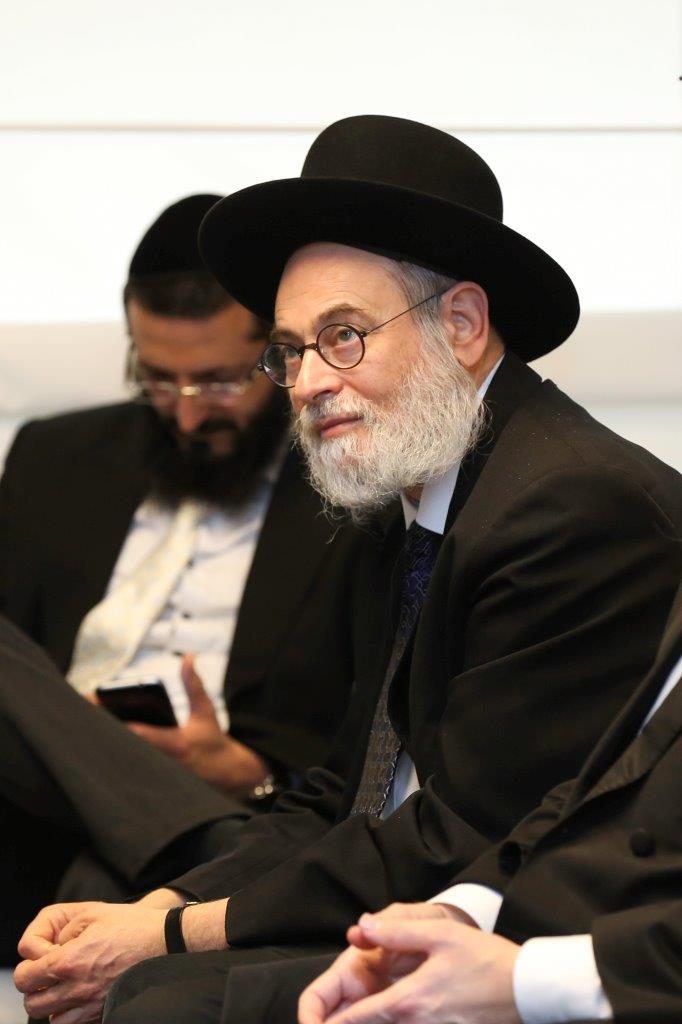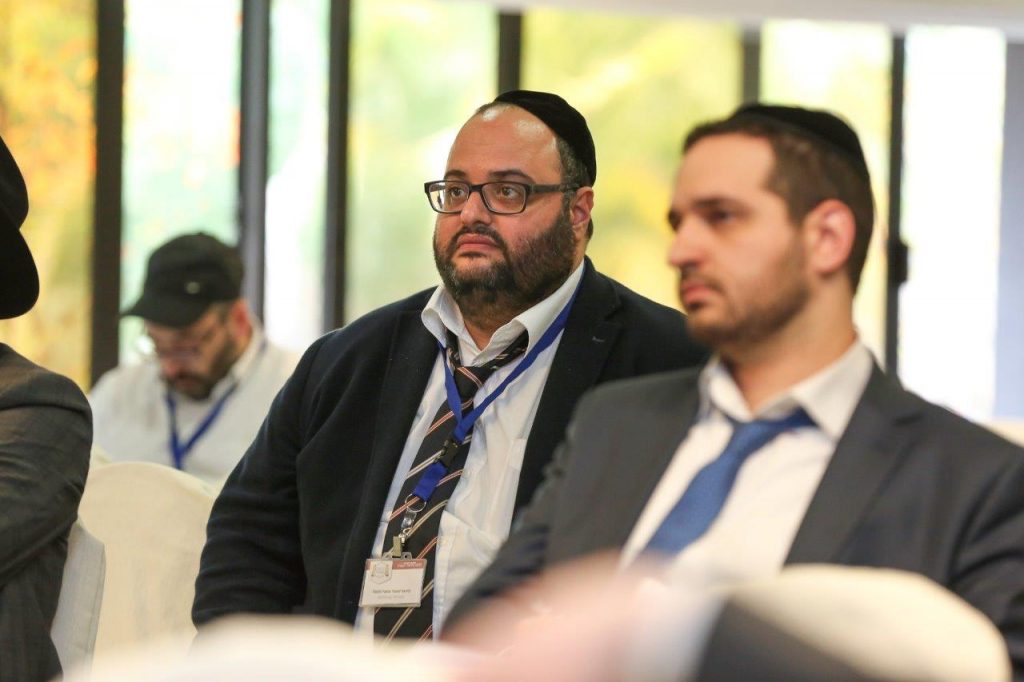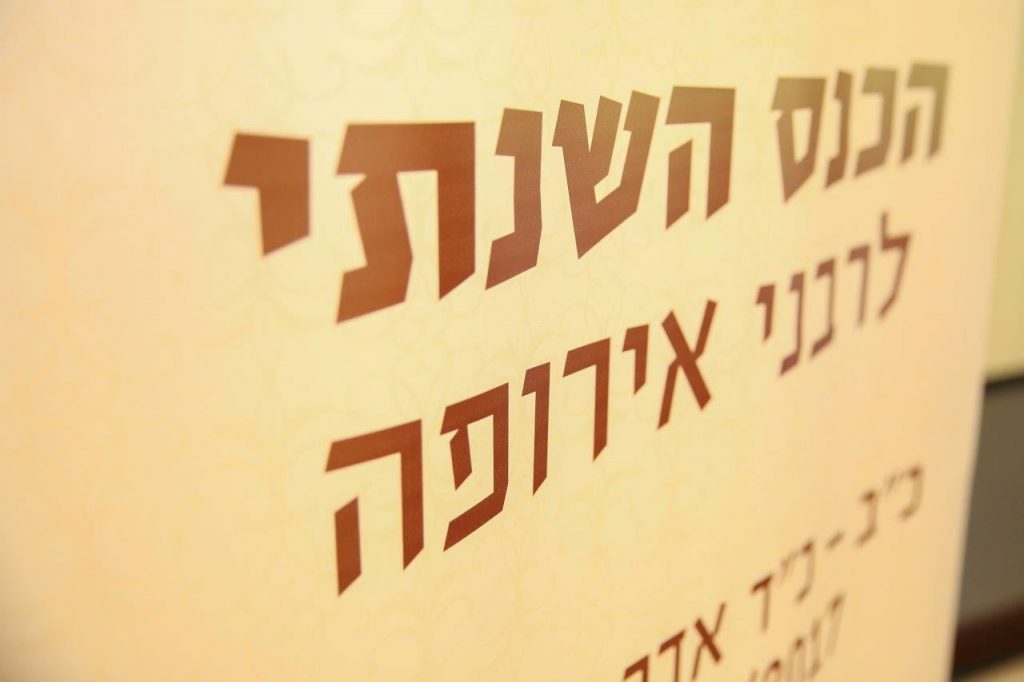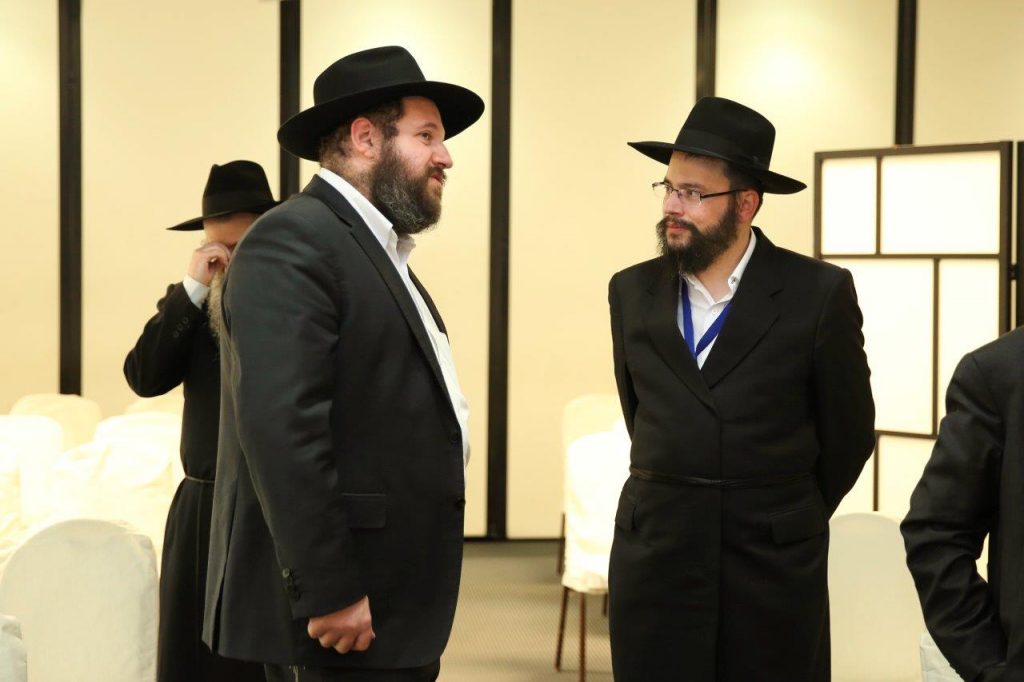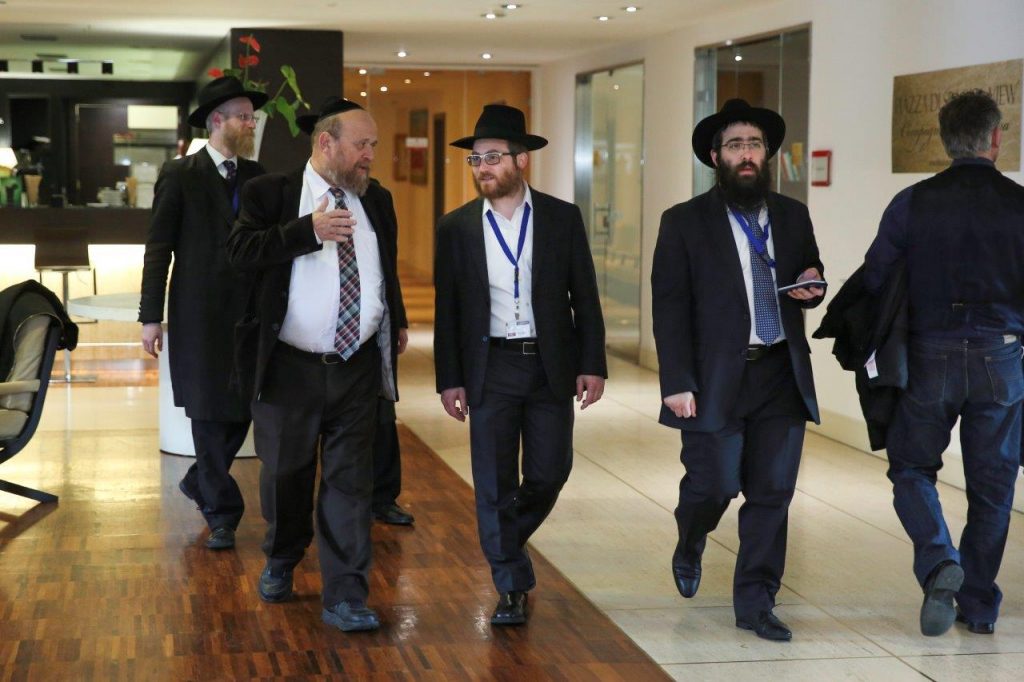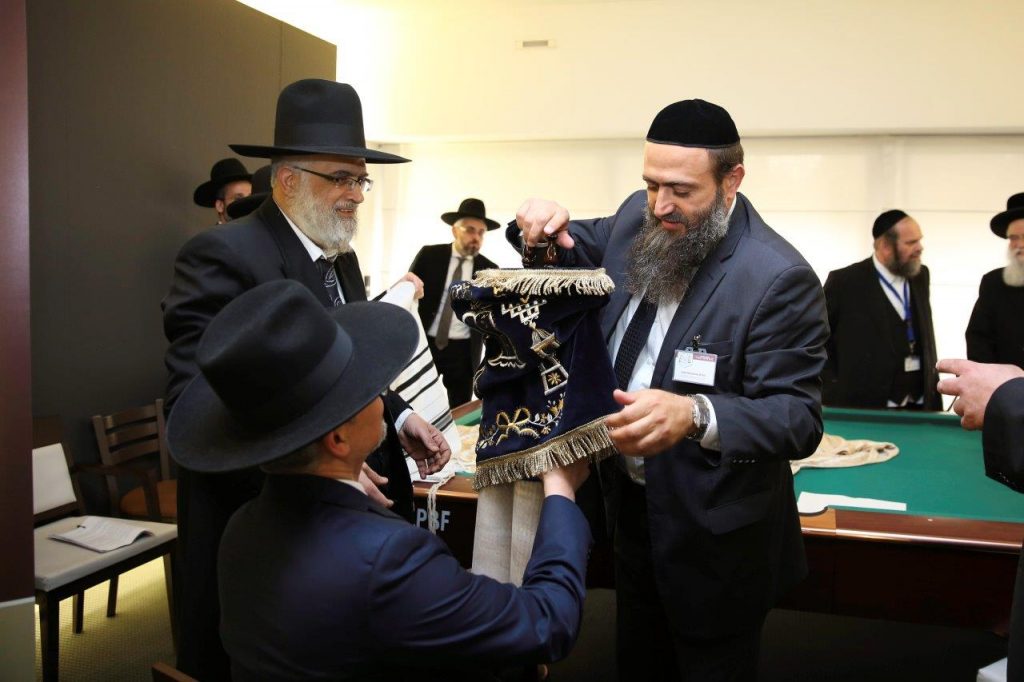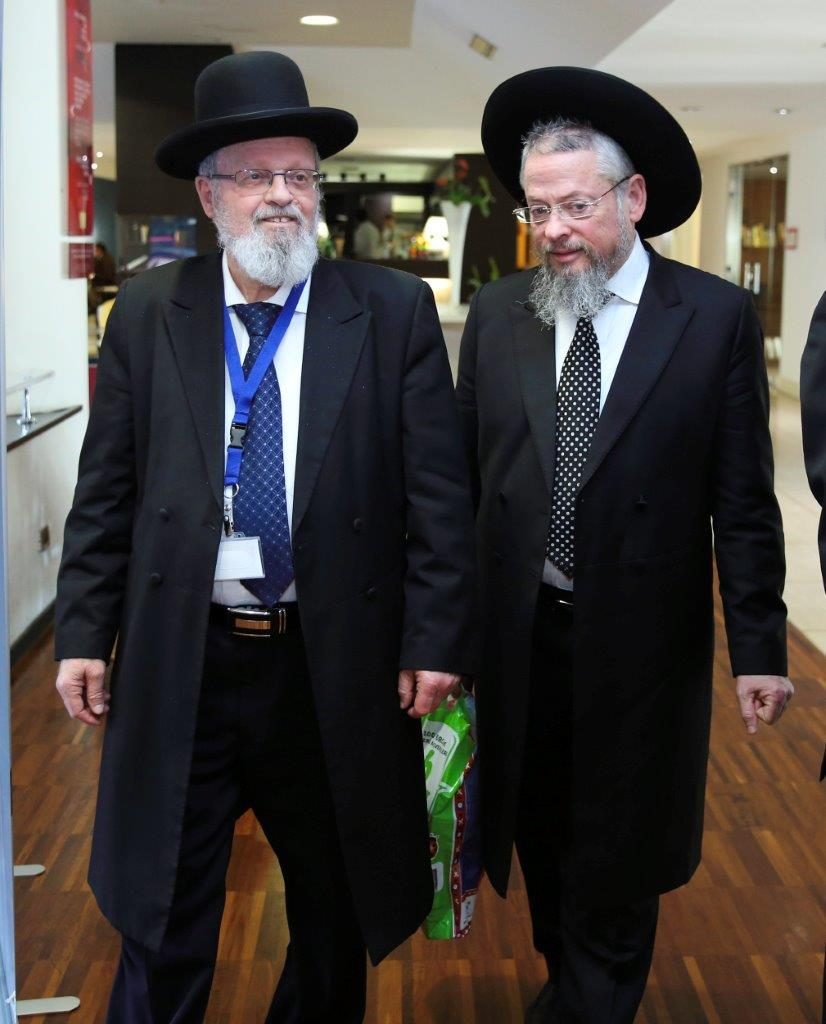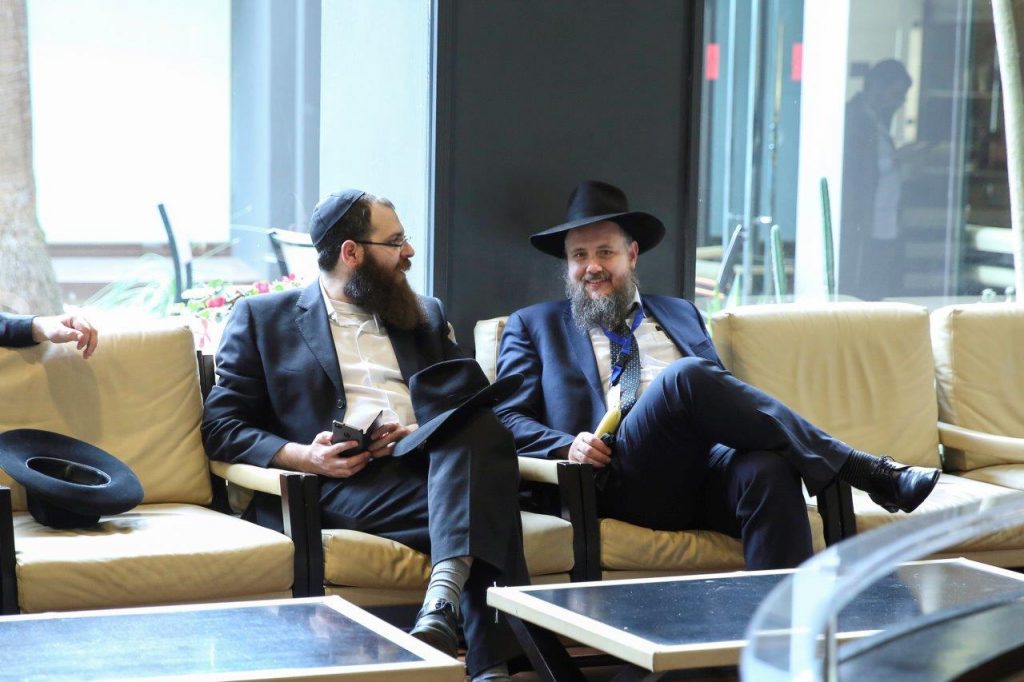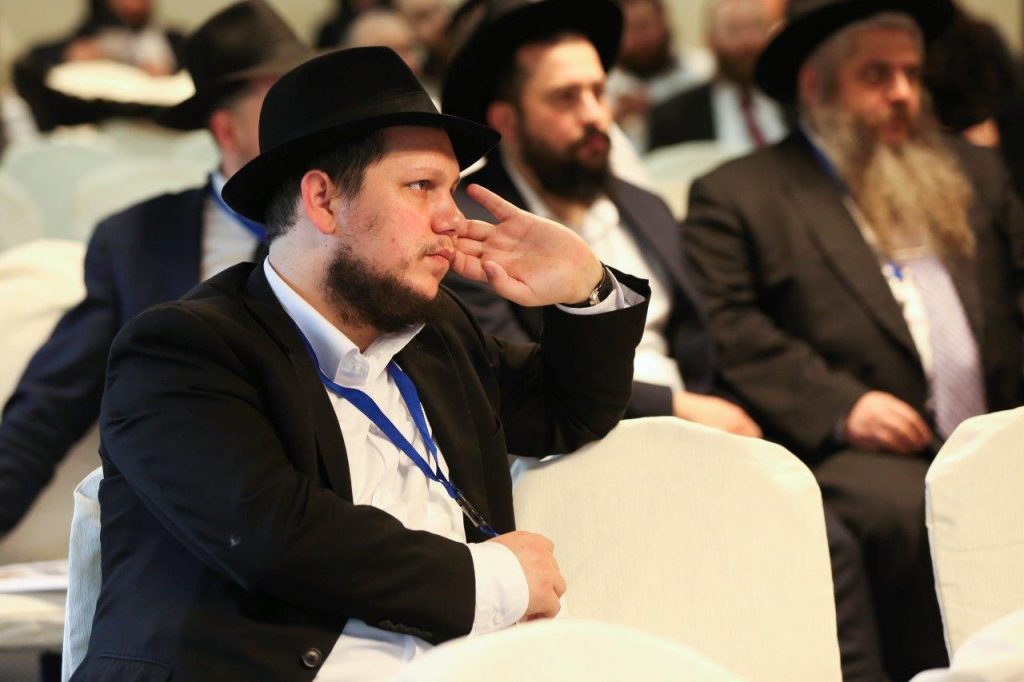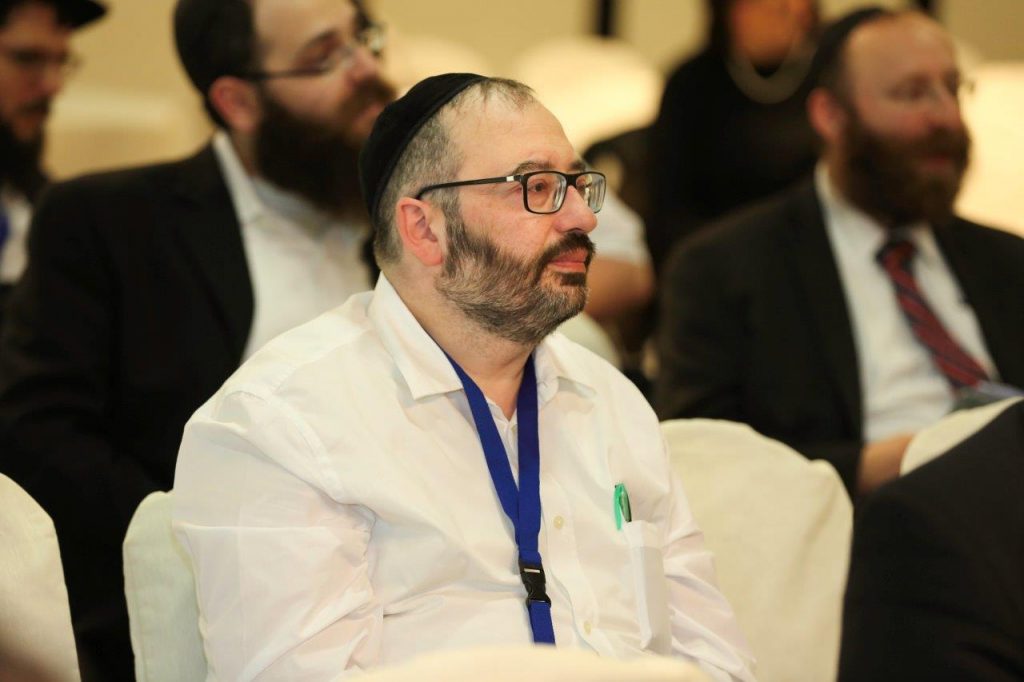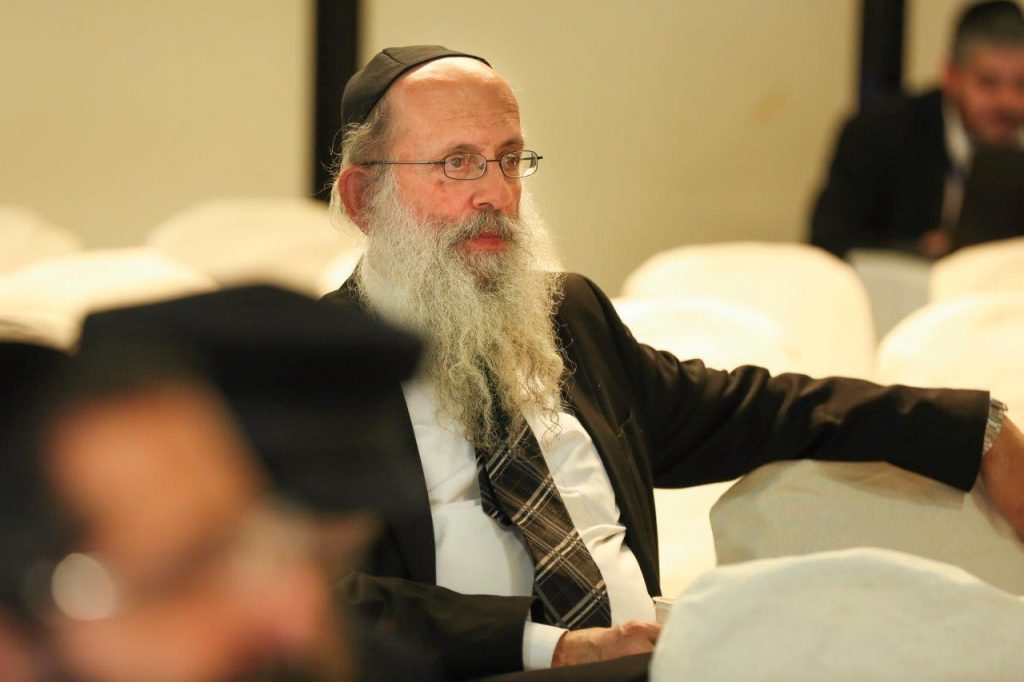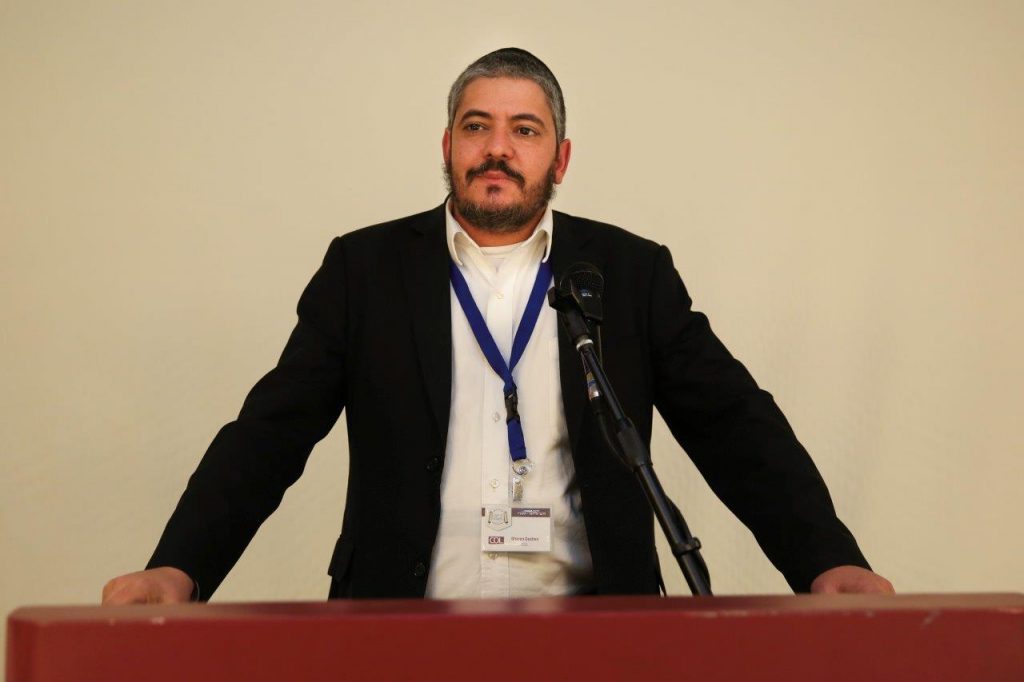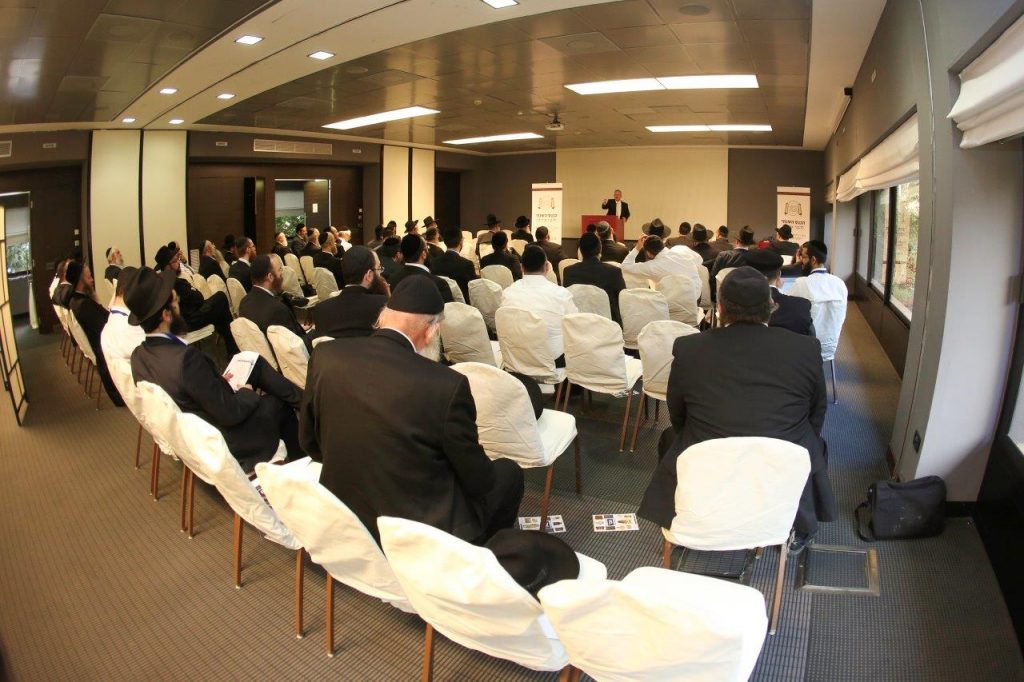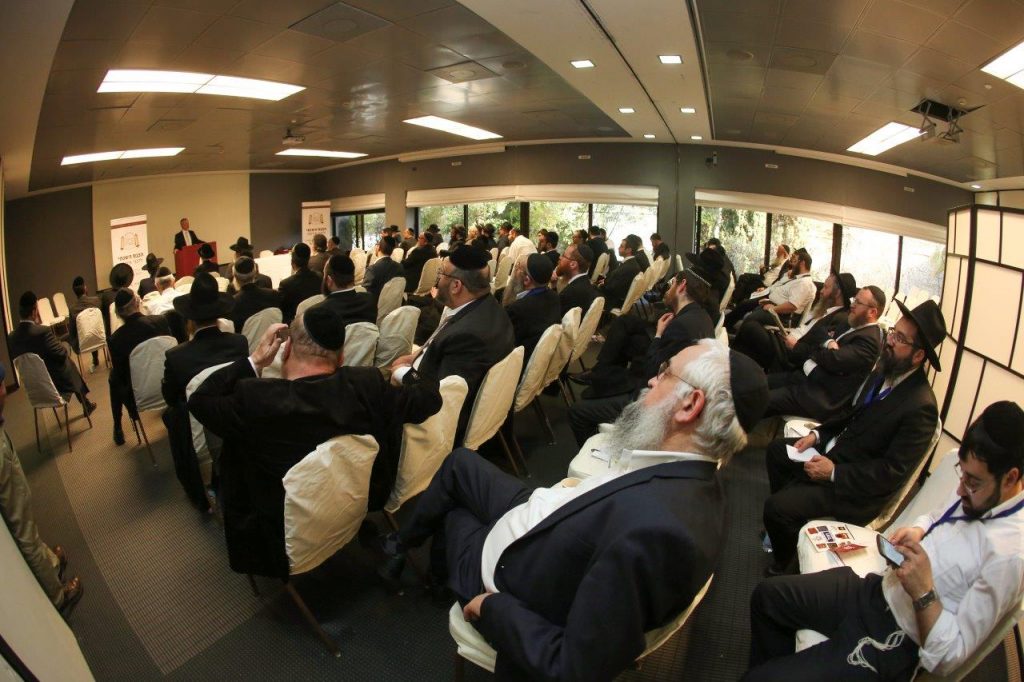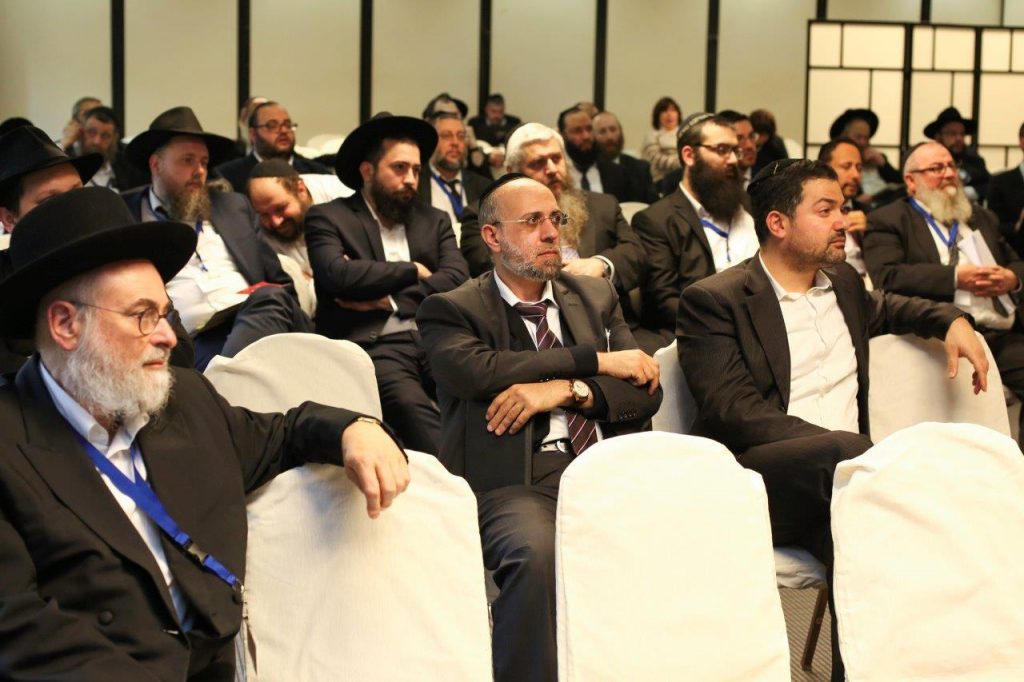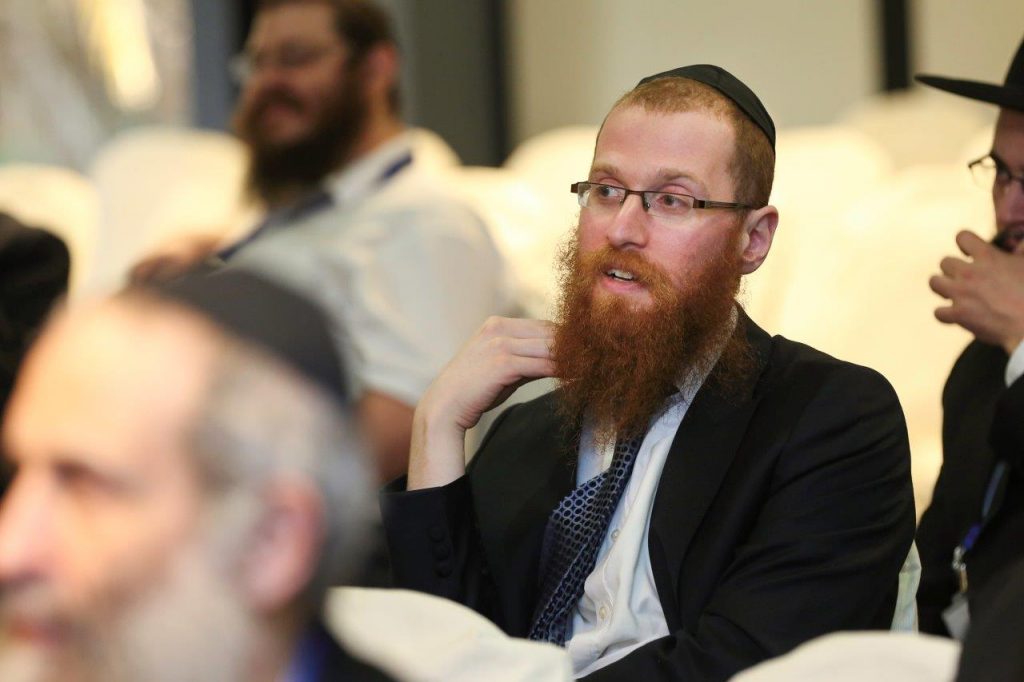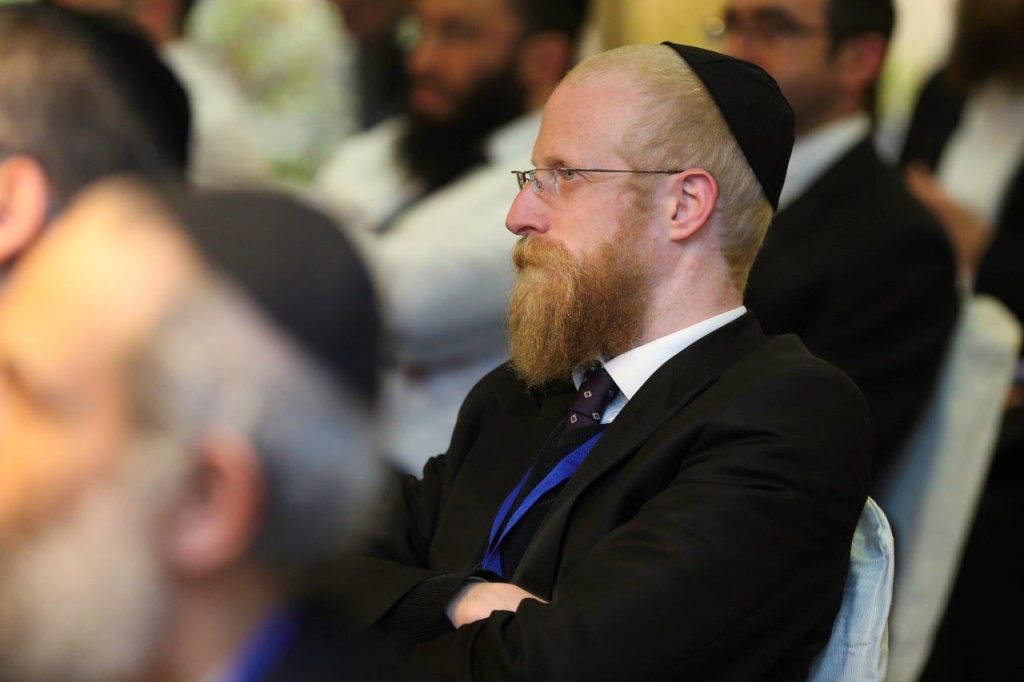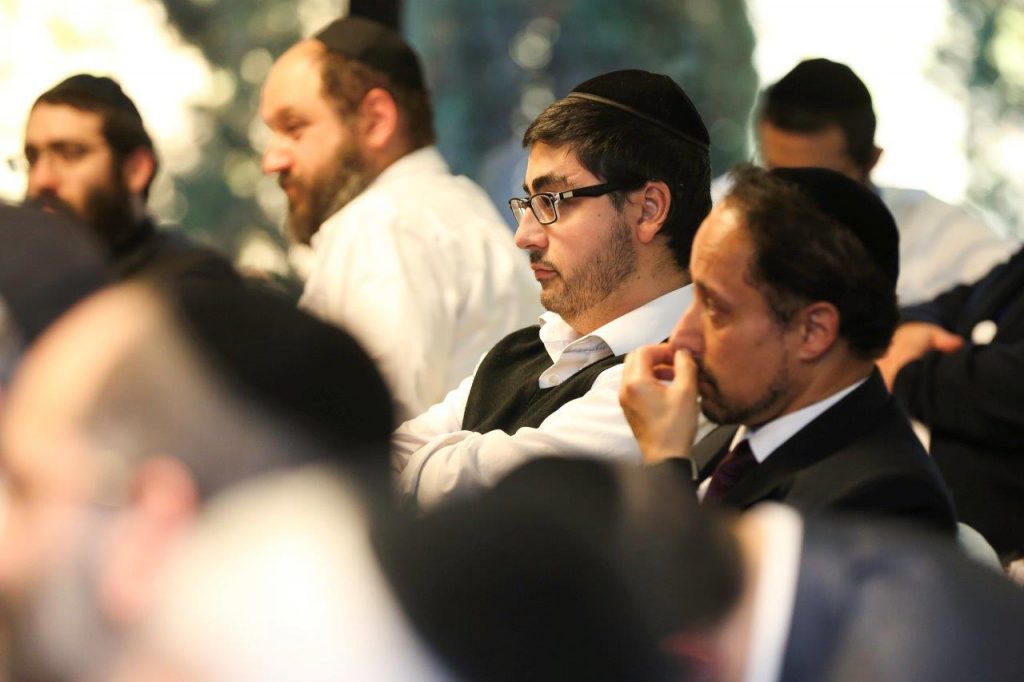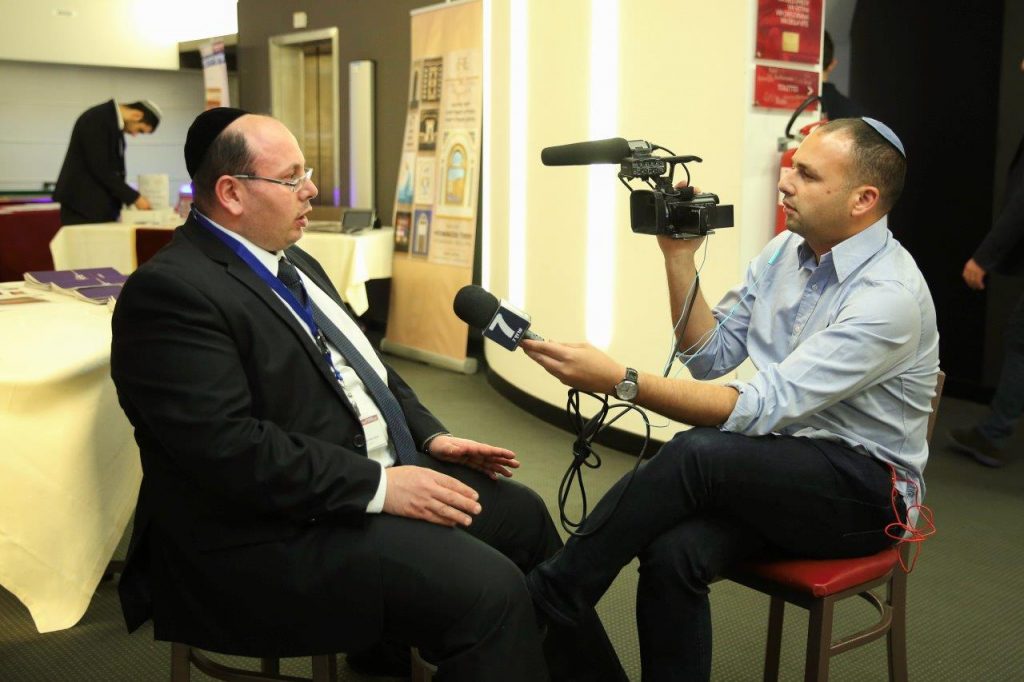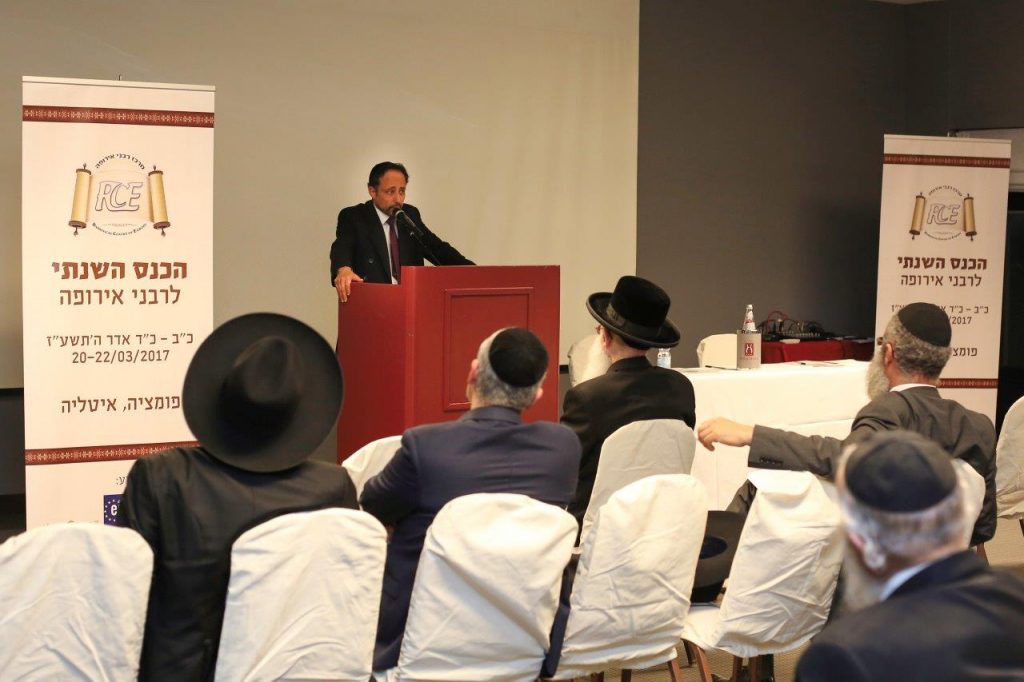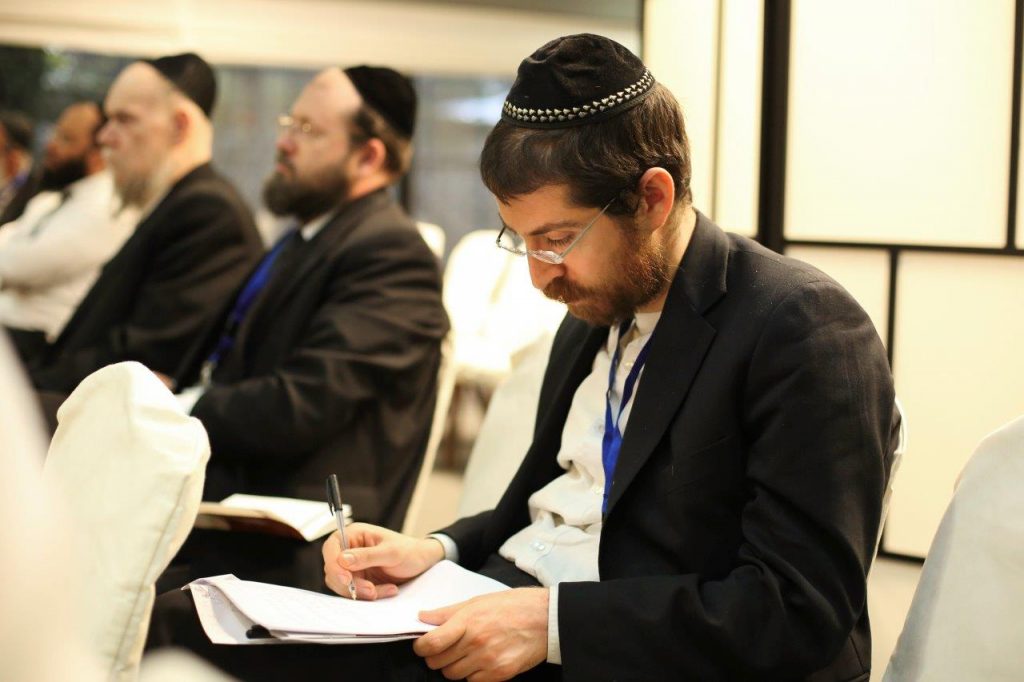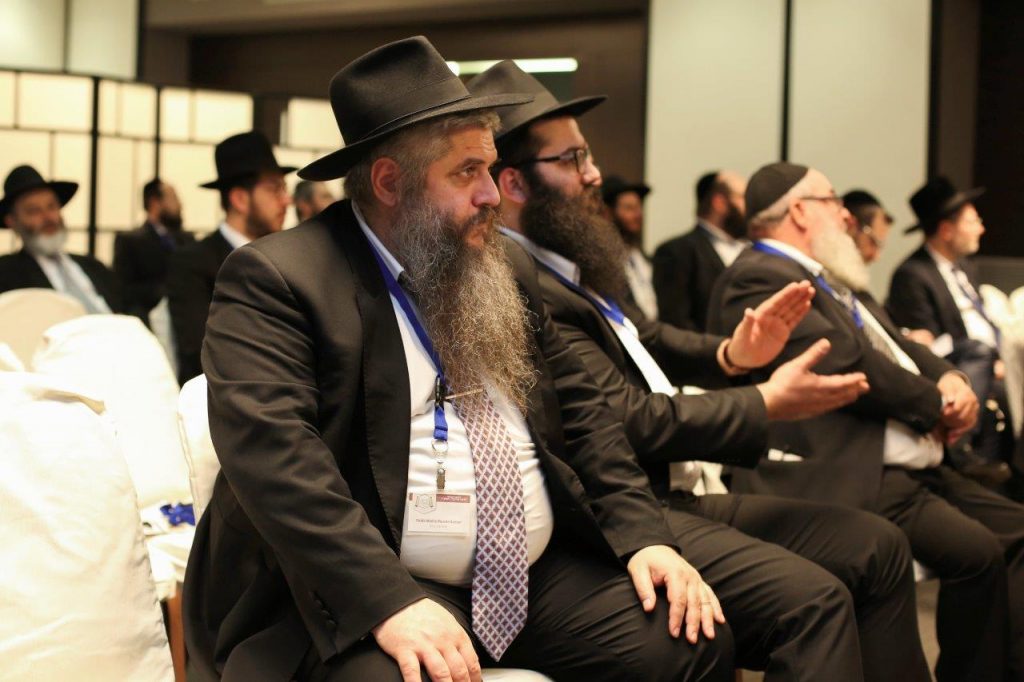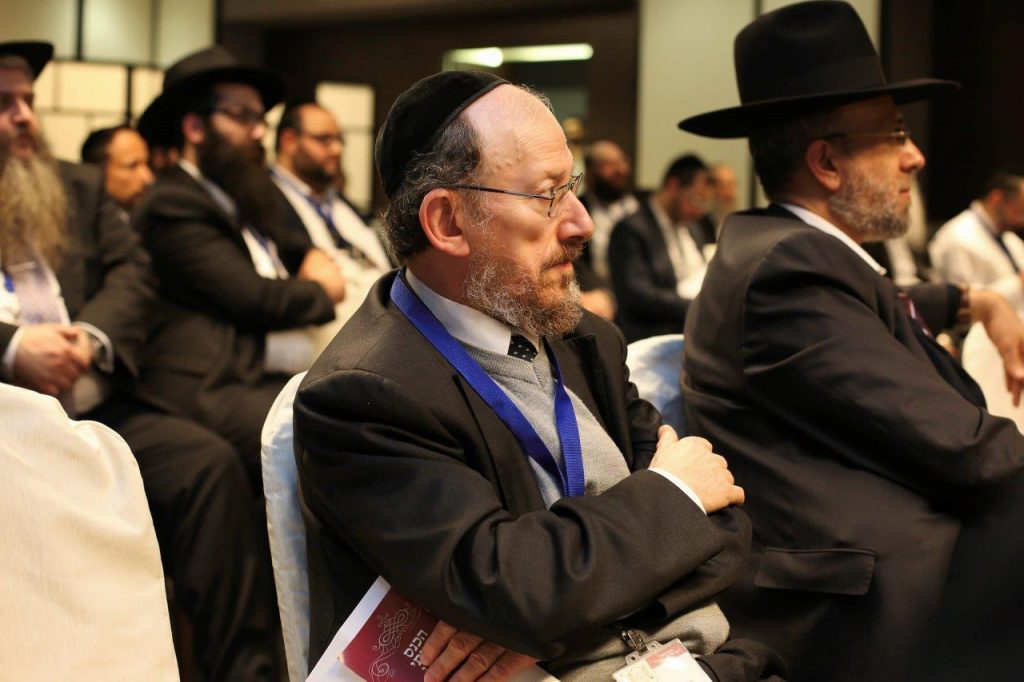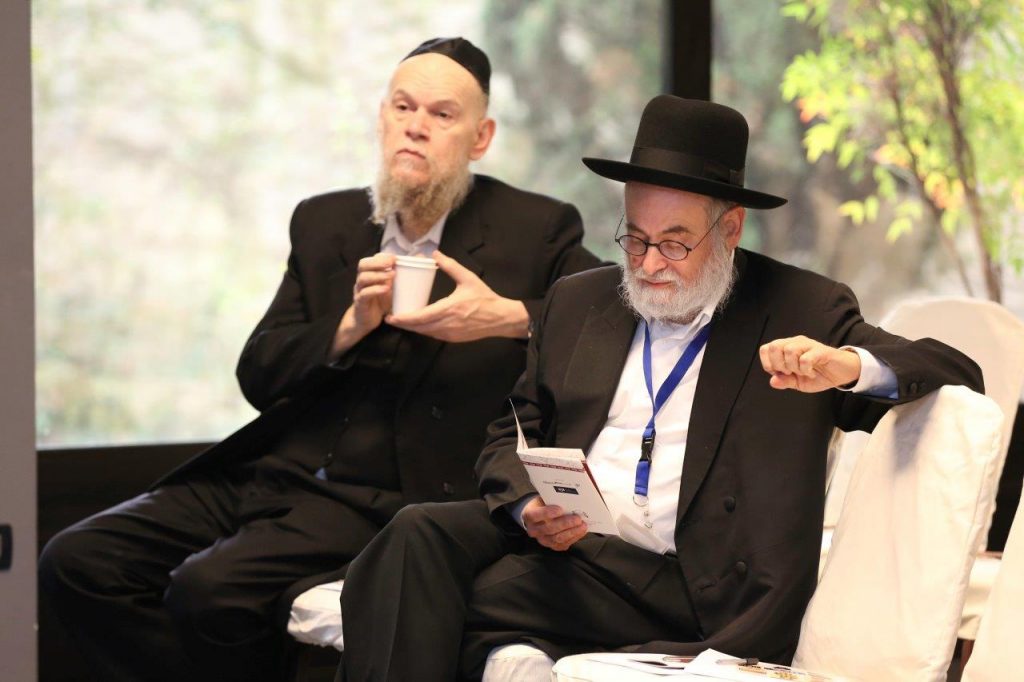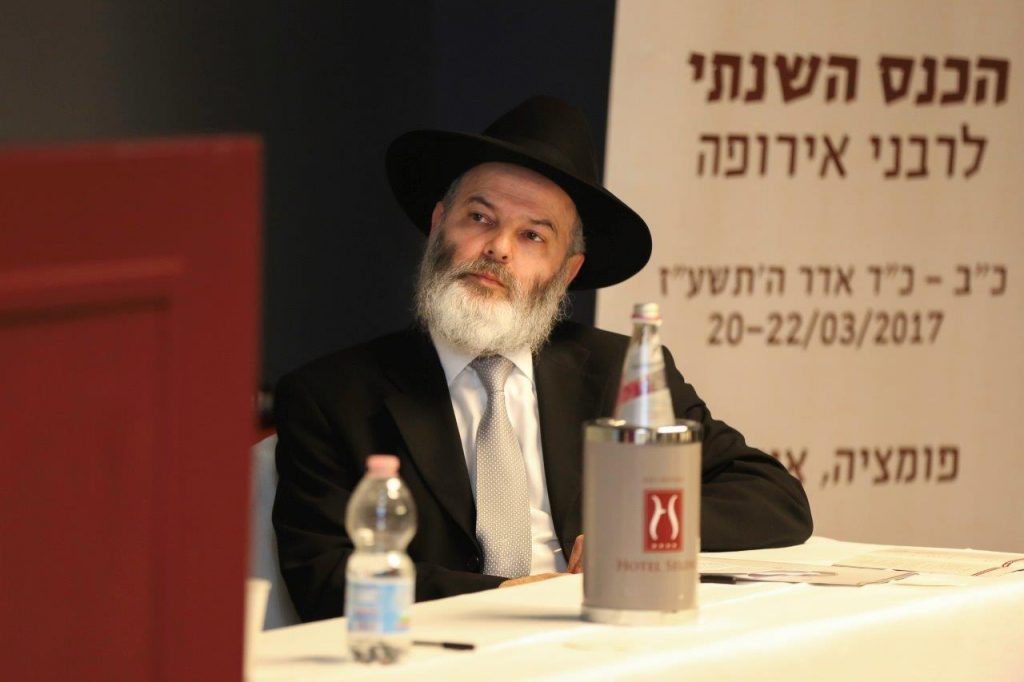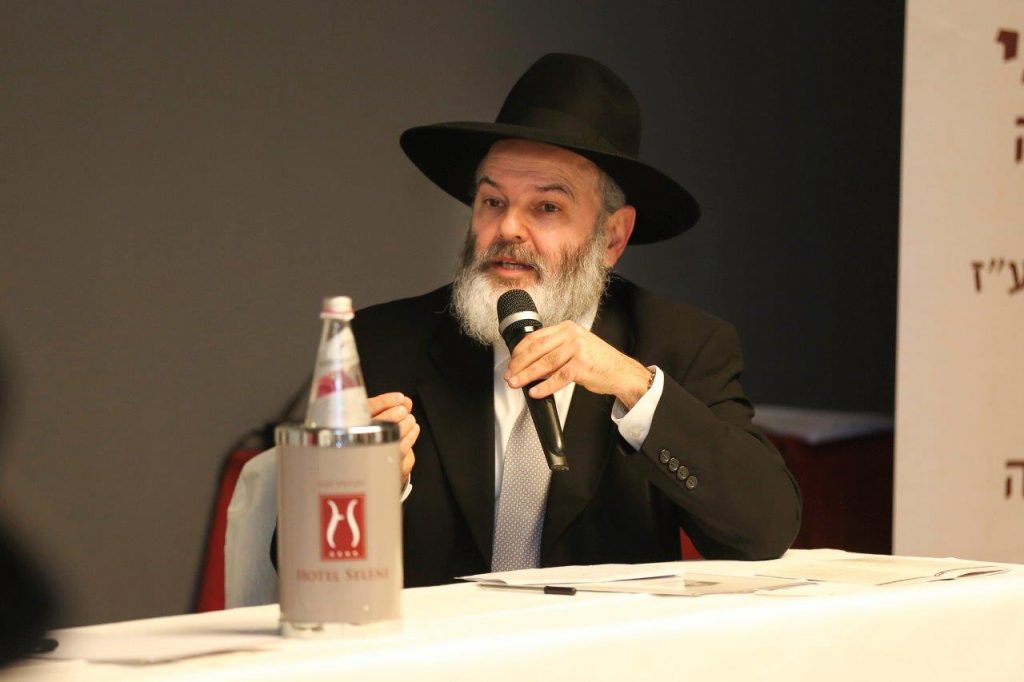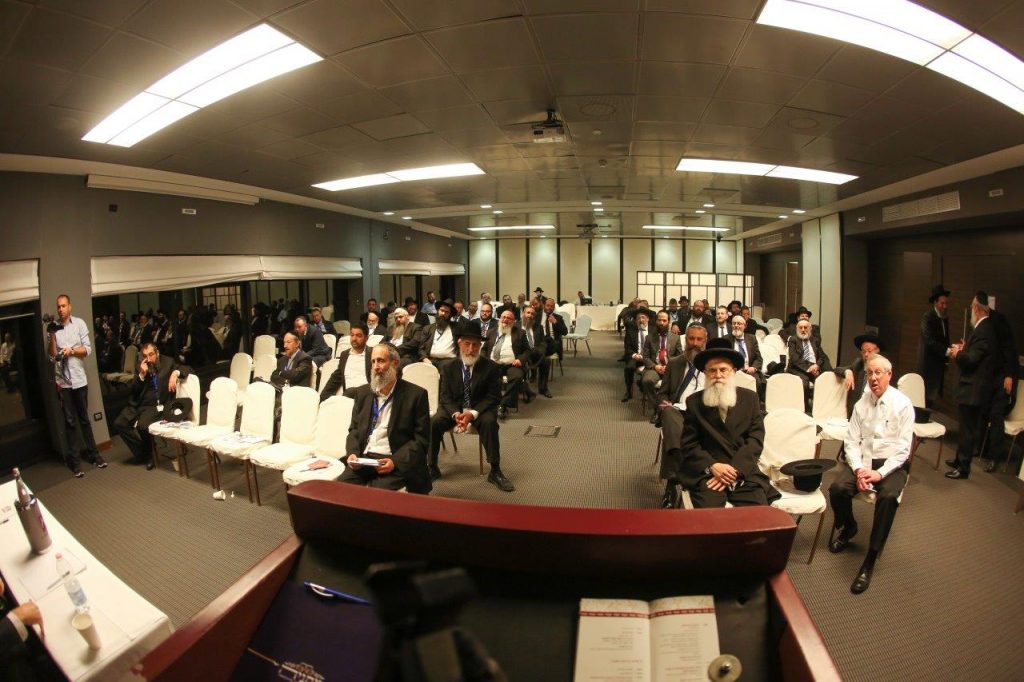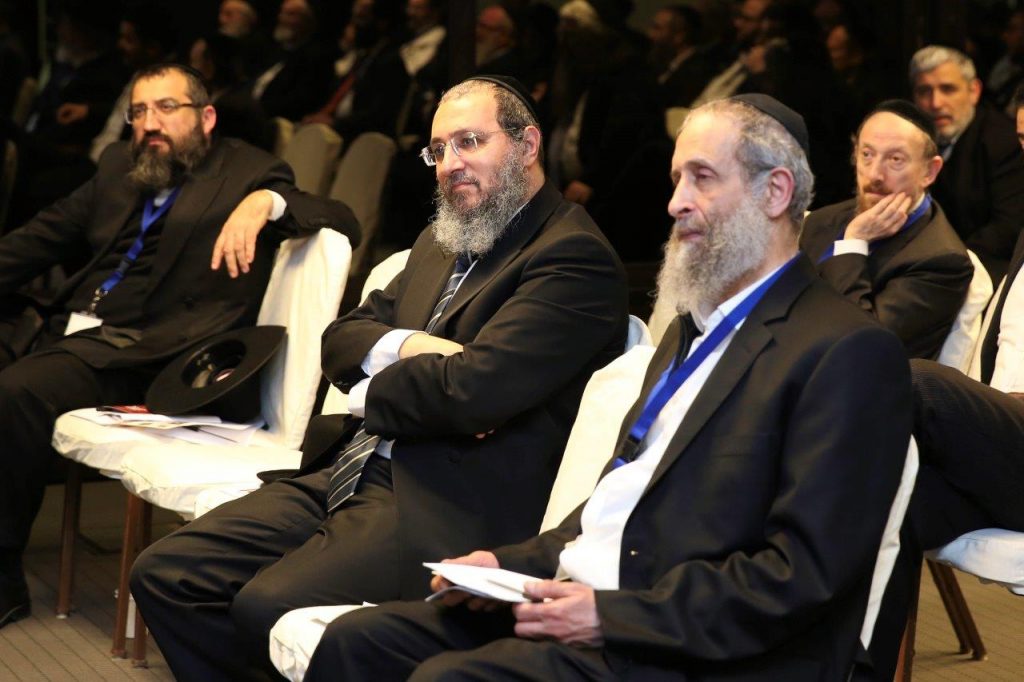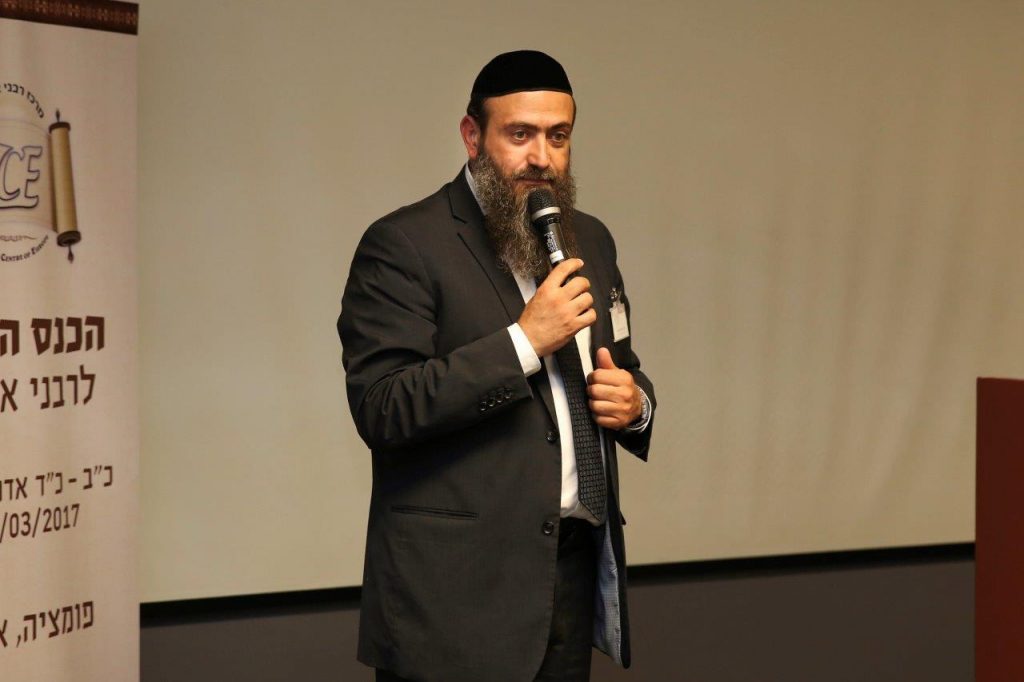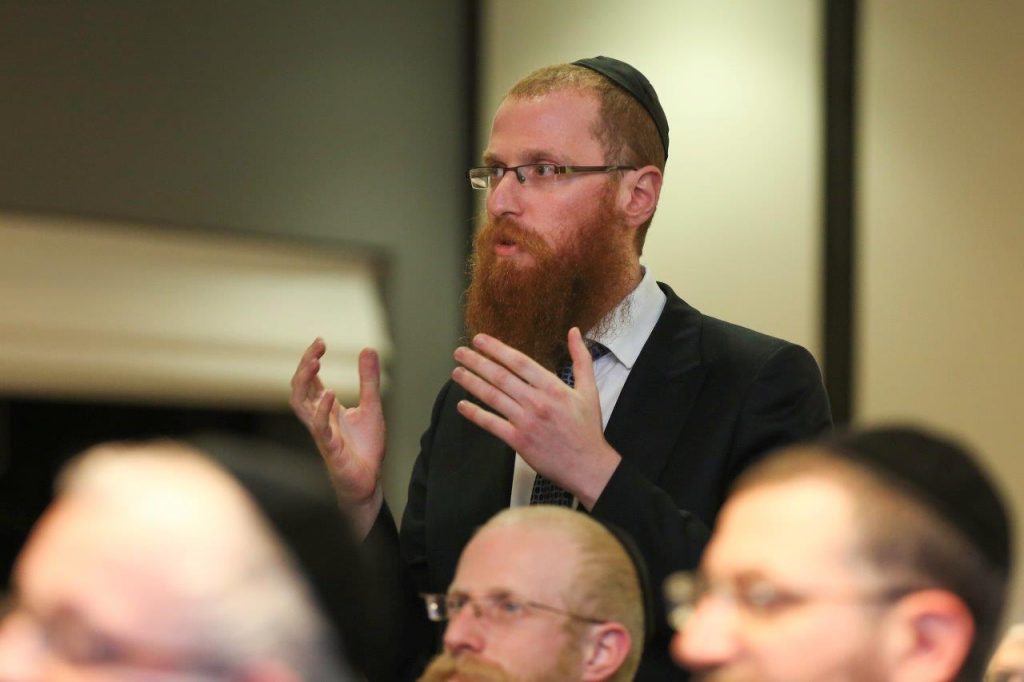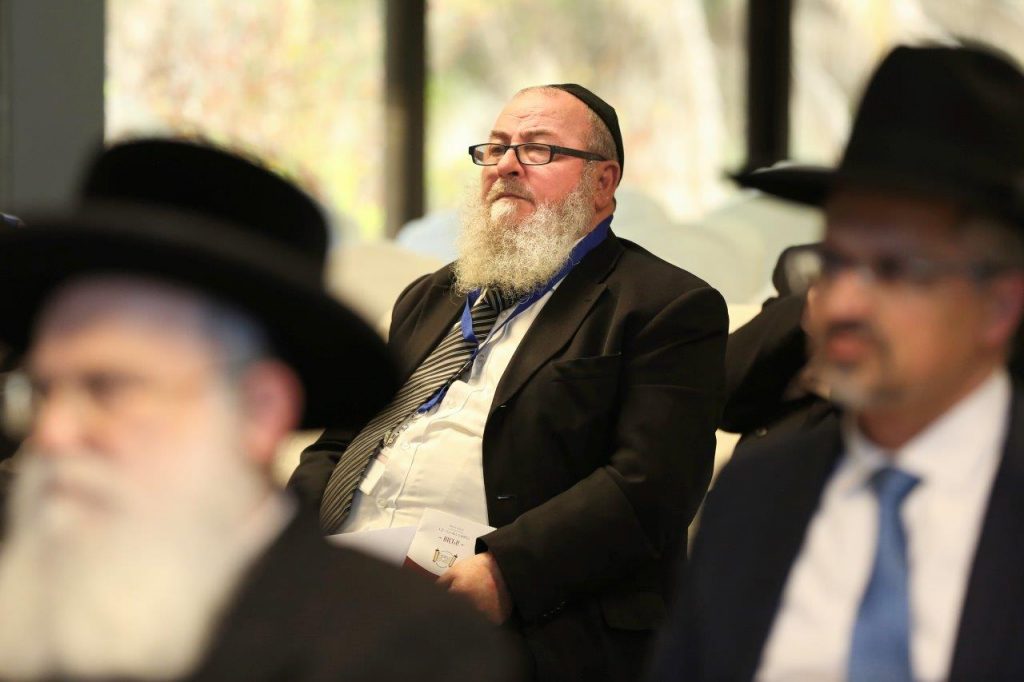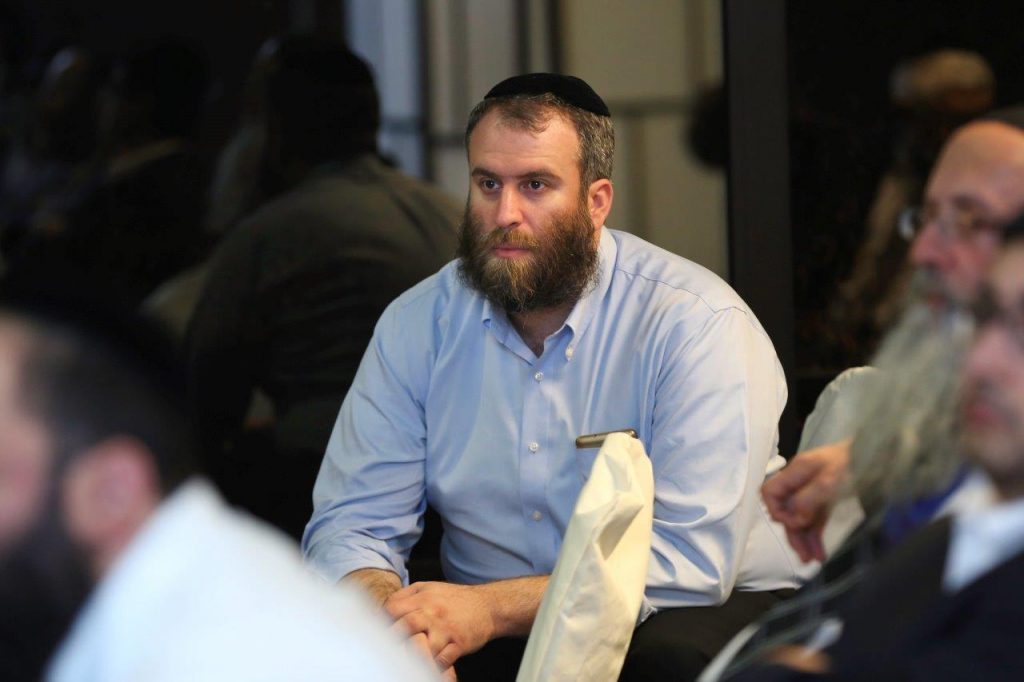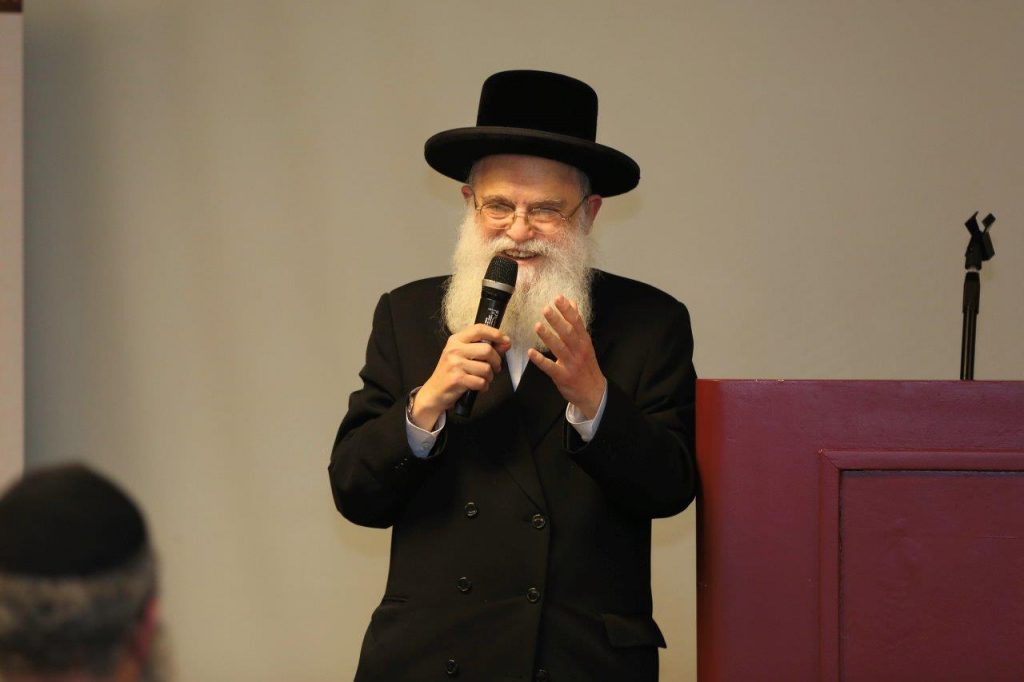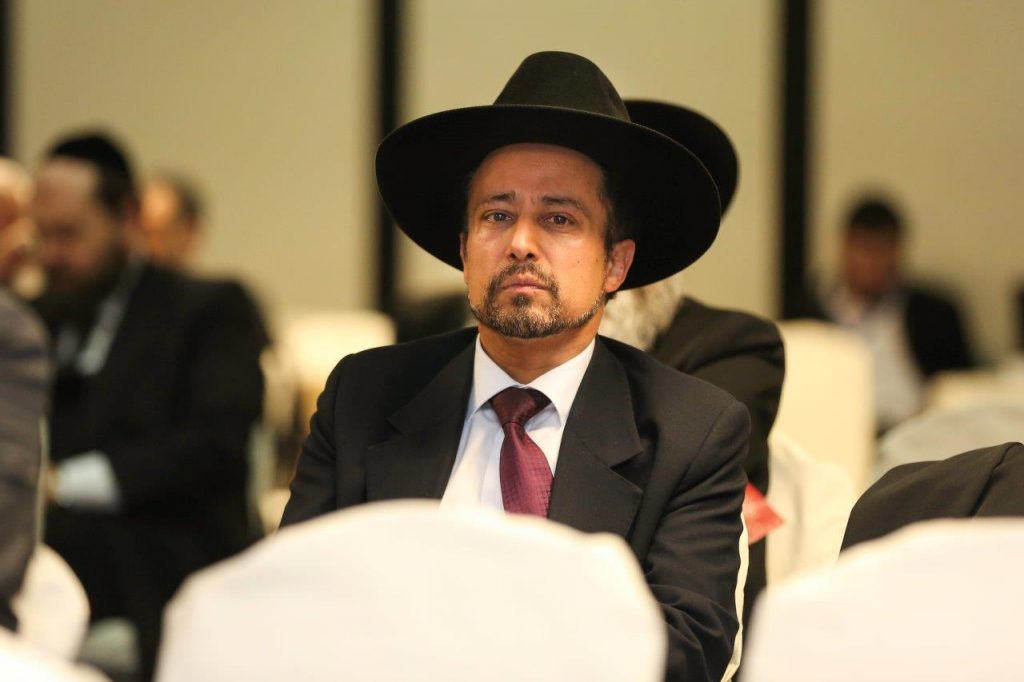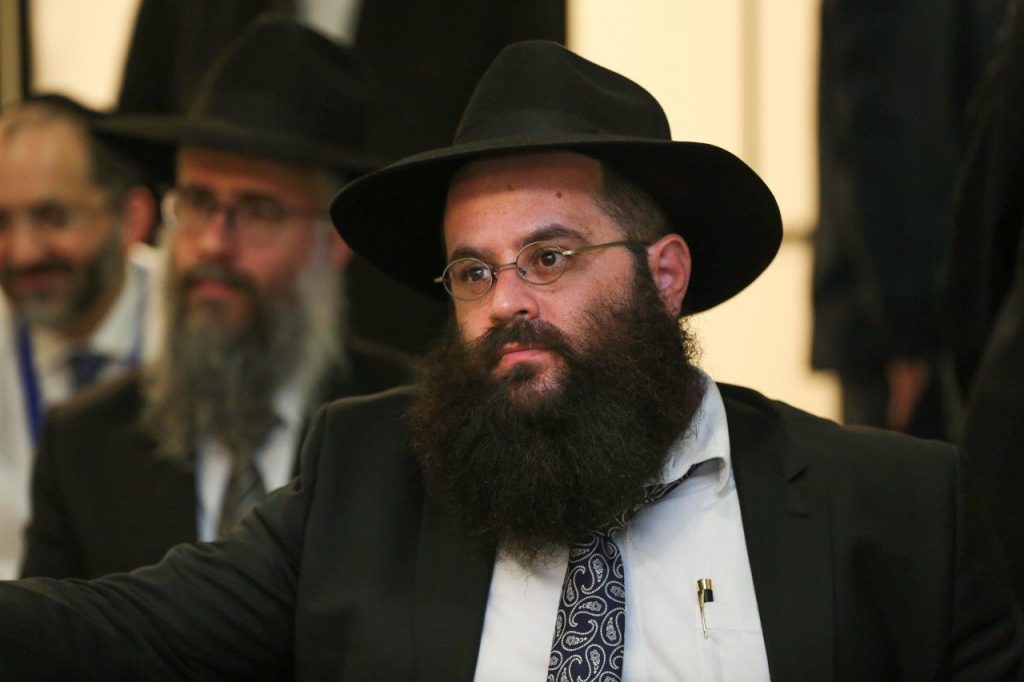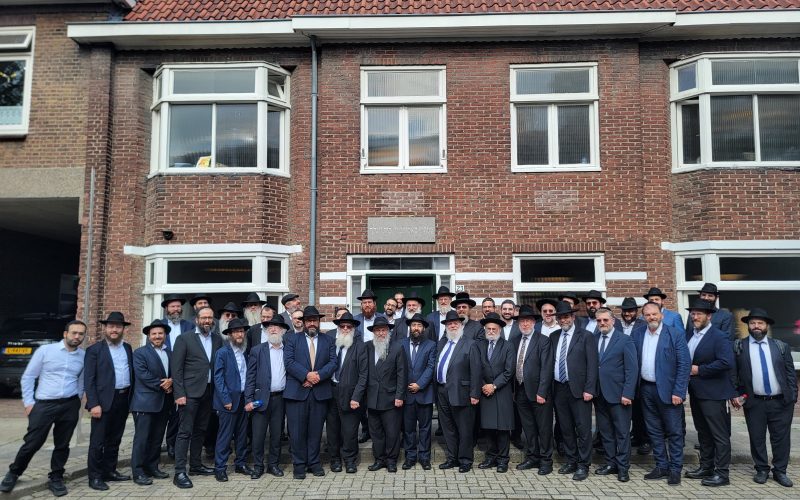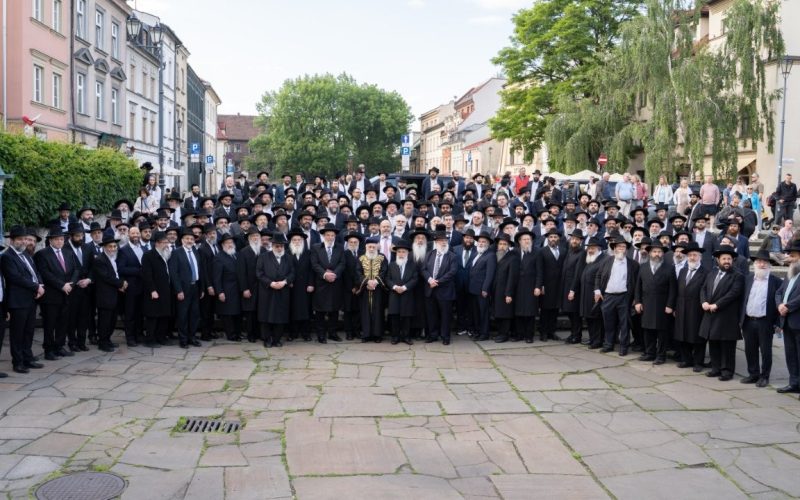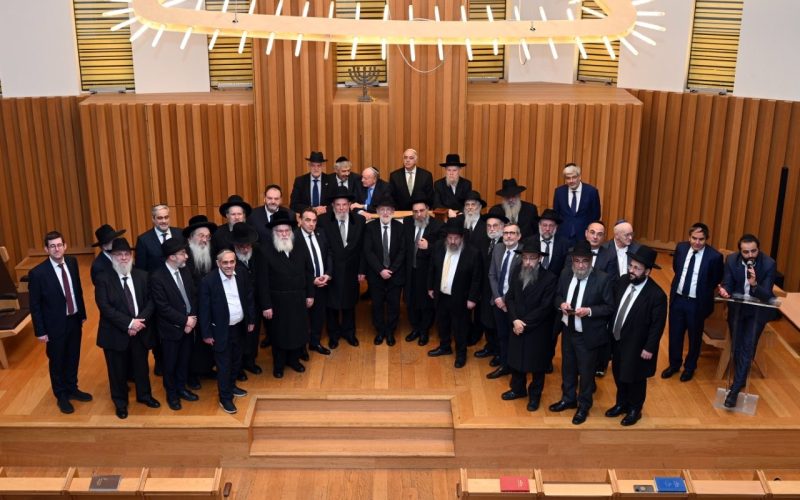The Annual Conference of RCE Rabbis Took Place This Year in Italy
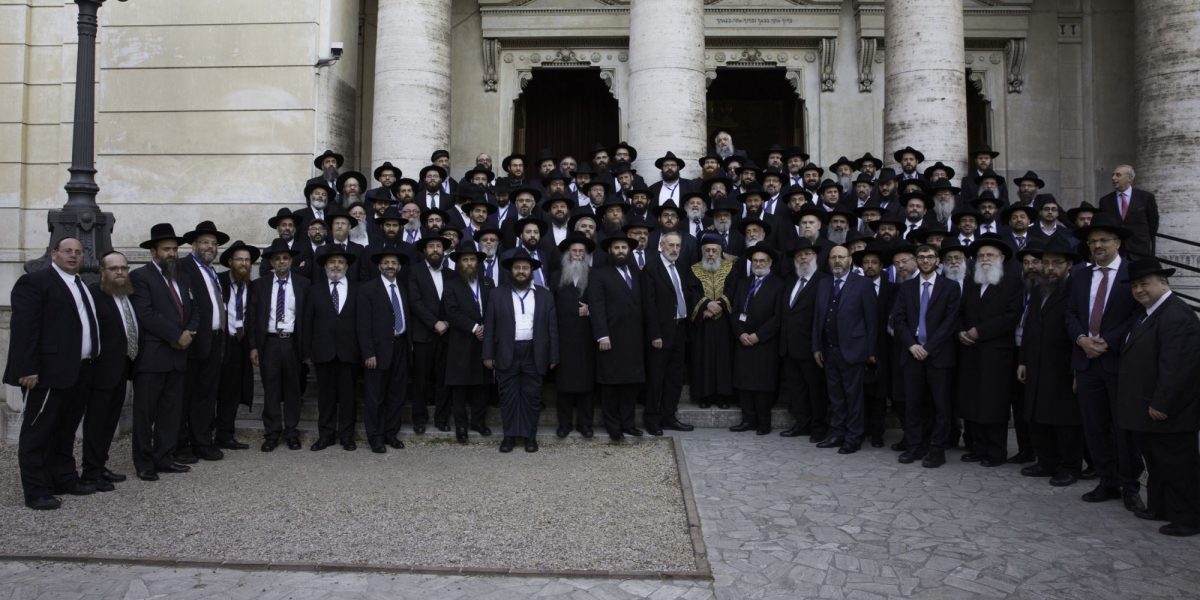
Over 200 rabbis from across the length and breadth of Europe arrived in Pomezia, a municipality in the metropolitan area of Rome, Italy, for the annual conference of the Rabbinical Centre of Europe. The conference, which ran from 22 Adar through 24 Adar (March 20-22), was arranged with the assistance of the Meromim Foundation and the Hulya Fund, part of the Matanel Foundation directed by Mr. Albert Aflalo.
This was the RCE’s sixteenth annual conference, which takes place in a different European country each year. A great many subjects pertinent to European rabbis were discussed during the three-day conference, following which the participating rabbis returned home invigorated and encouraged by the resolutions that had been decided upon. Those issues that have not yet been resolved will continue to be discussed by the esteemed members of the RCE’s presidium, and their final decisions are expected in the coming months.
The rabbis’ principal concerns were the rampant assimilation in Europe’s Jewish communities, and the rise of extreme right-wing parties as well as the birth of new ones, which already wield considerable influence in a number of European countries. The issues of Jews’ personal safety, better protection for community institutions and synagogues, and the freedom to maintain Jewish life in European cities were central topics of interest to the Jewish communities. A number of halachic questions were raised in connection to these issues during the conference.
The conference began with opening remarks by Rabbi Aryeh Goldberg, deputy director of the RCE. He explained that the subjects that would be addressed during the conference had been decided upon after surveying hundreds of European rabbis. The practical issues and accompanying halachic problems that were of highest concern to the rabbis helped to determine which topics would be discussed during the conference.
The RCE’s director Rabbi Menachem Margolin, in his opening remarks, promised that the rabbis attending would leave the conference equipped with professional projects and tools to assist them in reaching the hearts of Europe’s Jewish youth. “There is no doubt,” he asserted, “that this conference will bear blessed fruits that will benefit European Jewry.”
Rabbi Yitzchak Hazan, one of the community Rabbanim and Chabad emissary in Rome for the past forty years, related the history of the development of the local Jewish community, describing how he’d had to deal with assimilation, reaching the youth, and maintaining a vibrant Jewish community. He described the many uncertainties he faced and the solutions he had formulated. His account fascinated his listeners, both because of his vast experience of many years and because of the unique and extremely challenging nature of Rome’s Jewish community.
Rabbi Yehudah Breitkopf, who serves as Av Beis Din of the Tefutzot division of Israel’s Chief Rabbinate, spoke about the conversion process in the Diaspora, an issue that is at the forefront of the activities of Europe’s rabbis. The entire auditorium was filled with rabbis writing furiously in their notebooks as Rabbi Breitkopf listed halachic rulings and practical examples of cases dealt with by leading Poskim during the many years he has served in this capacity.
Rabbi Breitkopf requested that the rabbis adopt a policy that, after completing a candidate’s conversion, they would not award the convert his or her certificate testifying to the conversion until after a year has passed, to ensure that the candidate had continued to live as a Jew and observe the mitzvos.
Rabbi Breitkopf related the story of an outstanding student in the Ponovezh Yeshivah several decades ago, ranked among the top five students in the yeshivah at that time. At one point, it was discovered that this young man was actually not Jewish according to halachah. After explaining the situation to him, the Rosh Yeshivah suggested that he convert as soon as possible. To his amazement, the young man decided not to convert, explaining that now that he had a choice, he was not interested in committing to keep all 613 mitzvos.
When Rabbi Breitkopf finished speaking, the rabbis remained for a long time, presenting situations that they were dealing with at the time and asking him to share his views and advice on each case.
Rabbi Avraham Moshe Halperin, one of the directors of the Institute for Science and Technology in Halachah, who serves as Av Beis Din of Badatz Ungvar, delivered several lectures over the course of the conference. His subject was the use on Shabbos of devices and home appliances that employ modern technology. In each of his lectures he displayed mastery of the halachah and deep understanding of modern technology. He gave several examples of how someone who is unaware of how things work might unwittingly desecrate Shabbos by performing acts strictly forbidden by the Torah. For example, if someone turns on a water faucet in a high-rise building, he might be activating an electric pump. The use of an air conditioner or home heating system could also be quite problematic, he explained.
The Rabbanim, who are quite fluent in the halachos of Shabbos, were sometimes surprised and perplexed by these revelations. Several times, a fiery debate ensued among the participants.
The well-known lecturer Rabbi Mordechai David Neugroschel, chairman of “Judaism from a Different Perspective,” held the rabbis spellbound as he spoke about battling assimilation and explaining various Jewish concepts to the uninitiated. He discussed at length a number of situations that the Rabbanim in attendance described to him, and he explained clearly and thoroughly how to deal with them in a manner that would appeal to both youths and adults, sparking their interest in Judaism and Jewish life.
On the second morning of the conference, the rabbis found themselves and the Selene Hotel, where they were staying, surrounded by dozens of policemen and undercover security personnel, preparing for the arrival of Israel’s Chief Rabbi, the Rishon LeTzion Harav Yitzchak Yosef. The security personnel directed that the hotel be hermetically sealed until ten in the morning, when the Chief Rabbi was scheduled to arrive. All the rabbis remained locked in their hotel rooms until then. The police brought bloodhounds to search all the rooms for any concealed weapons or explosives. After a lengthy discussion, the police were convinced that the hotel guests were community rabbis; the precautionary limitations were relaxed somewhat and the bloodhounds remained outside the hotel, which was surrounded by soldiers, as the RCE administration had arranged in advance with the Italian police.
When Harav Yitzchak Yosef entered the auditorium he was greeted with enthusiastic singing in his honor. The RCE’s deputy director Rabbi Aryeh Goldberg introduced him and thanked him for having traveled so far to participate in the conference.
The subject of the Chief Rabbi’s lecture was amirah l’nochri – instructing non-Jews to perform melachah on Shabbos, and modern technology. He introduced the subject with an incident that he had experienced while spending a Shabbos in Bnei Brak.
“I was walking down the street,” he began, “when I noticed a lot of people shouting. When I tried to find out what was going on, I was drawn into an intense halachic discussion. The bystanders explained to me that a disabled IDF veteran lived nearby, and the Ministry of Defense had given him a trained monkey to help him out. The animal knew how to turn the lights on and off, to open doors and to perform numerous other helpful tasks.
“On that Shabbos, someone upset the monkey and it and ran out of the house and into the street. It was jumping from rooftop to rooftop and swinging through the trees of the Ramat Elchanan neighborhood. Everyone was in an uproar, the children were thrilled, and the veteran, who happened to be a Sephardic Jew, was pleading for help.
“Soon afterward I met Harav Yitzchak Zilberstein, the Rav of that neighborhood, and we began discussing this issue. He asserted that since the Sephardic tradition is to be quite stringent about the prohibition of instructing a non-Jew to perform melachah on Shabbos, this invalid was not allowed ask a non-Jew to catch his monkey and bring it back to him. If he were an Ashkenazic Jew, he could follow the lenient opinion and ask a non-Jew for his services in this case.
“I suggested to Rabbi Zilberstein, who is Ashkenazic, that he go himself to ask a non-Jew to retrieve the wayward animal, but he refused, saying that he would not be someone else’s ‘Shabbos goy.’ In the end, someone brought some beets, and the monkey, which loved beets, came down and followed that person who was holding the beet back into the invalid’s home.”
The Chief Rabbi then launched into a deep discussion of the intricacies of the halachos pertaining to amirah l’nochri. After the lecture, he spent a long time fielding questions from the Rabbanim on a variety of halachic topics.
That afternoon the rabbis visited the city’s Great Synagogue, the former Jewish ghetto, and Rome’s Jewish museum, where they viewed an enormous collection of priceless, centuries-old items. These Judaica ornaments and synagogue paraphernalia testify to a long history of a prestigious community. Afterward, the rabbis gathered to hear greetings from Rabbi Binyamin Jacobs, Chief Rabbi of the Interprovincial Chief Rabbinate of the Netherlands and member of the council of European Rabbis, from the RCE’s director Rabbi Menachem Margolin, and from Rabbi Alfonso Arbib of Milan, chairman of the Council of Italian Rabbis.
The day’s events climaxed in the evening (on 23 Adar), when hundreds of Rome’s Jews, young and old, came to the ancient Great Synagogue to meet the Rishon Letzion Rabbi Yitzchak Yosef, and the other European Rabbanim, and to witness the presentation of an honorary plaque to philanthropist Alexander Moskowitz. The great excitement over the arrival of Harav Yitzchak Yosef was accentuated by the fact that no Chief Rabbi of Israel had visited Italy in over fifty years, ever since the visit of Rav Yitzchak’s father, Harav Ovadiah Yosef, zt”l. This was pointed out by Rome’s Chief Rabbi Shmuel Riccardo Di Segni in his remarks at the event.
The evening was designated as a tribute by the city of Rome to the European Rabbanim who had come from afar to attend the conference. Rome’s Jewish community gathered together with ambassadors from other countries and Italian government officials, in a show of appreciation for the rabbis and for the directors of the RCE.
The program began with tefillas Minchah in the magnificent, ancient Great Synagogue, located in central Rome, after which Chief Rabbi Yitzchak Yosef gave his enthusiastic blessings to the rabbis for their dedication and sense of mission. He likewise blessed the generous donors who support the RCE’s many activities. He emphasized the importance of each community’s having a rabbi who can speak the language of the people and teach them to love Judaism and the mitzvos, and to guide them toward ever higher achievements.
He related how his mother, Rabbanit Margalit Yosef, a”h, wanted to cancel her engagement to Harav Ovadiah Yosef, zt”l, only a week before their wedding. She was complaining that he spent all his time discussing Torah subjects with her father. Rav Ovadiah then explained to her that he everything he did was what the halachah demands, and that he planned to publish many sefarim and rule on many halachos that would one day illuminate the lives of the entire Jewish nation. This persuaded her to go ahead with the plans for their marriage.
“We see, then,” Rav Yitzchak concluded, “that my father, zt”l, had his entire career planned out when he was quite young. He set his goals and then spent the rest of his life pursuing them, composing his dozens of sefarim that today serve as the cornerstone of halachic ruling.”
Rabbi Shmuel Di Segni, Chief Rabbi of Rome, spoke next, describing the powerful, rich history of Rome’s Jewish community. He discussed the strong connection between the city’s leadership and the Yosef family, including Harav Ovadiah Yosef, zt”l, and his son and successor, Harav Yitzchak Yosef, shlit”a.
Rabbi Michael Rosenblum, Rav of the European Synagogue in Brussels, pointed out that the entry for this date in the sefer Yom Yom deals with community rabbis, who are the Jewish people’s guides through life.
The various Rabbanim who spoke at the conference all mentioned the need for more support for the Jewish communities and for increased security measures.
A special presentation was made to philanthropist Alexander Moskowitz for his active, ongoing support for the development of Europe’s Jewish communities. The plaque was presented by RCE director Rabbi Menachem Margolin along with members of the RCE’s presidium, with the participation of dozens of European rabbis, who stood in designated places all across the vast hall of the synagogue. The entire community was moved to tears by the momentous event, especially since it was graced with the presence of the Chief Rabbi of Israel.
The evening ended with an emotional speech by honoree Alexander Moskowitz, who thanked Hakadosh Baruch Hu for His abundant kindness. He described how his emotions quickened upon seeing rabbis arriving from all corners of Europe, realizing that they spend the entire year tirelessly bolstering Judaism in their communities, with great self-sacrifice.
“I do very little in comparison to the great blessings that the Creator bestows on me,” he asserted. He called upon everyone present to continue to carry the banner of Judaism with pride, without fear or hesitation, and to spread its light throughout the Diaspora.
On the final day of the conference – Wednesday, 24 Adar – the central theme was the fundamental principles of the halachos pertaining to Pesach. Rabbi Gavriel Tzinner, author of the famed series Nitei Gavriel and one of our generation’s leading Poskim, spoke on the topic.
That evening the three-day conference drew to a close, and over 200 European rabbis returned to their communities, equipped with much valuable knowledge for dealing with the vital issues of the day.
